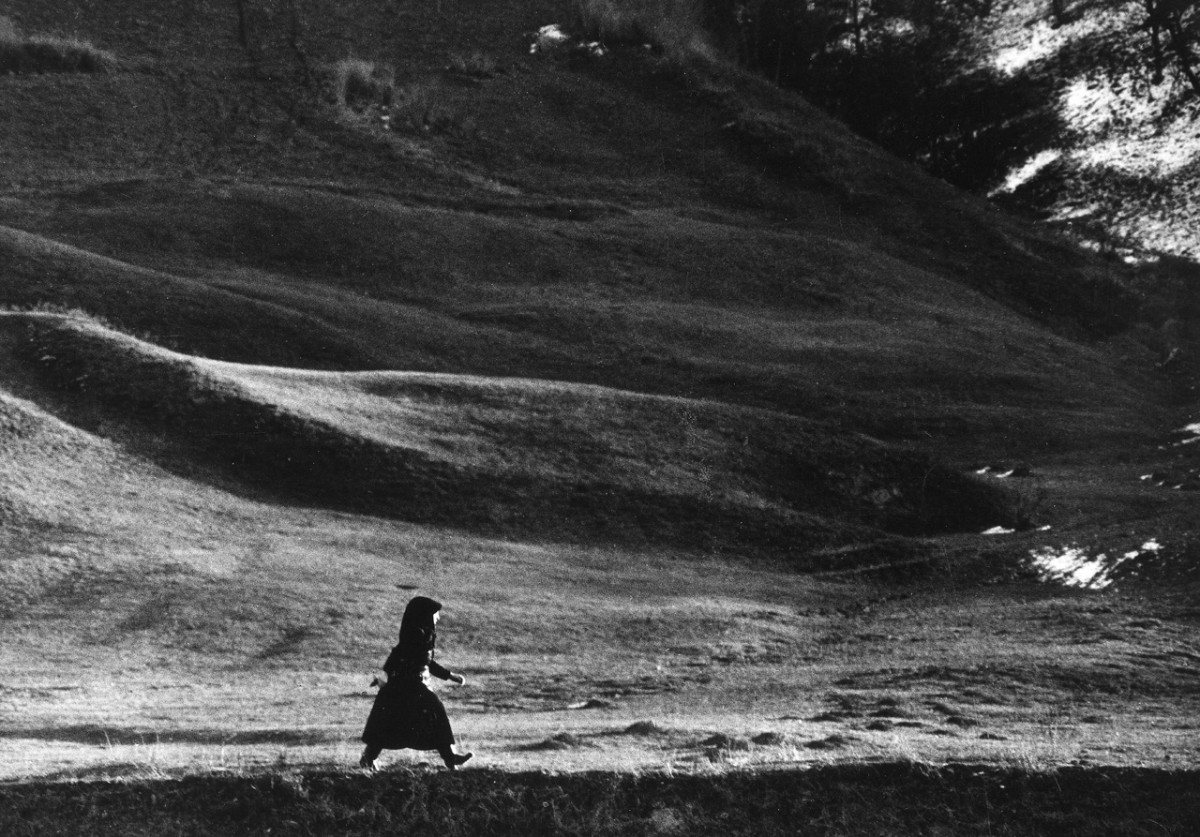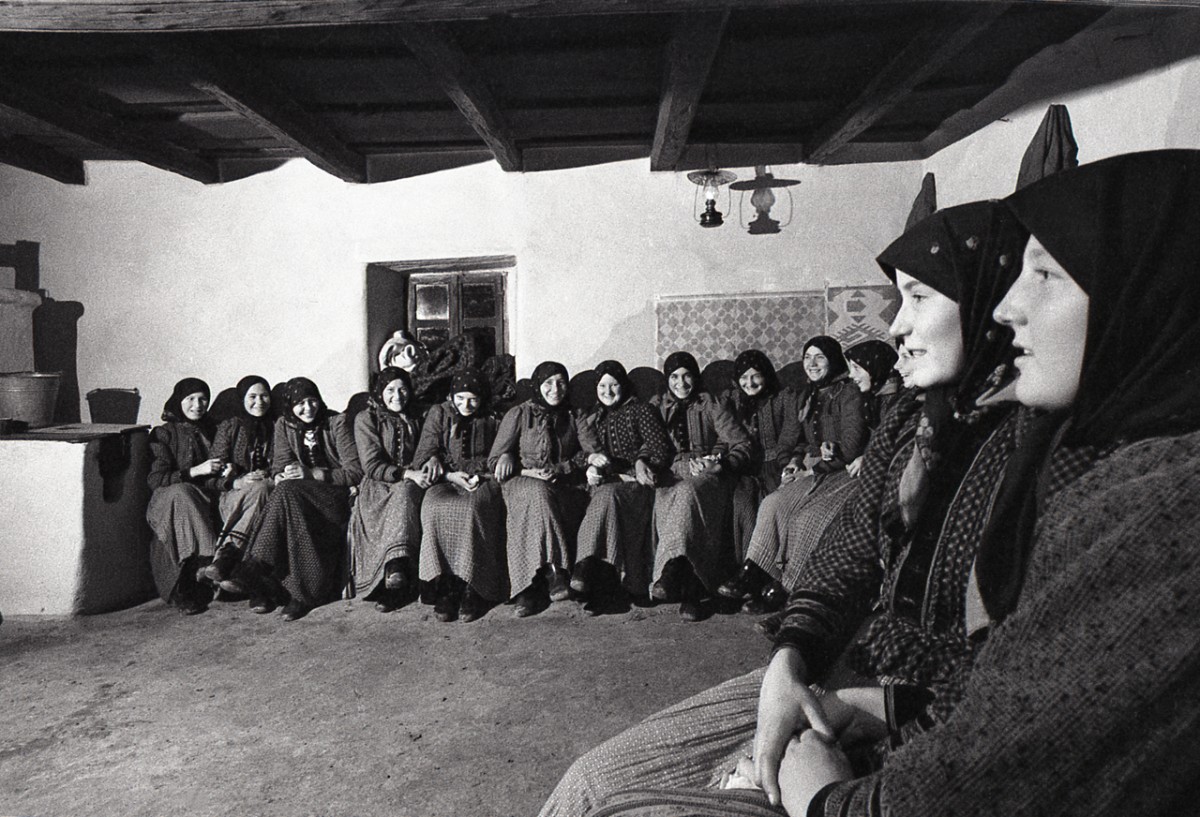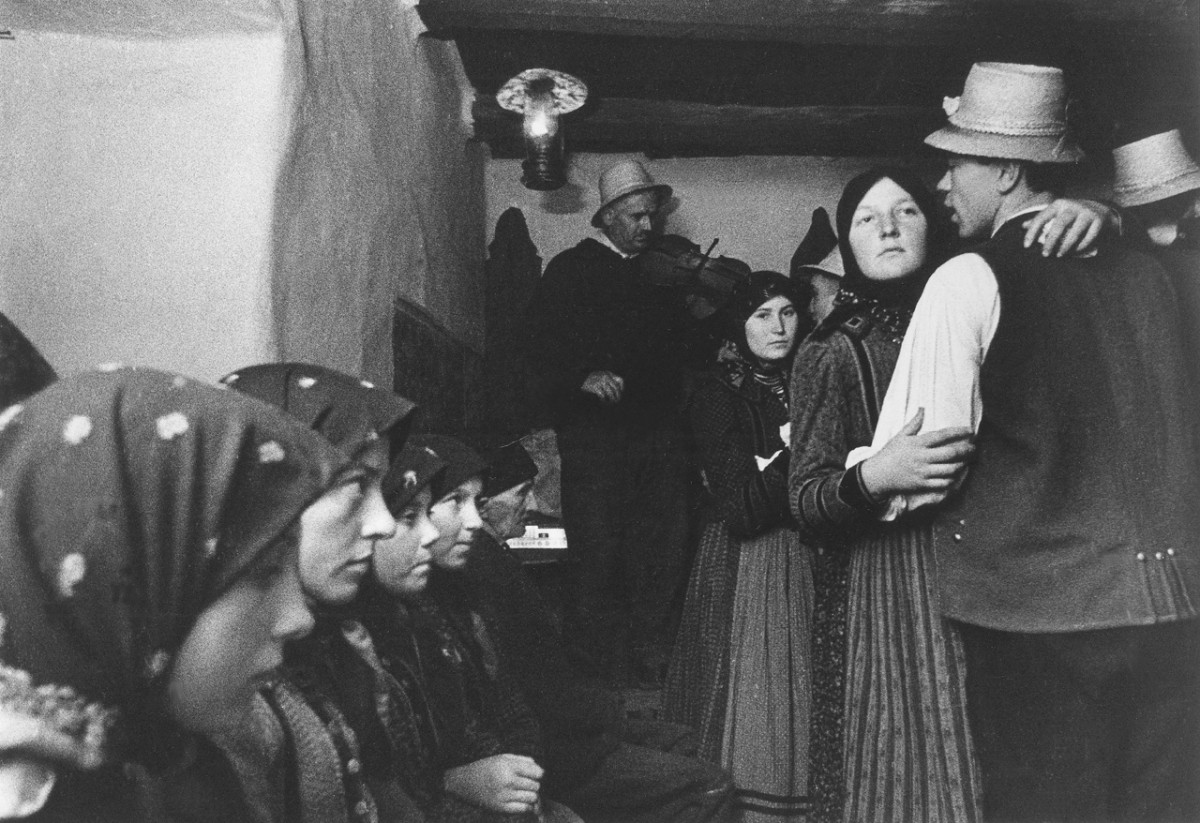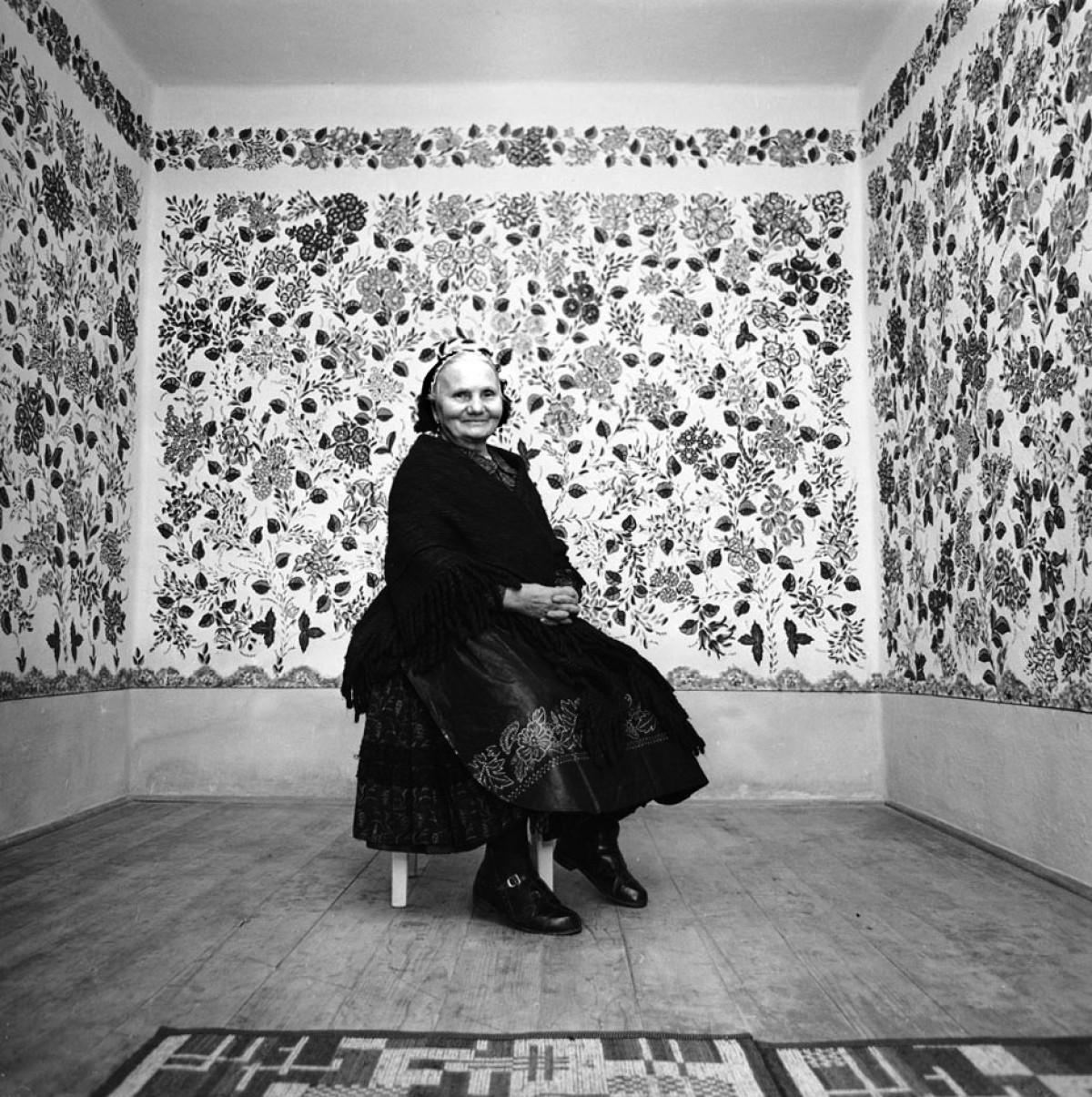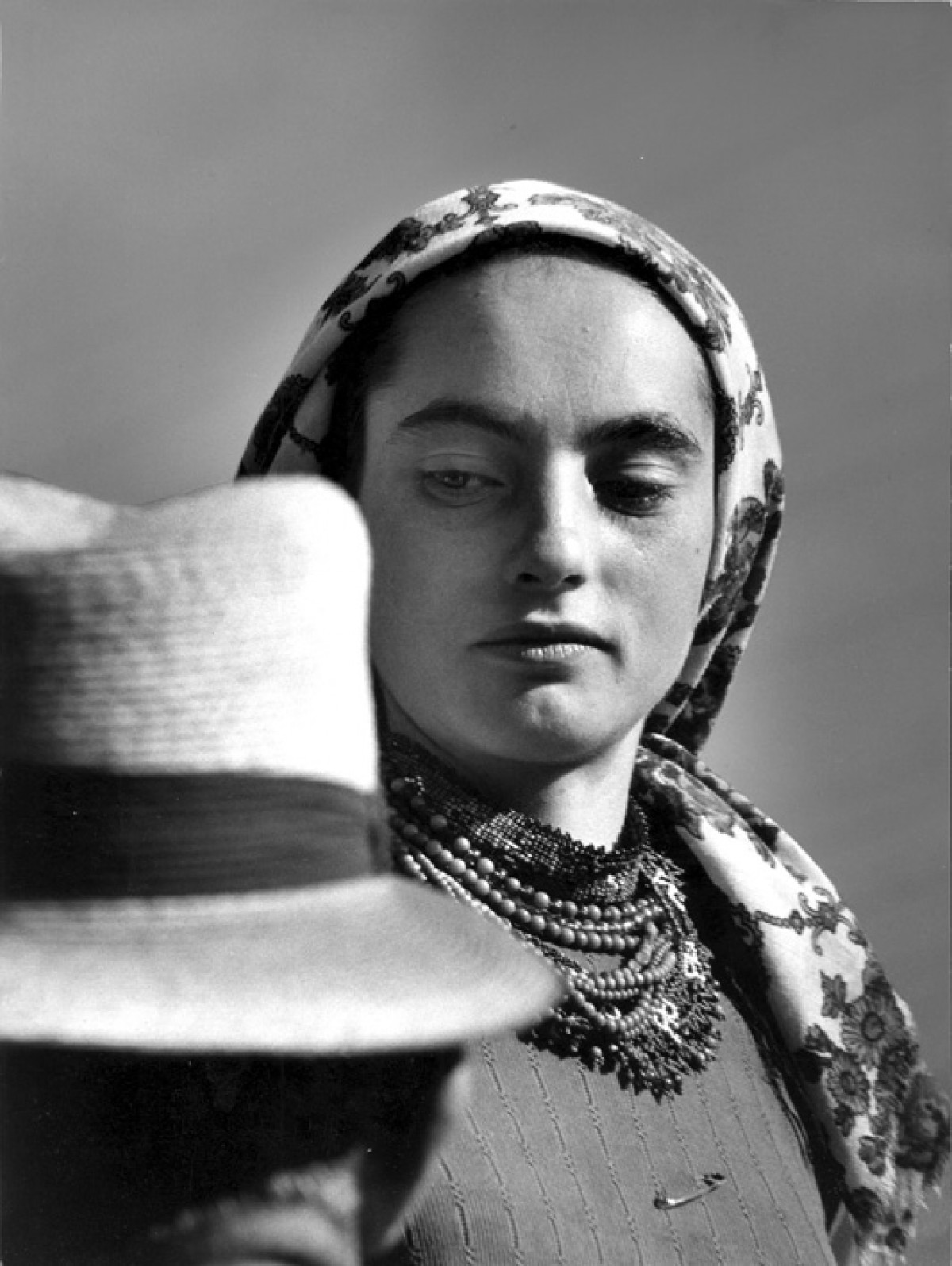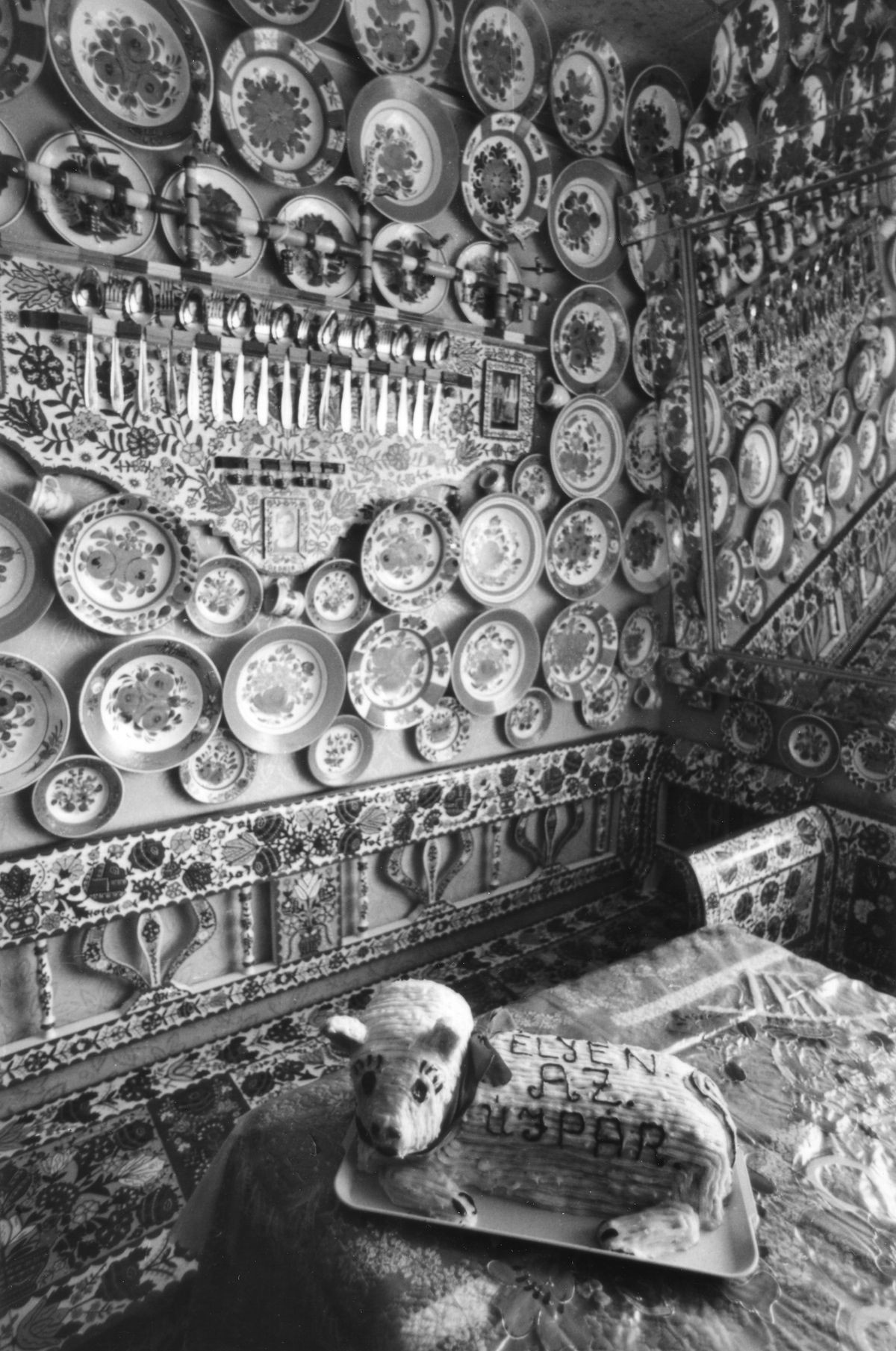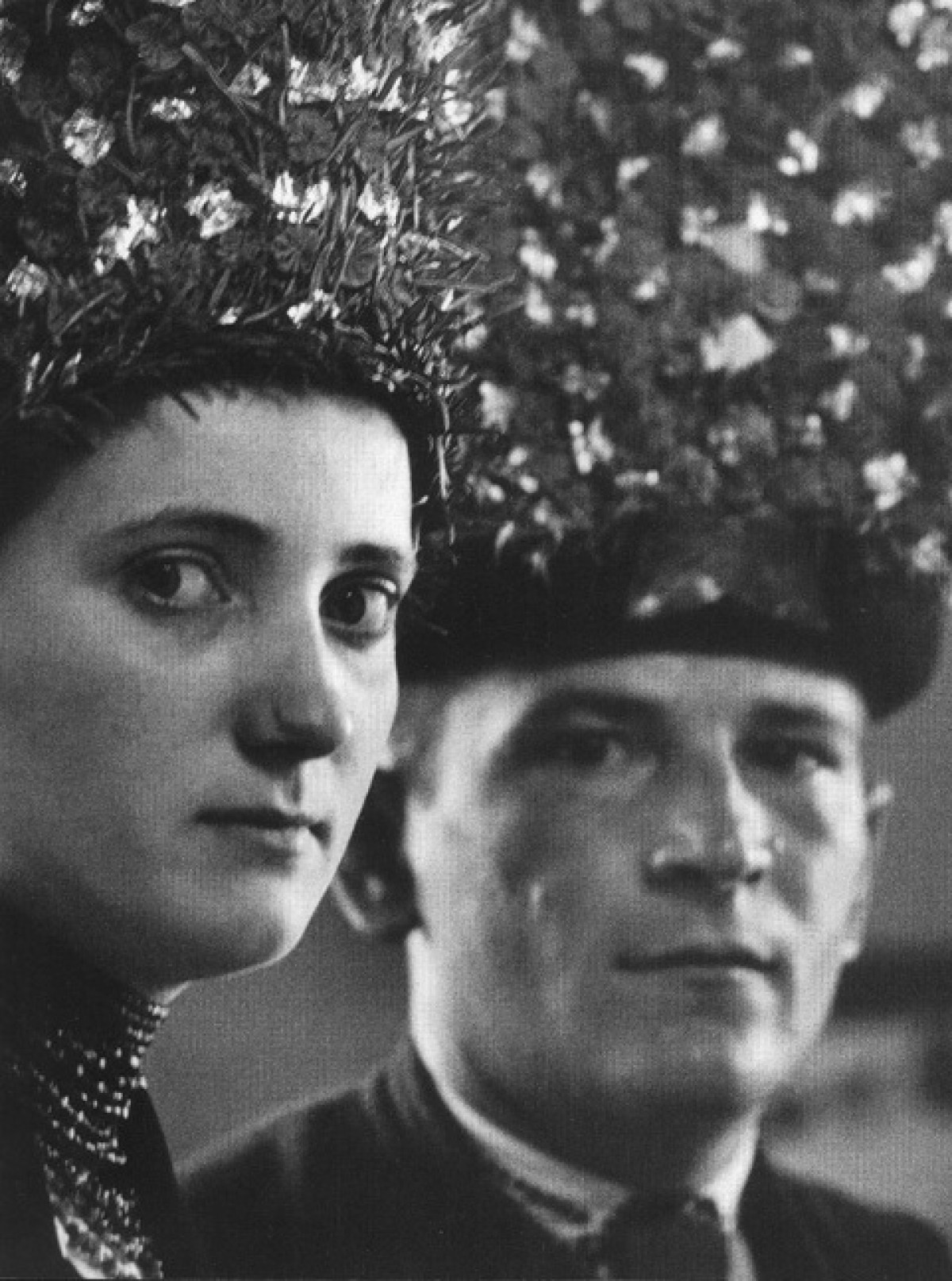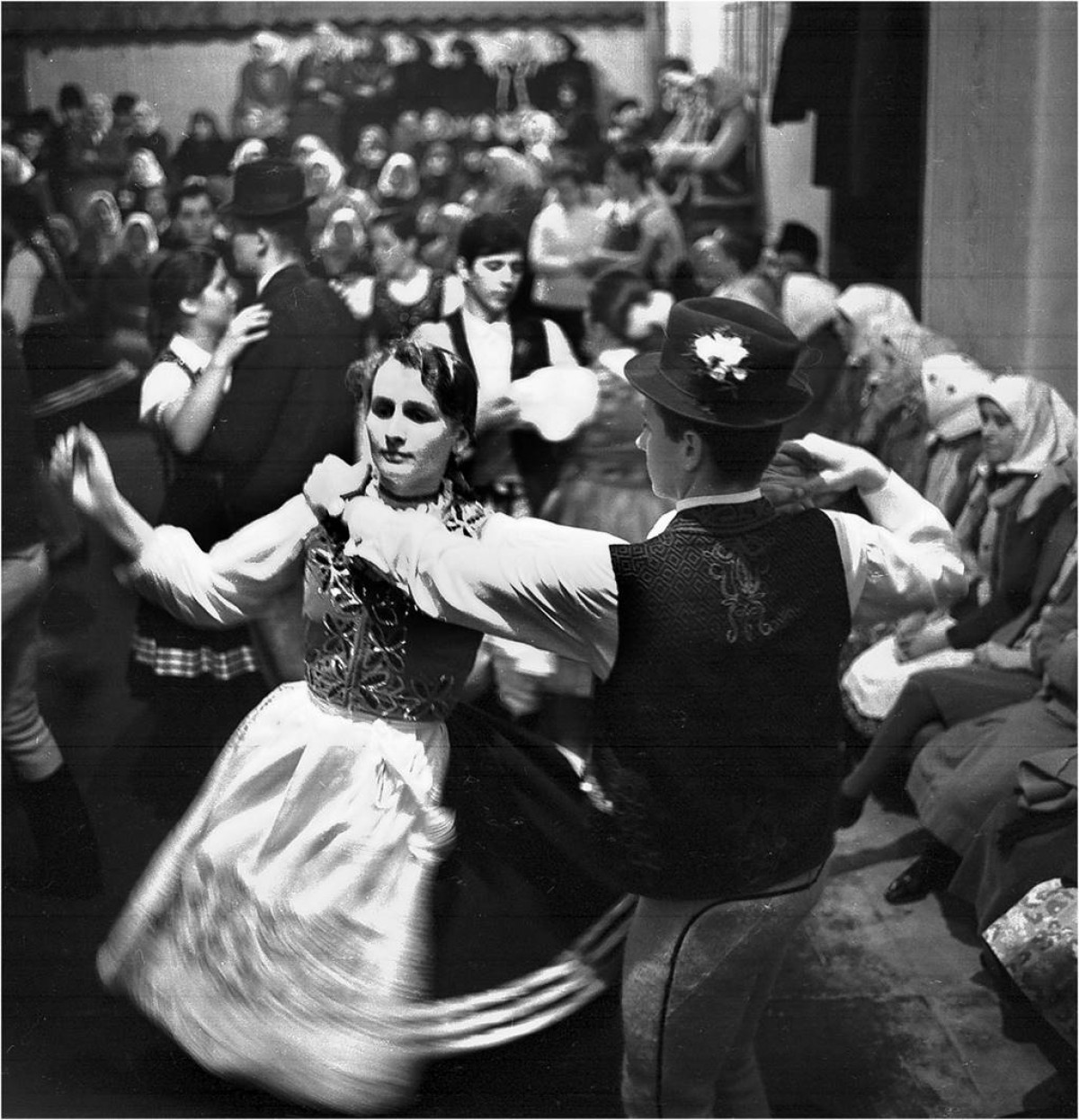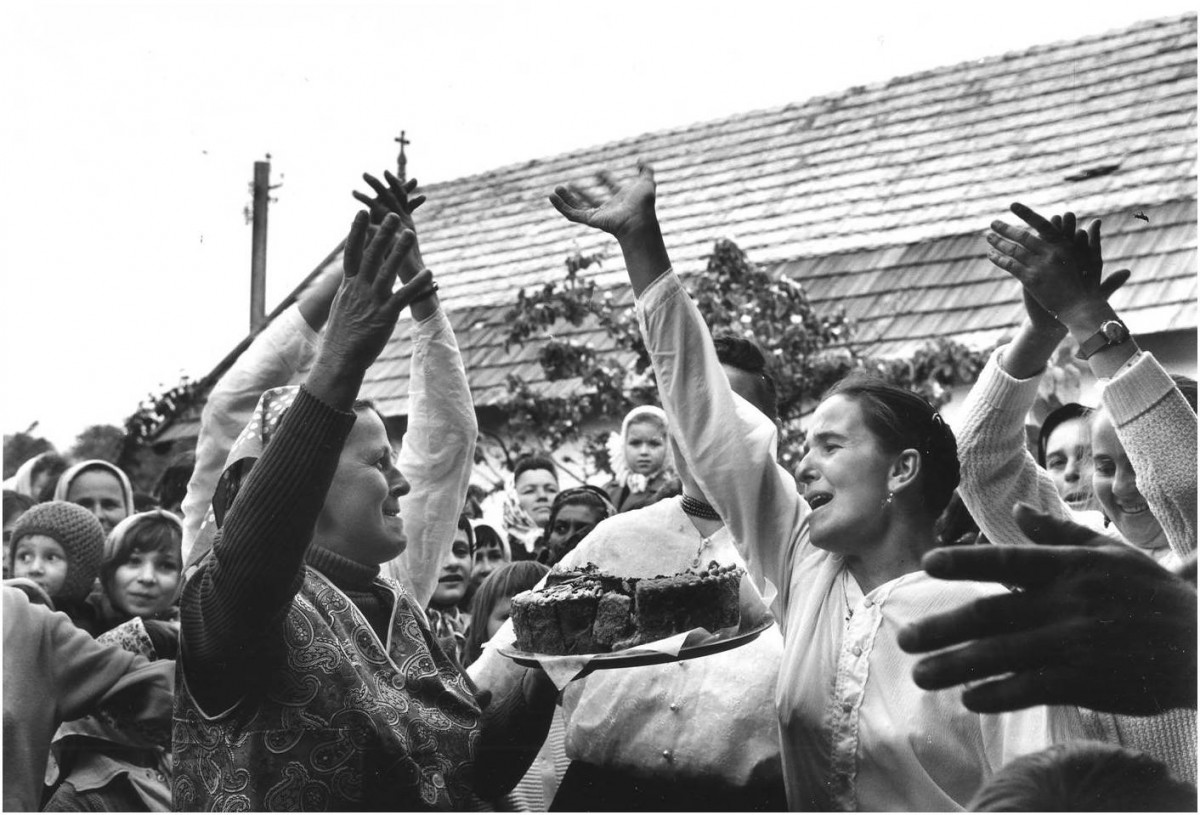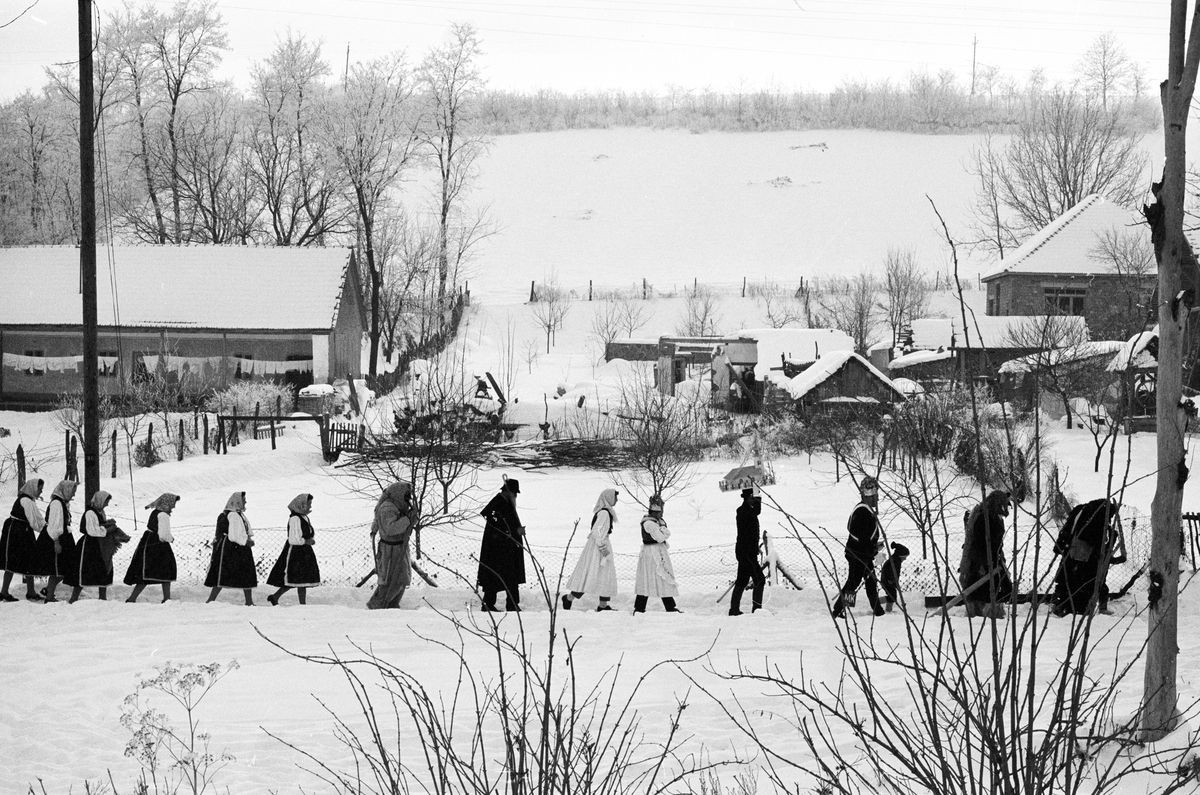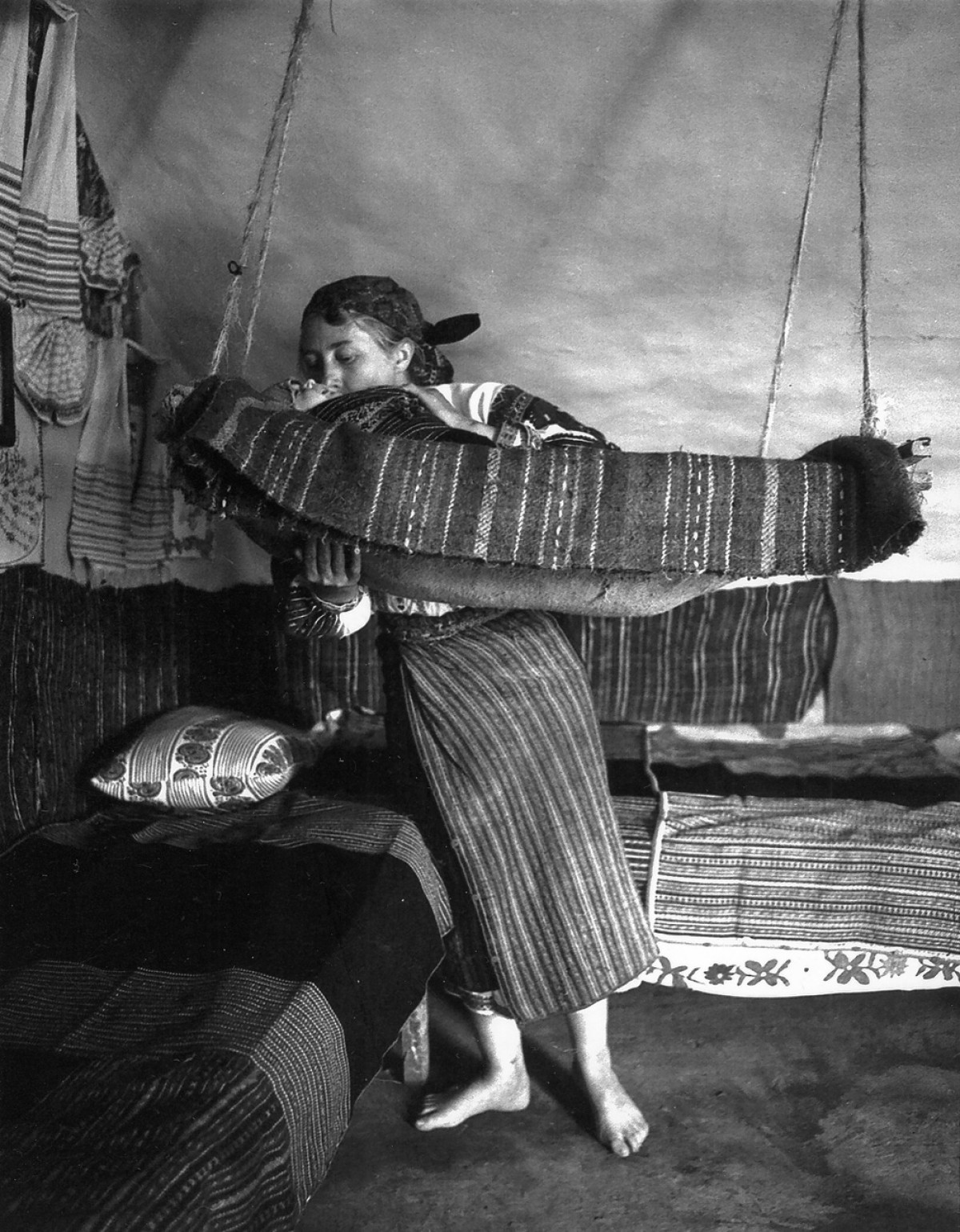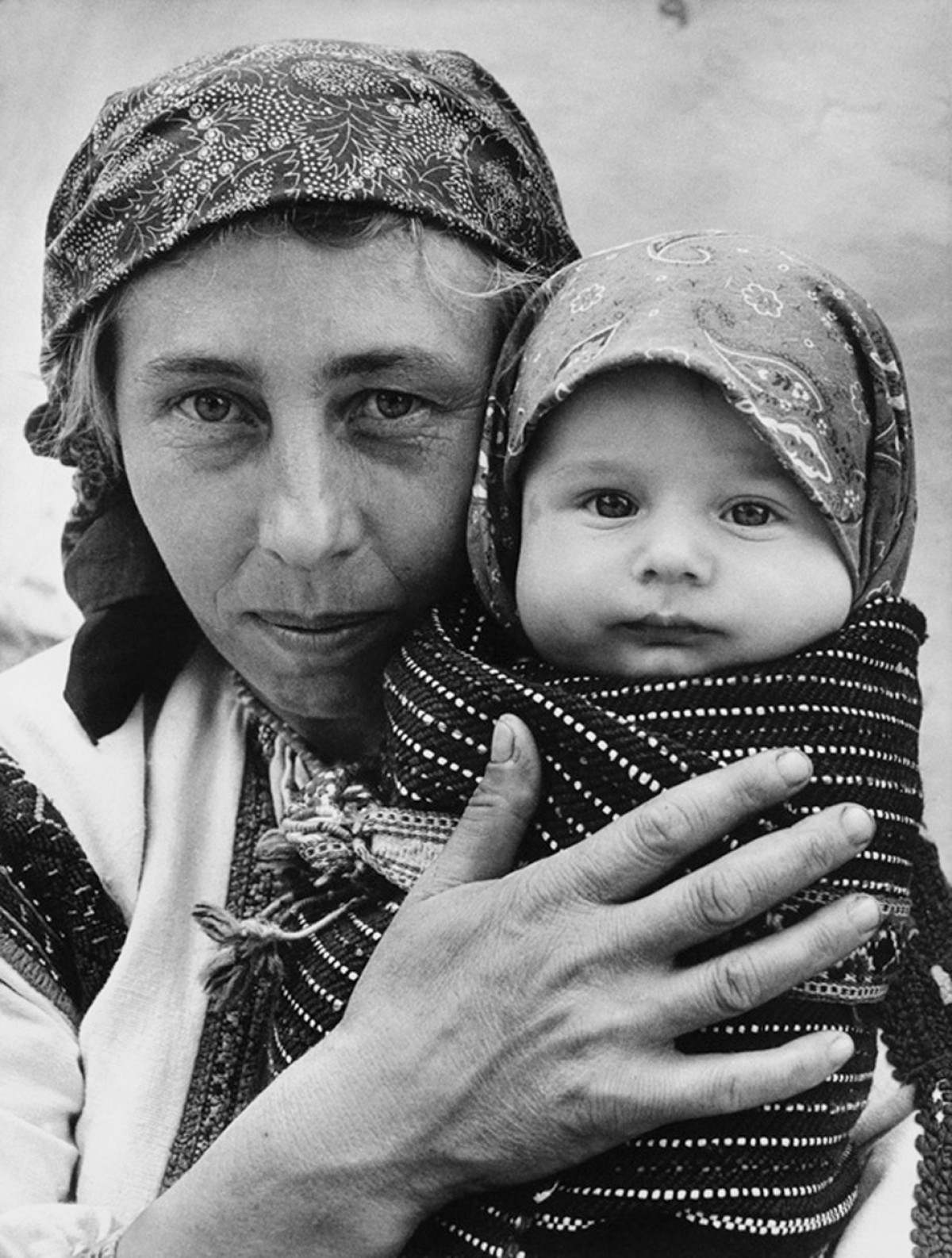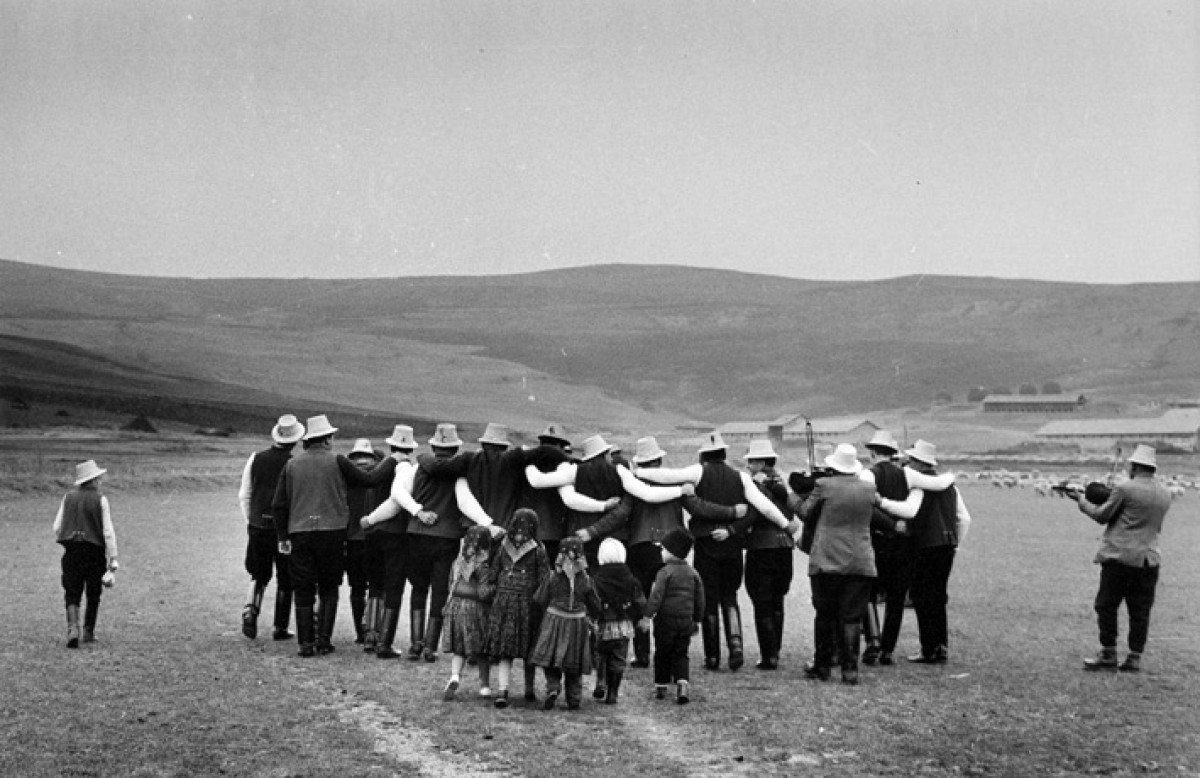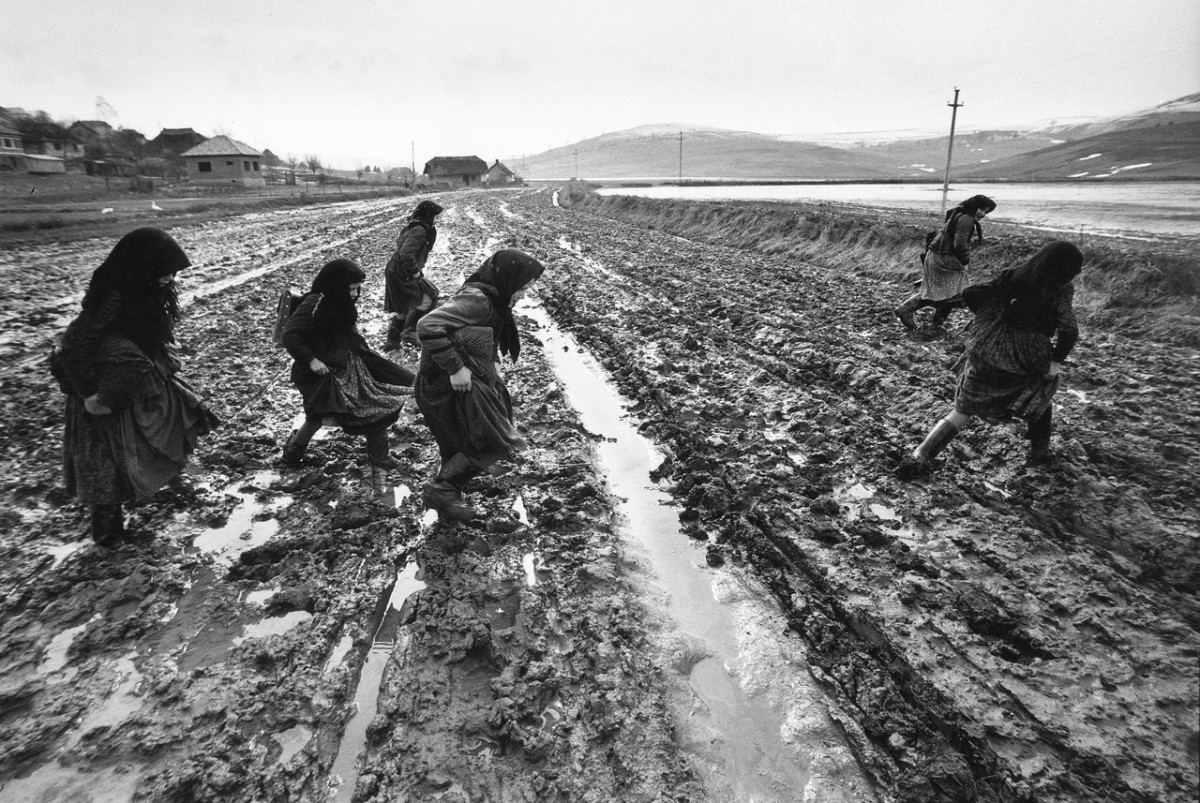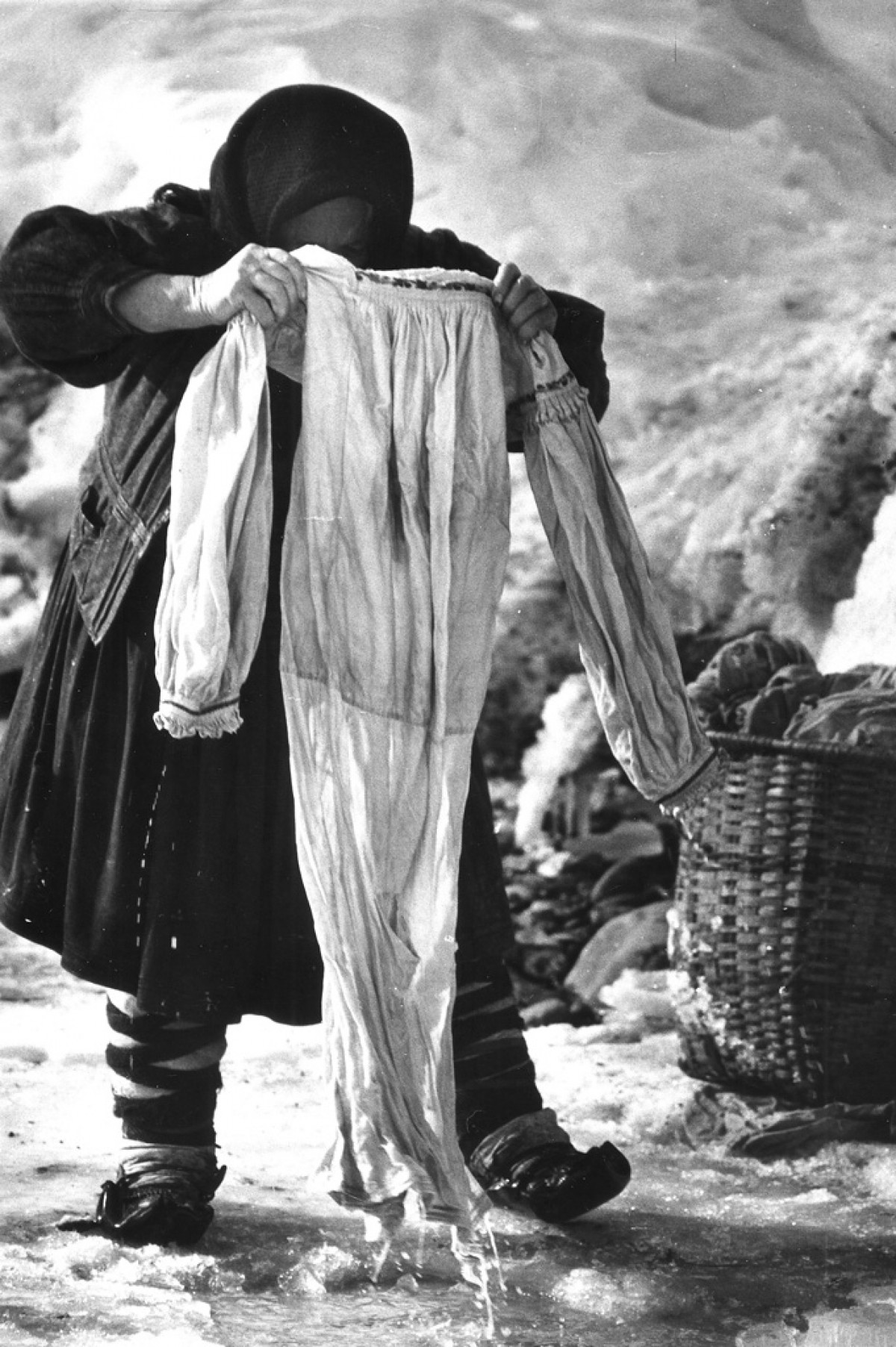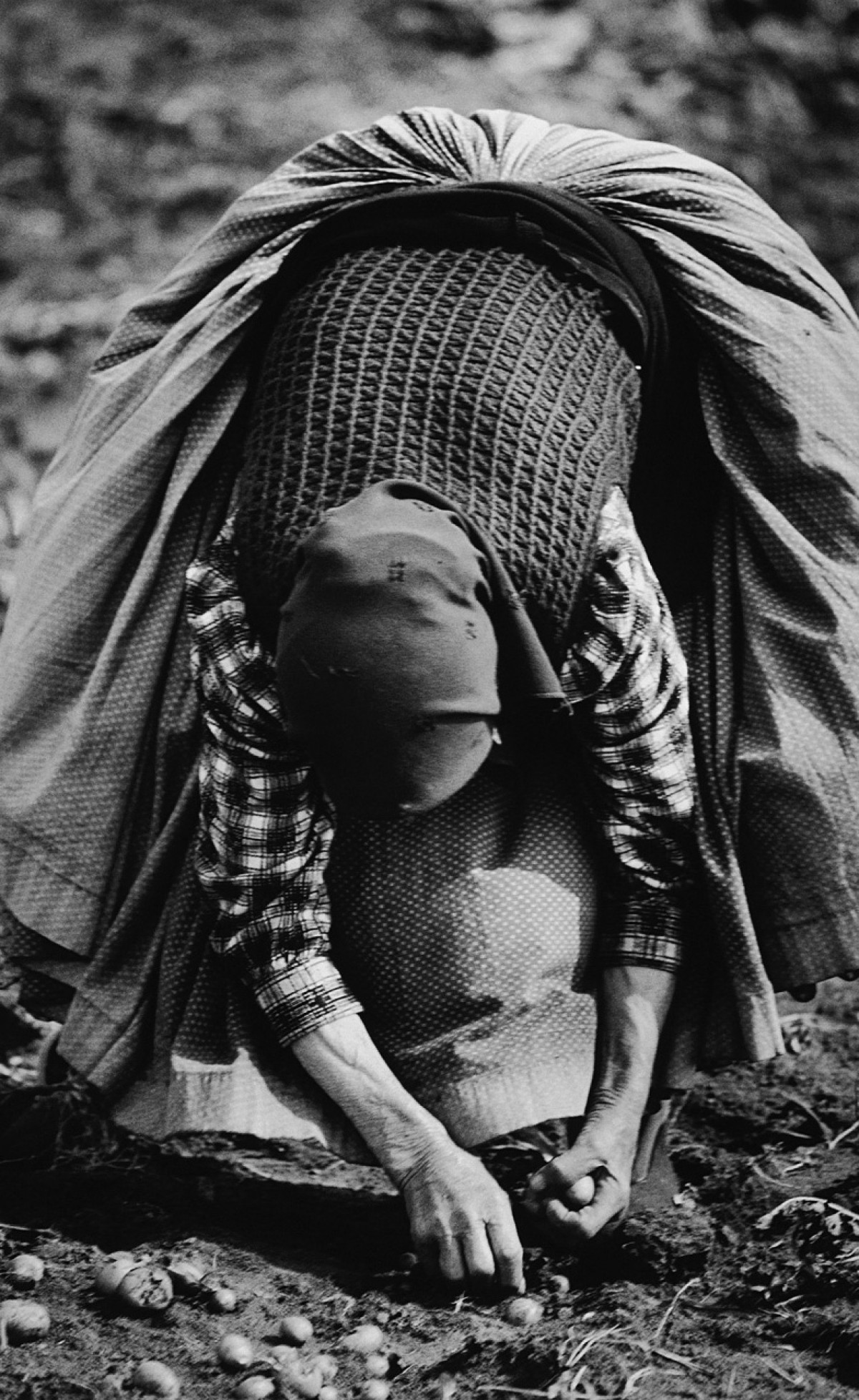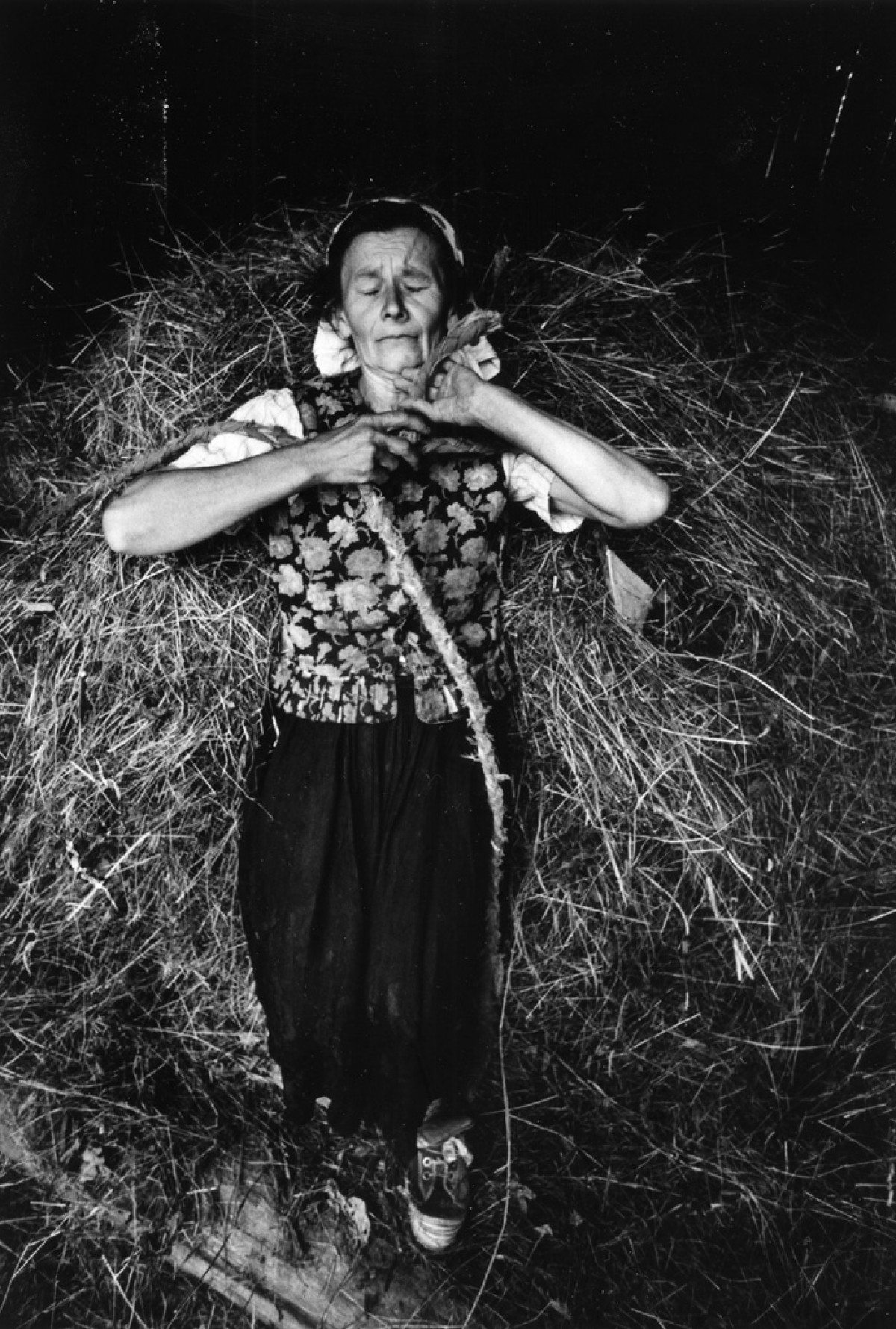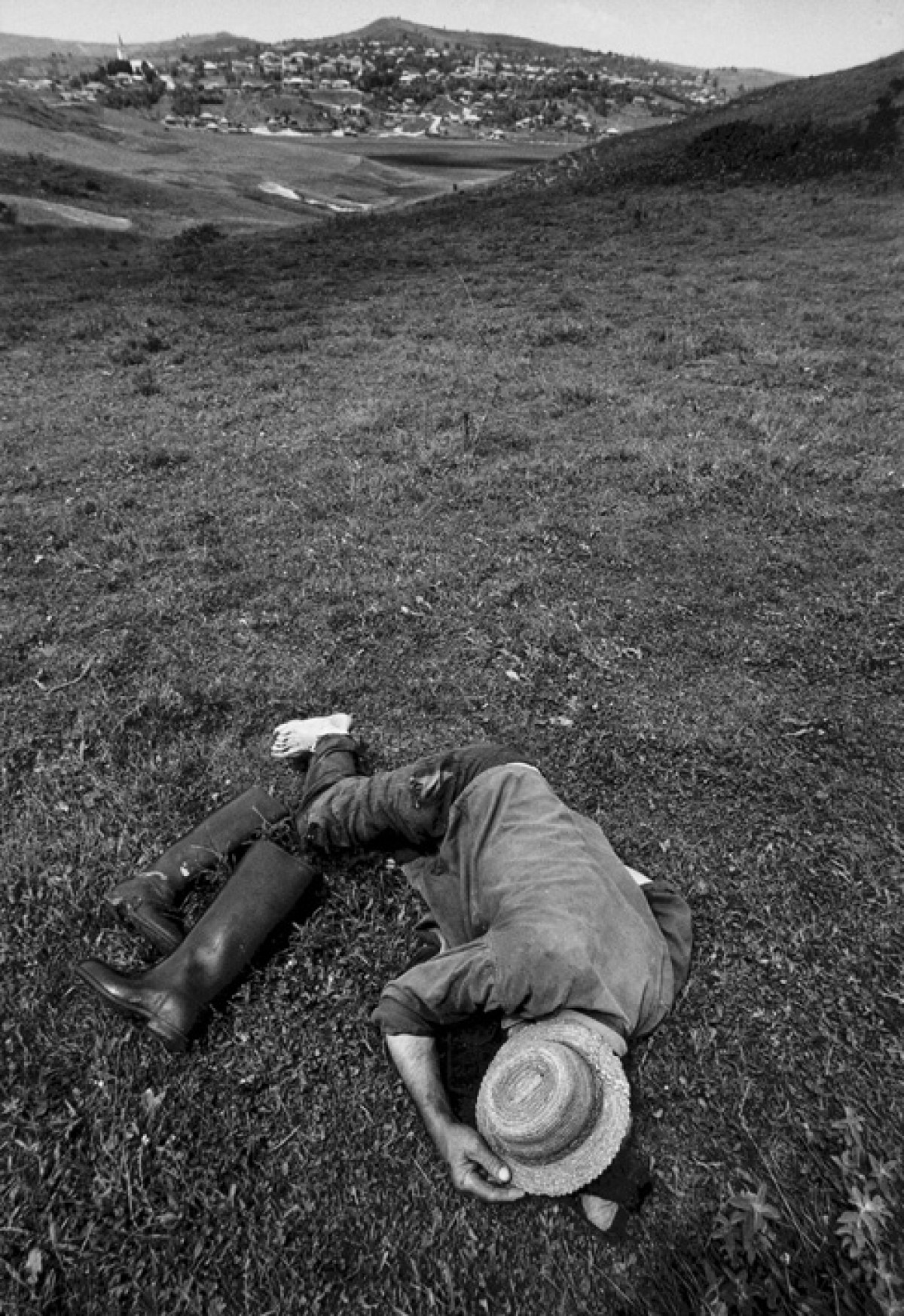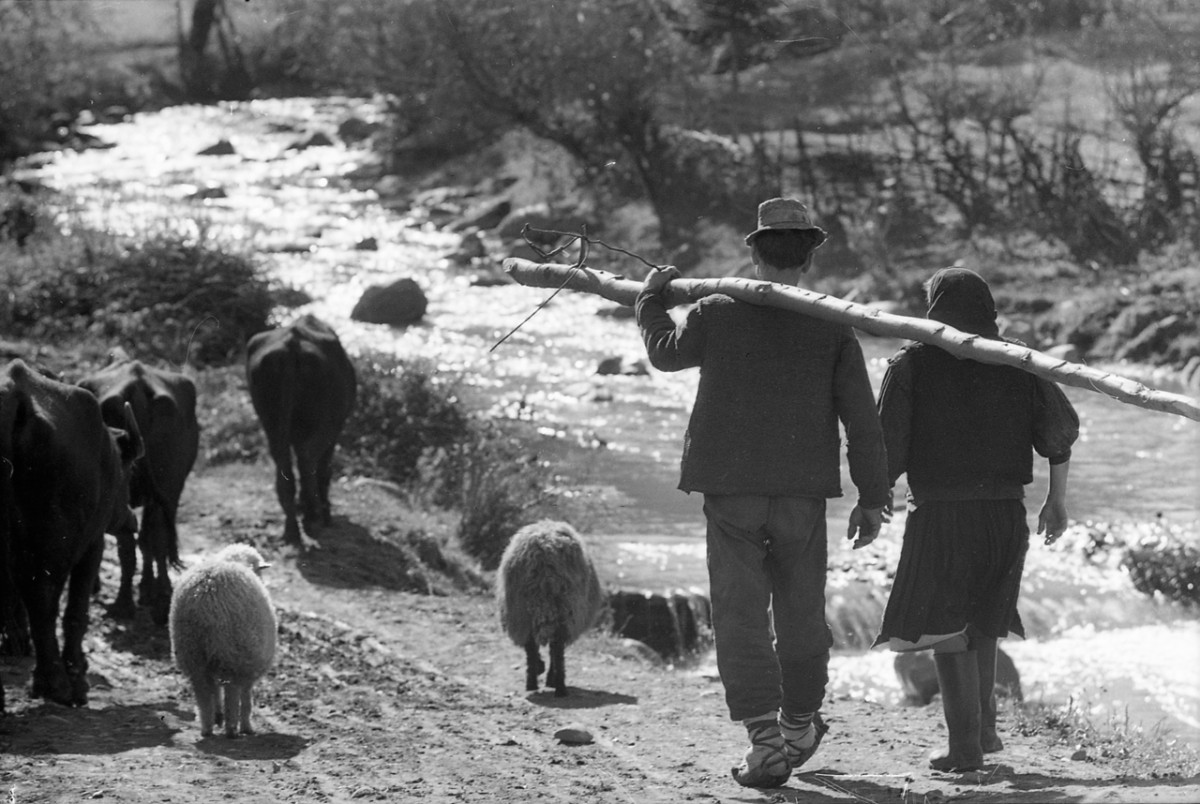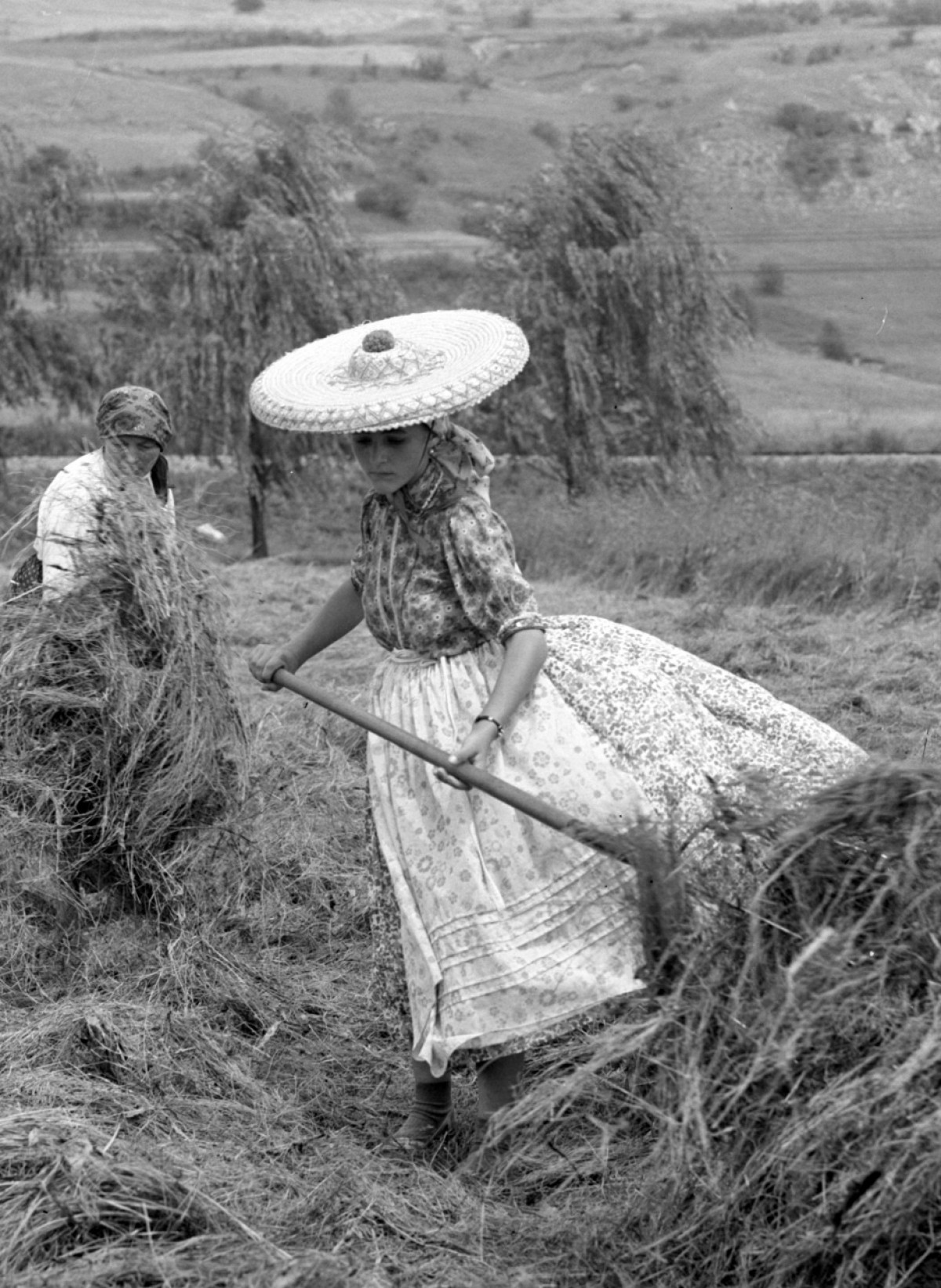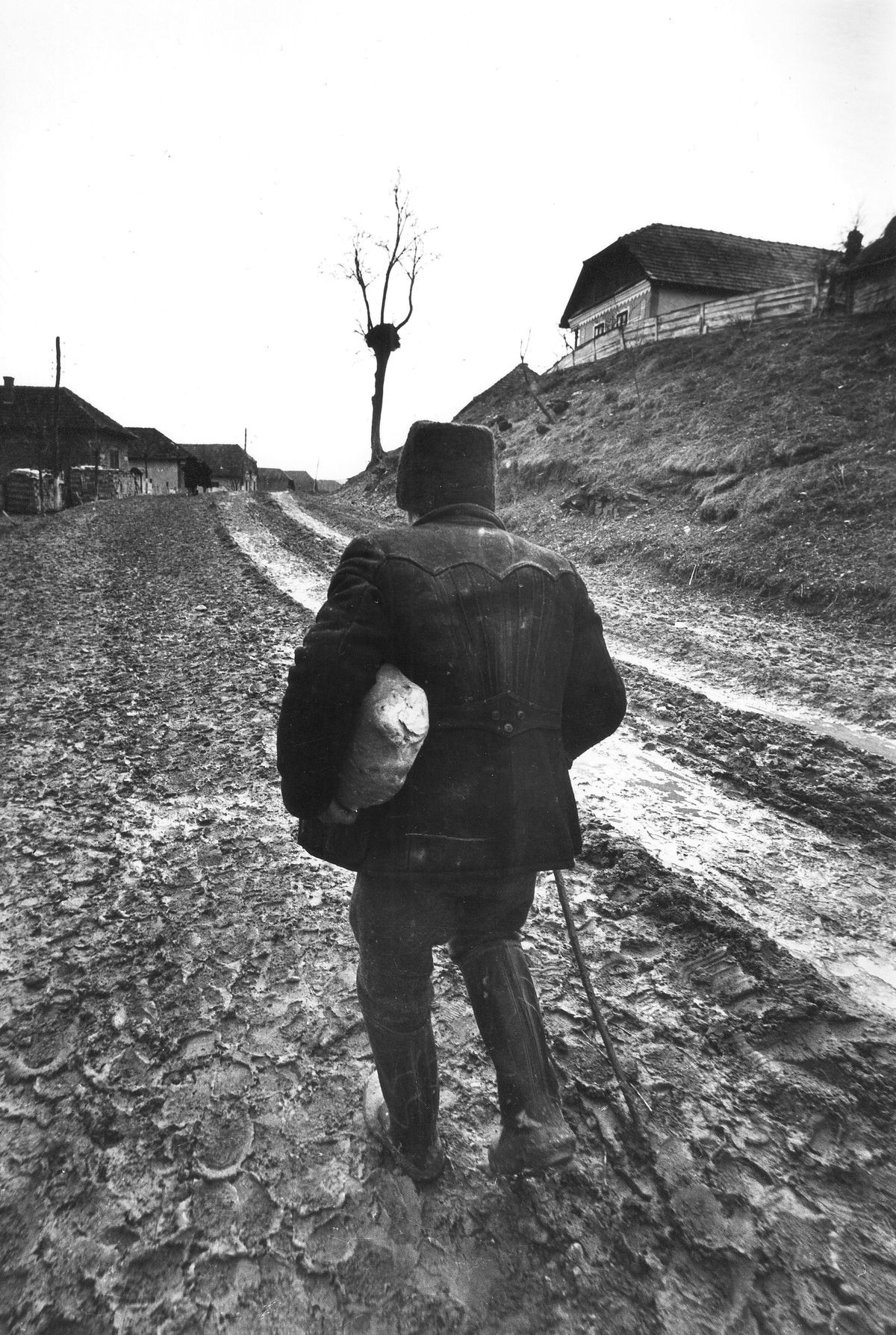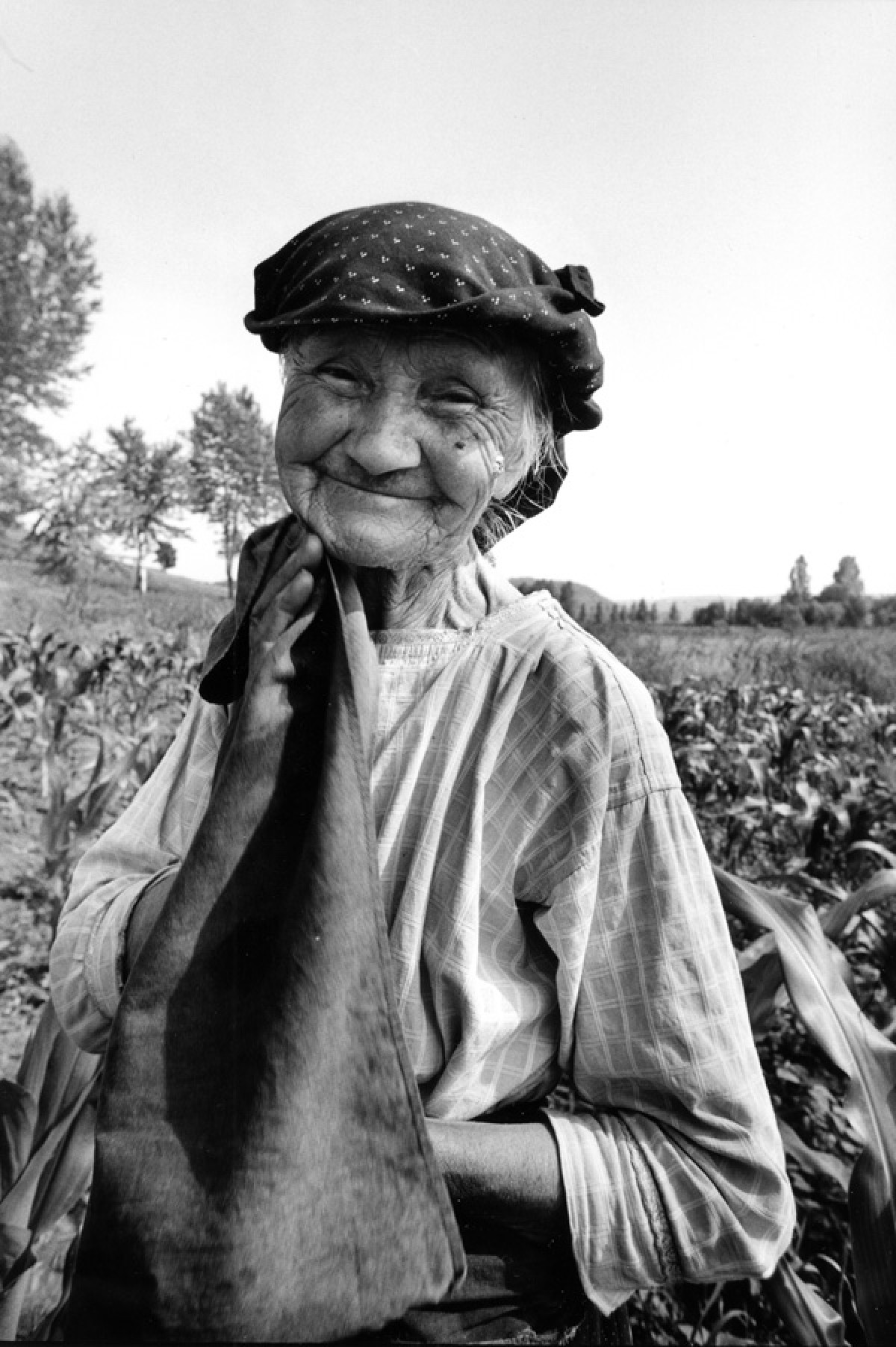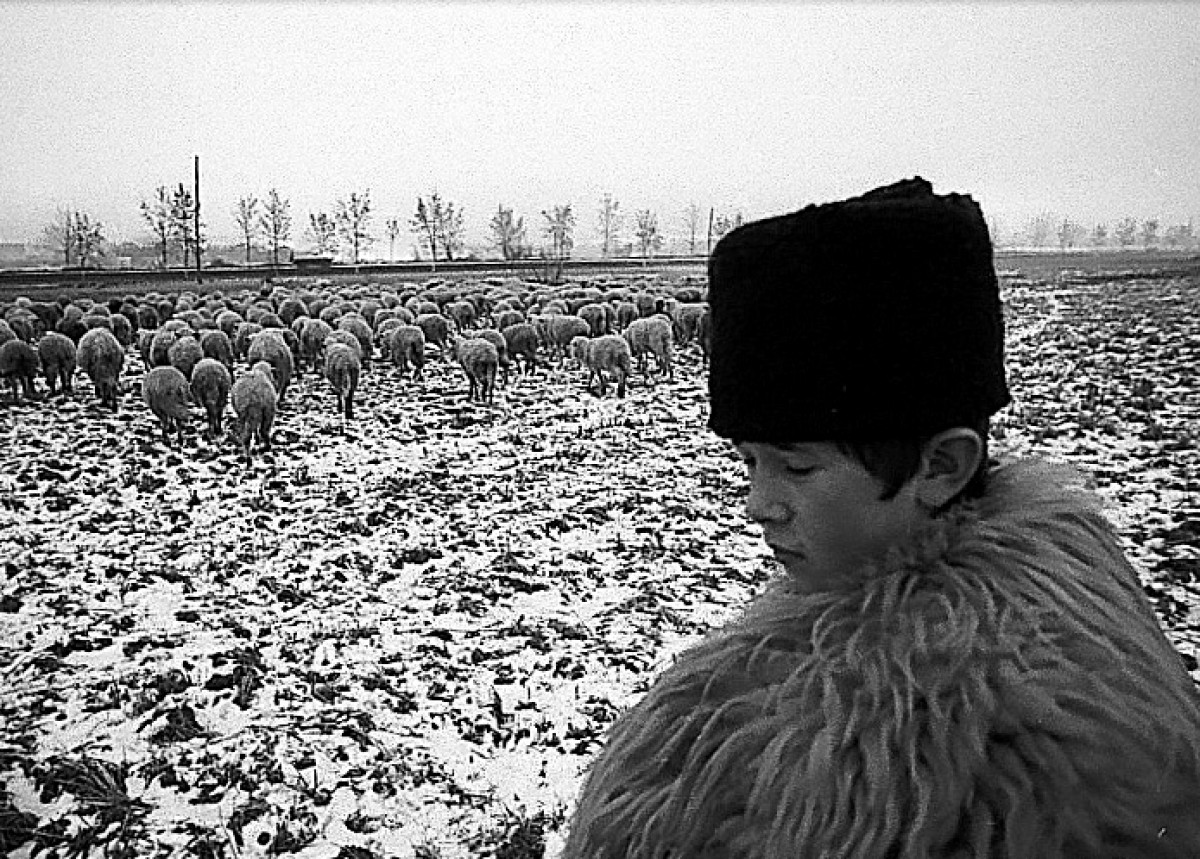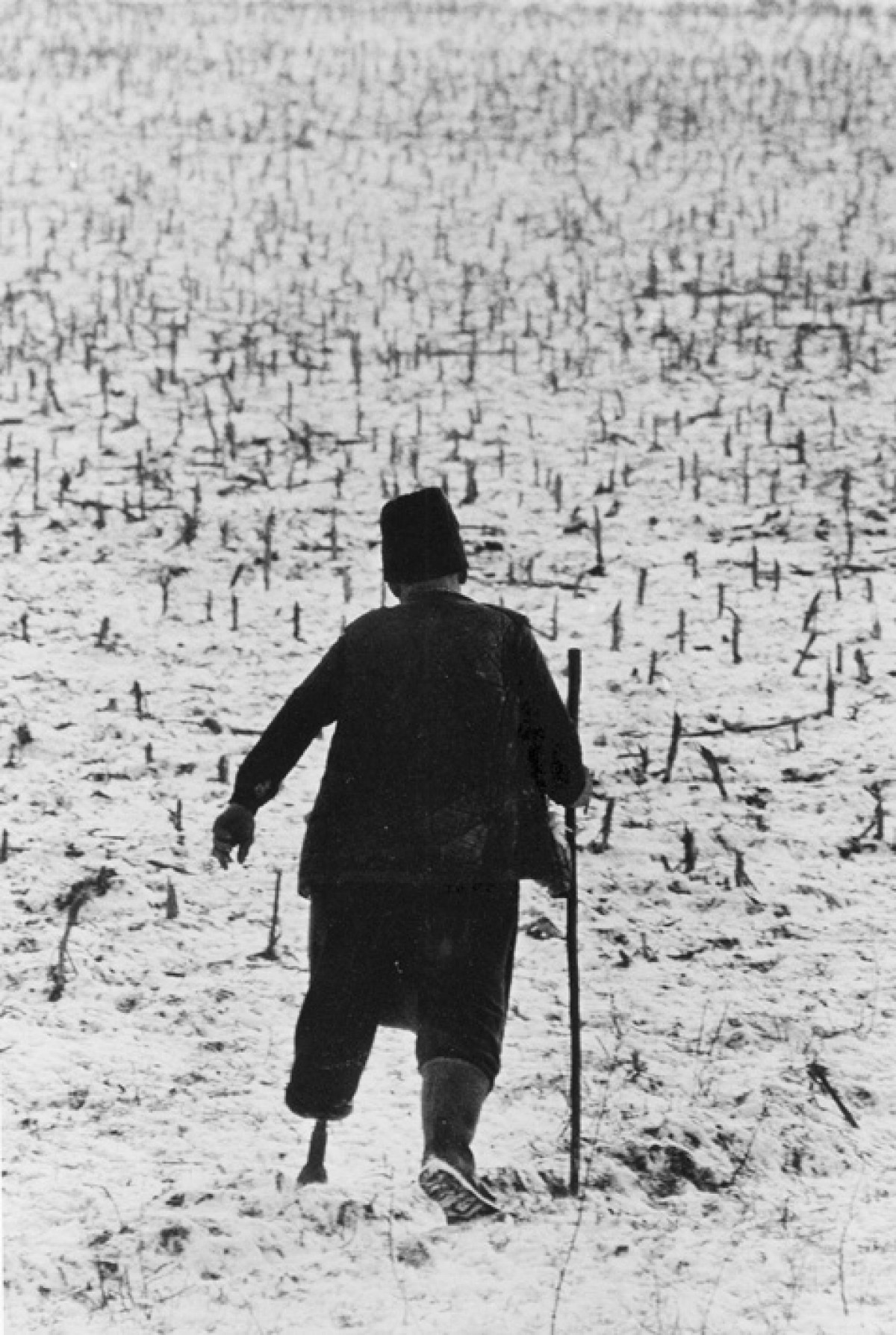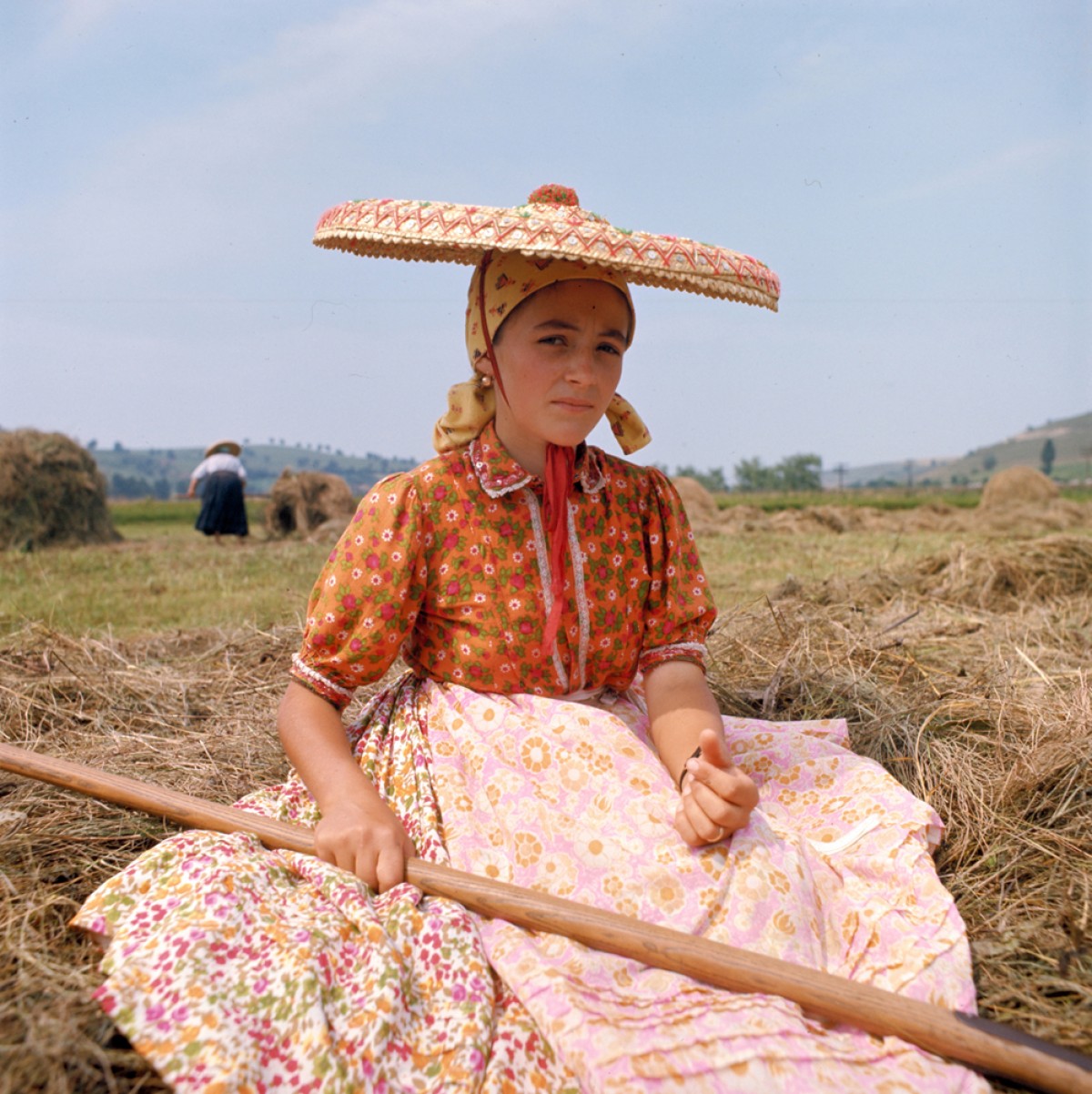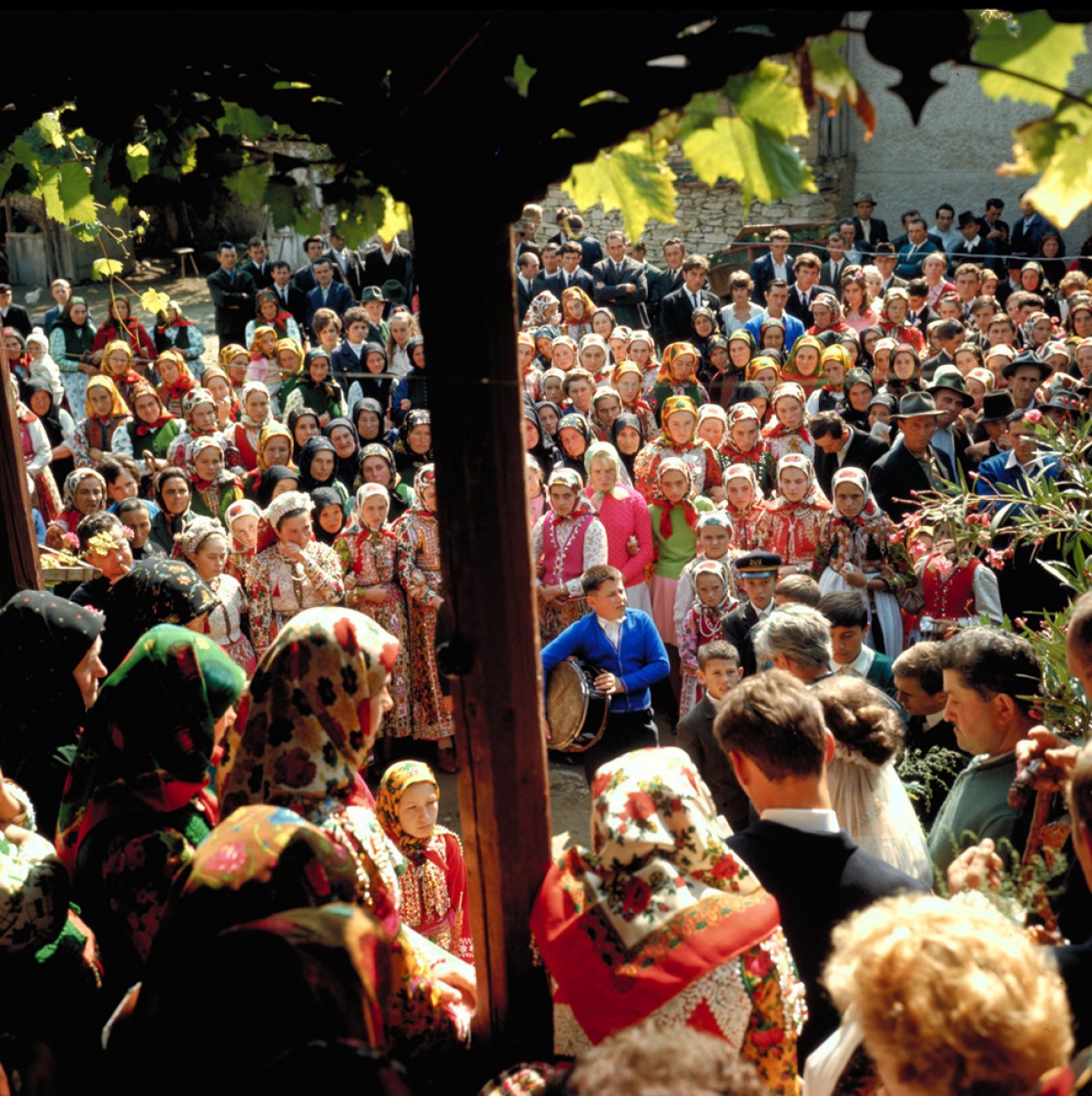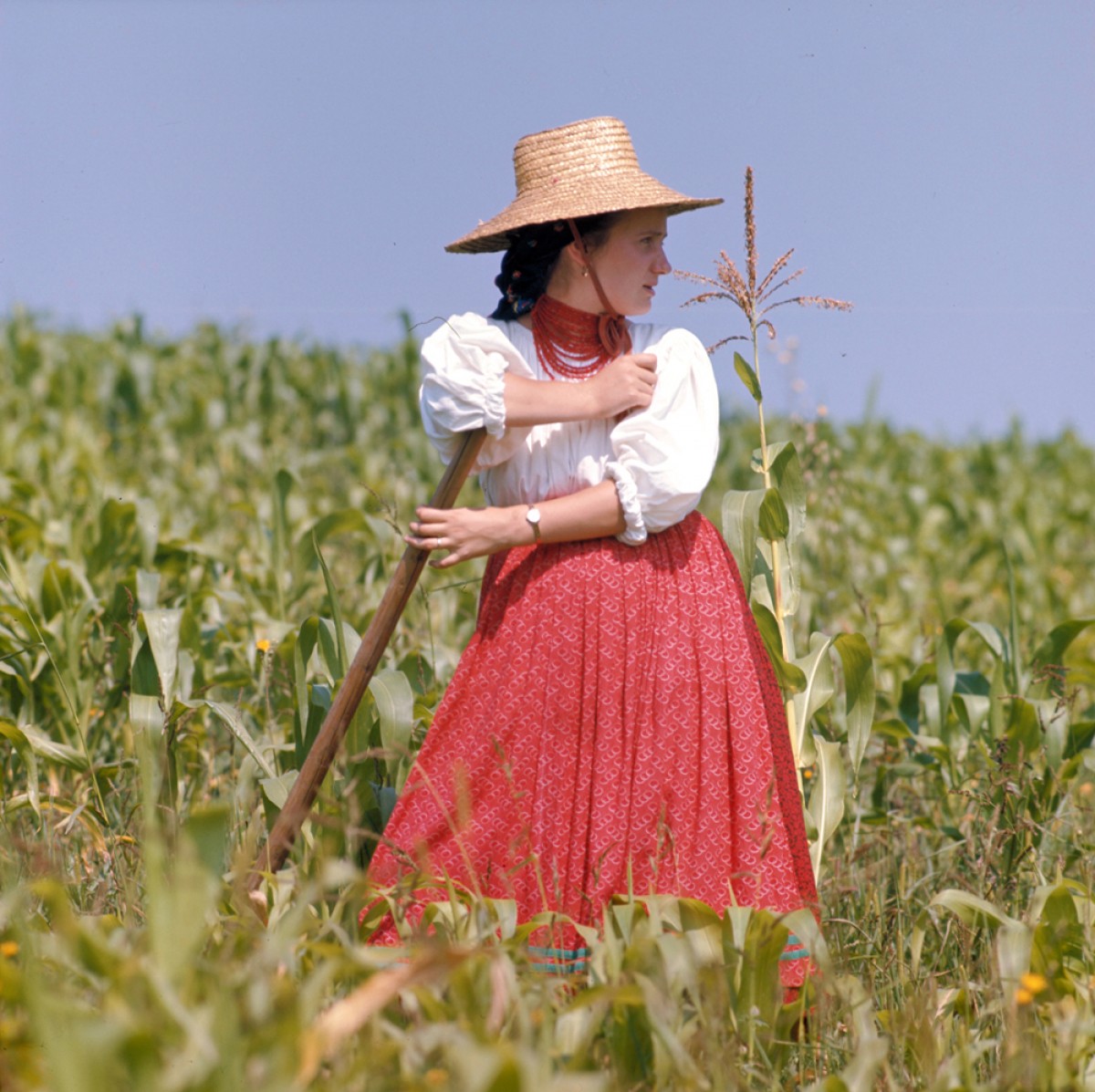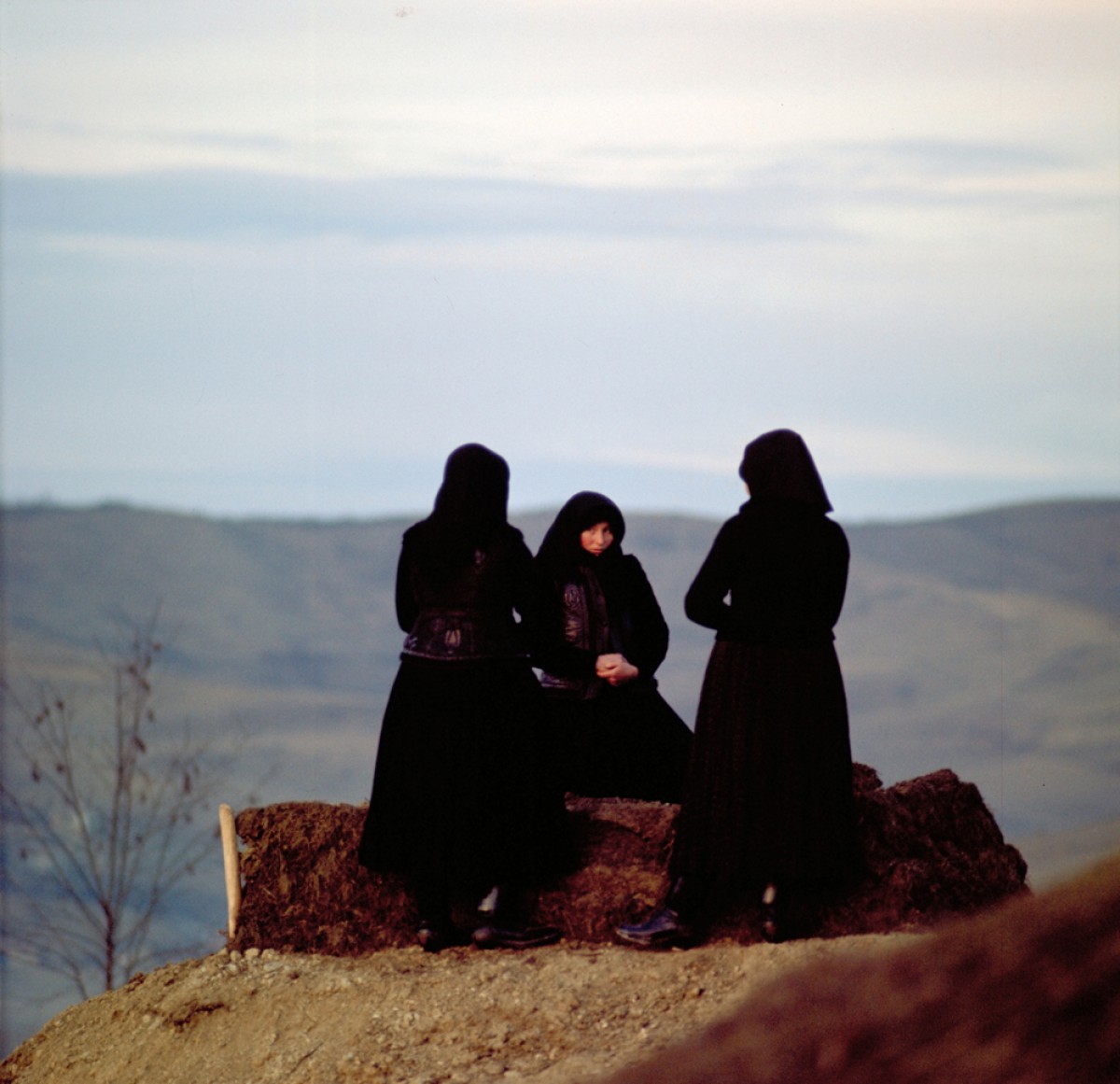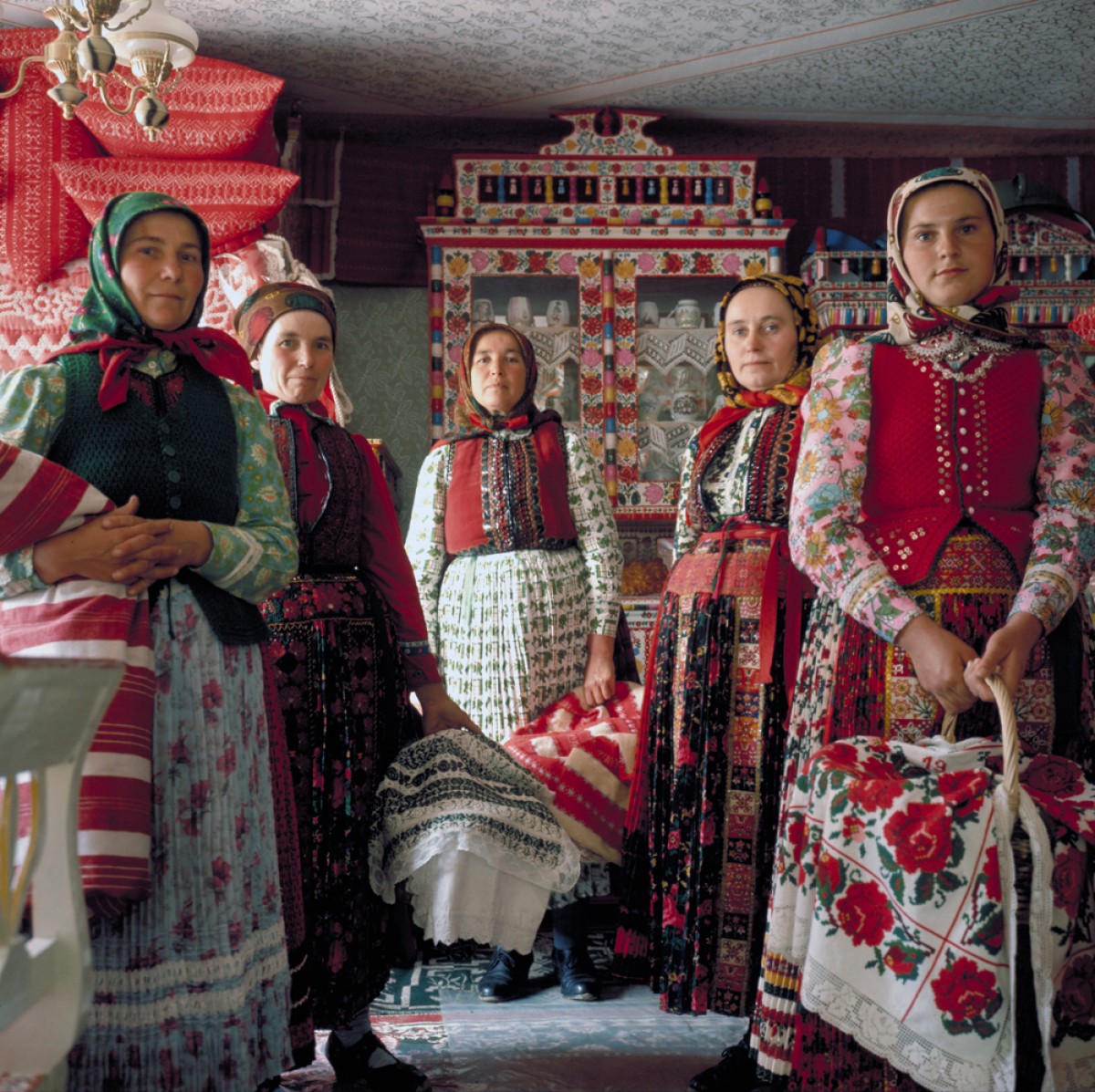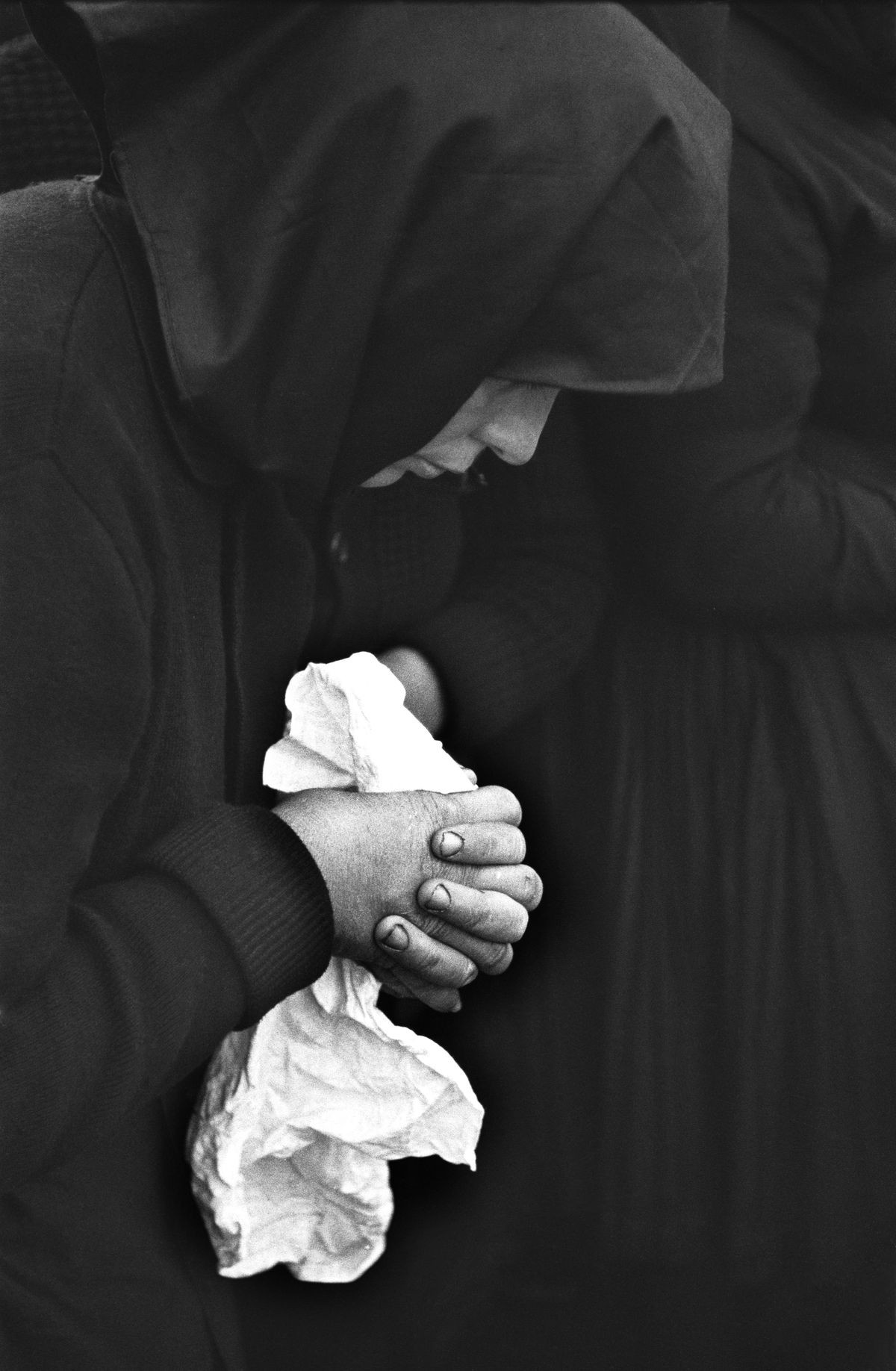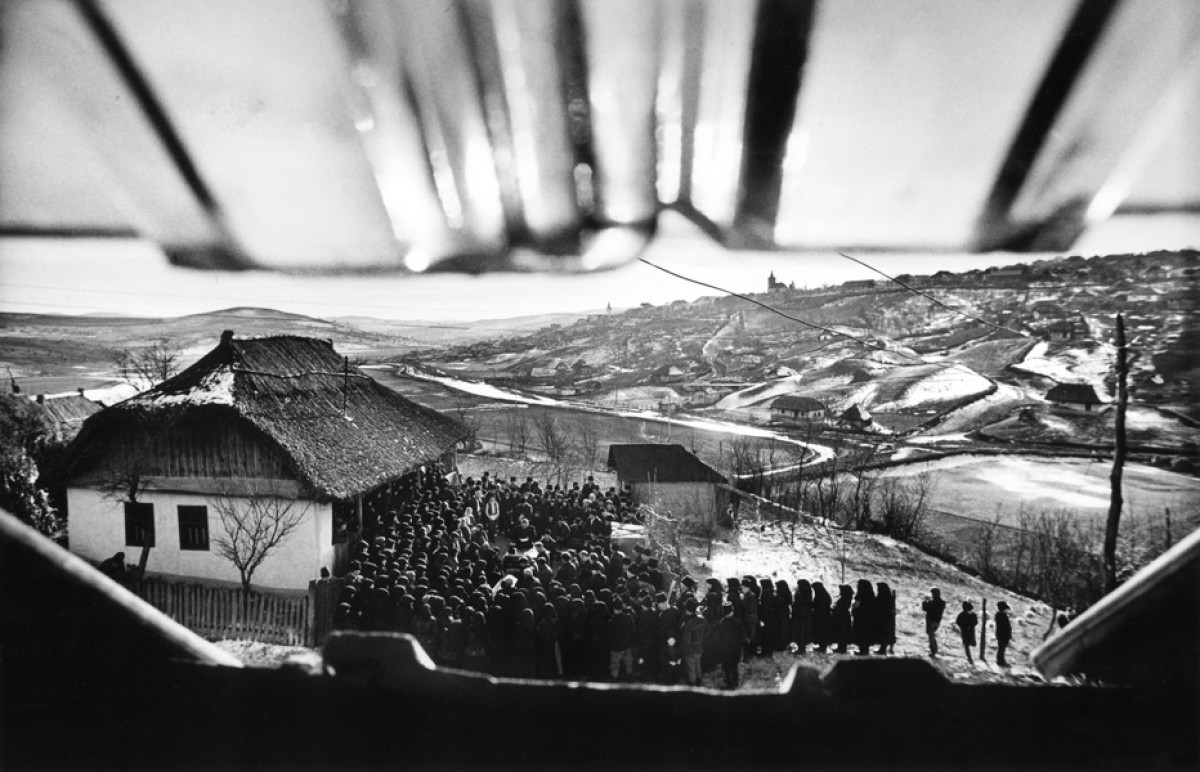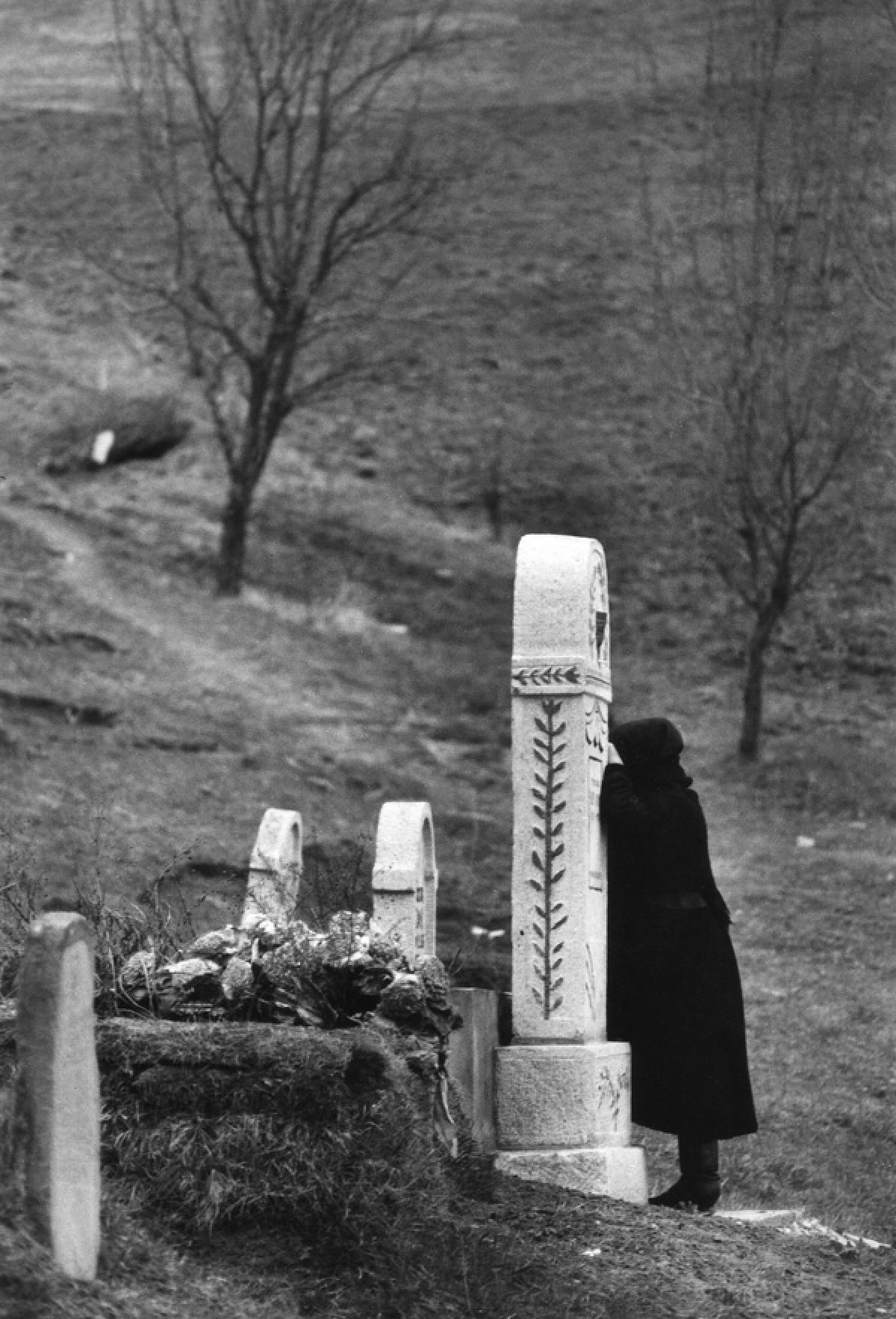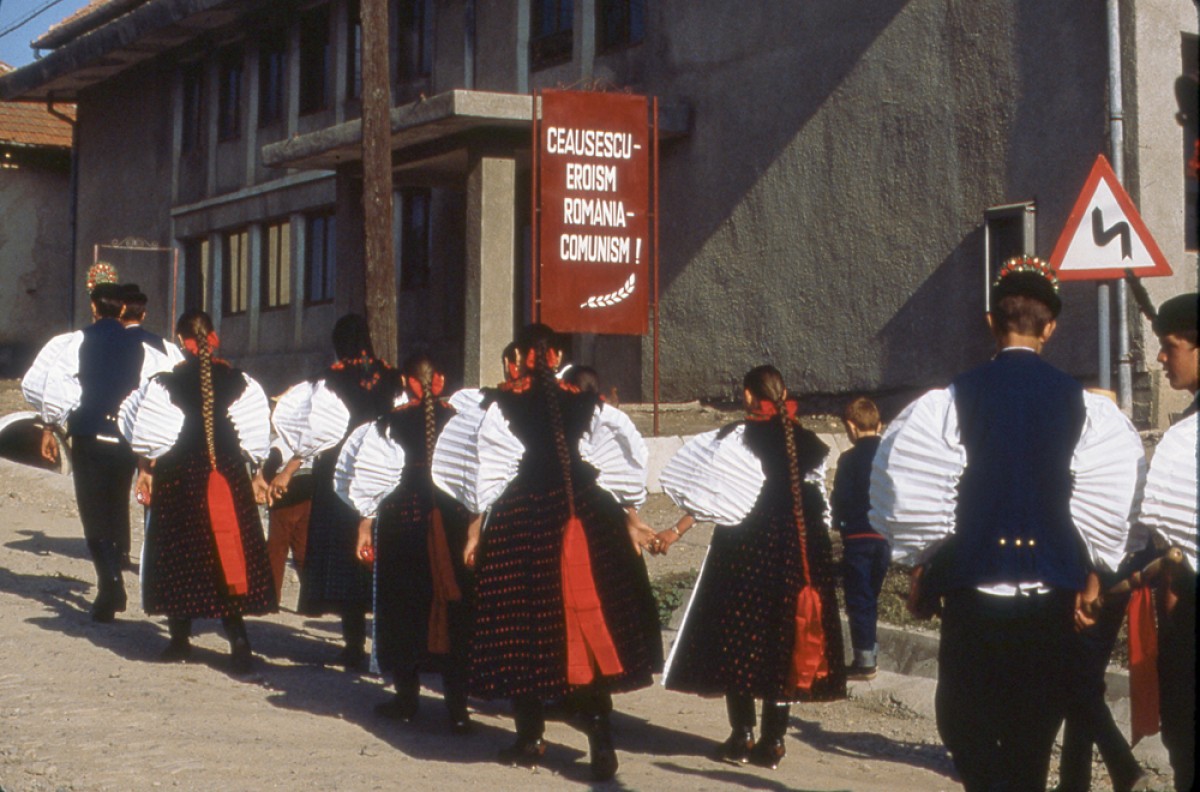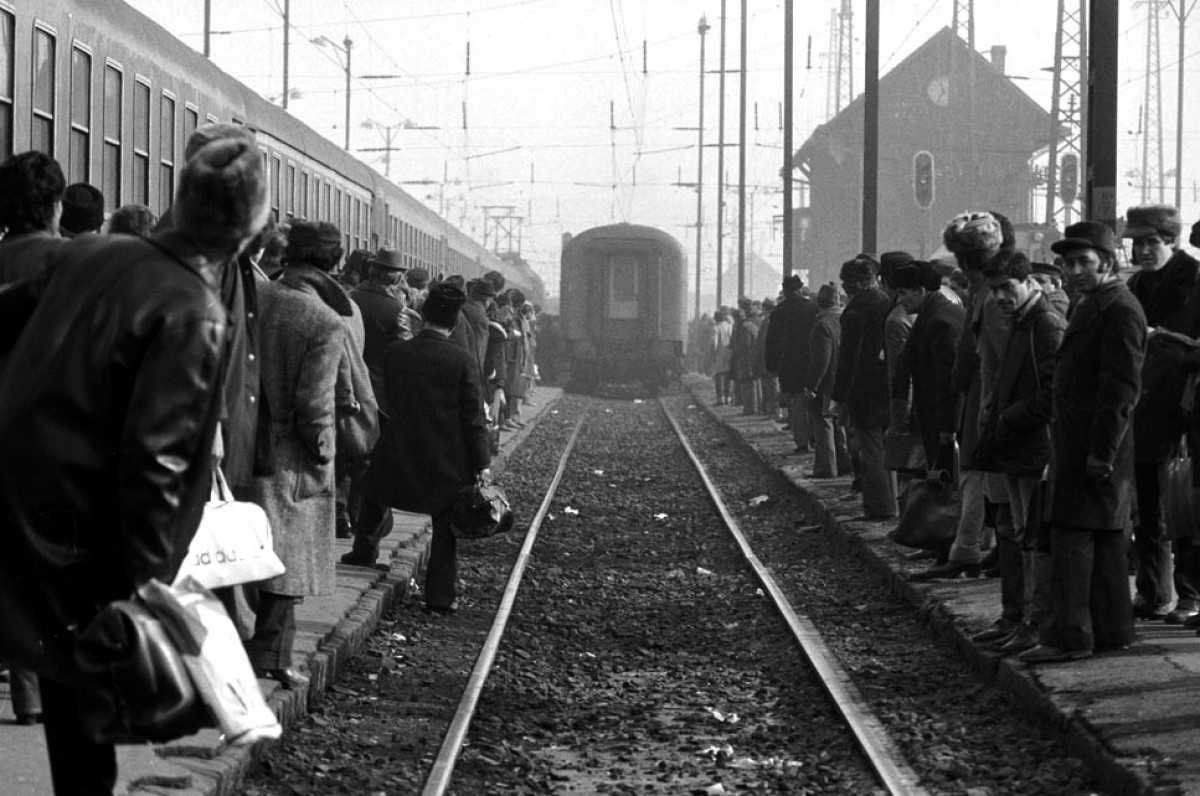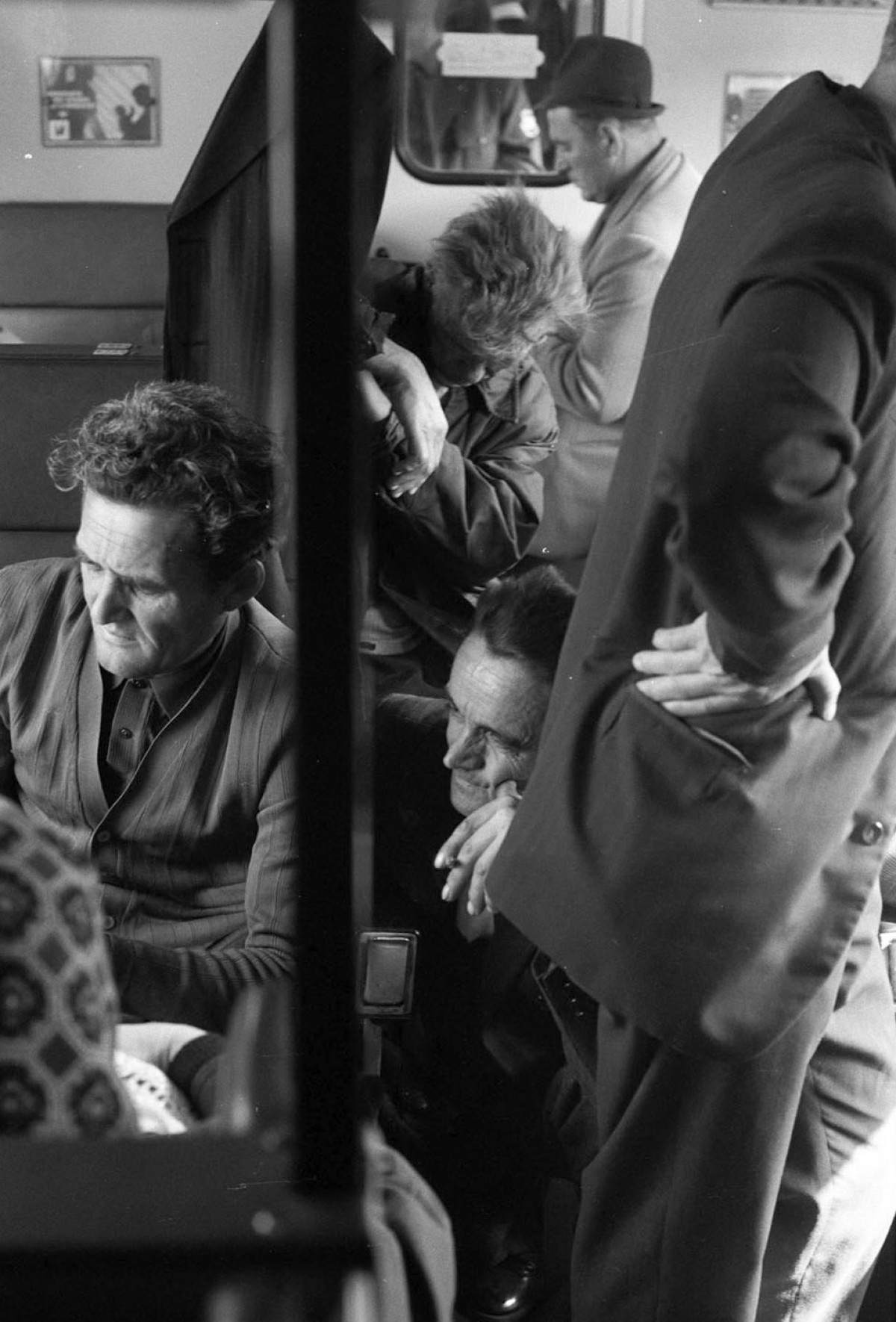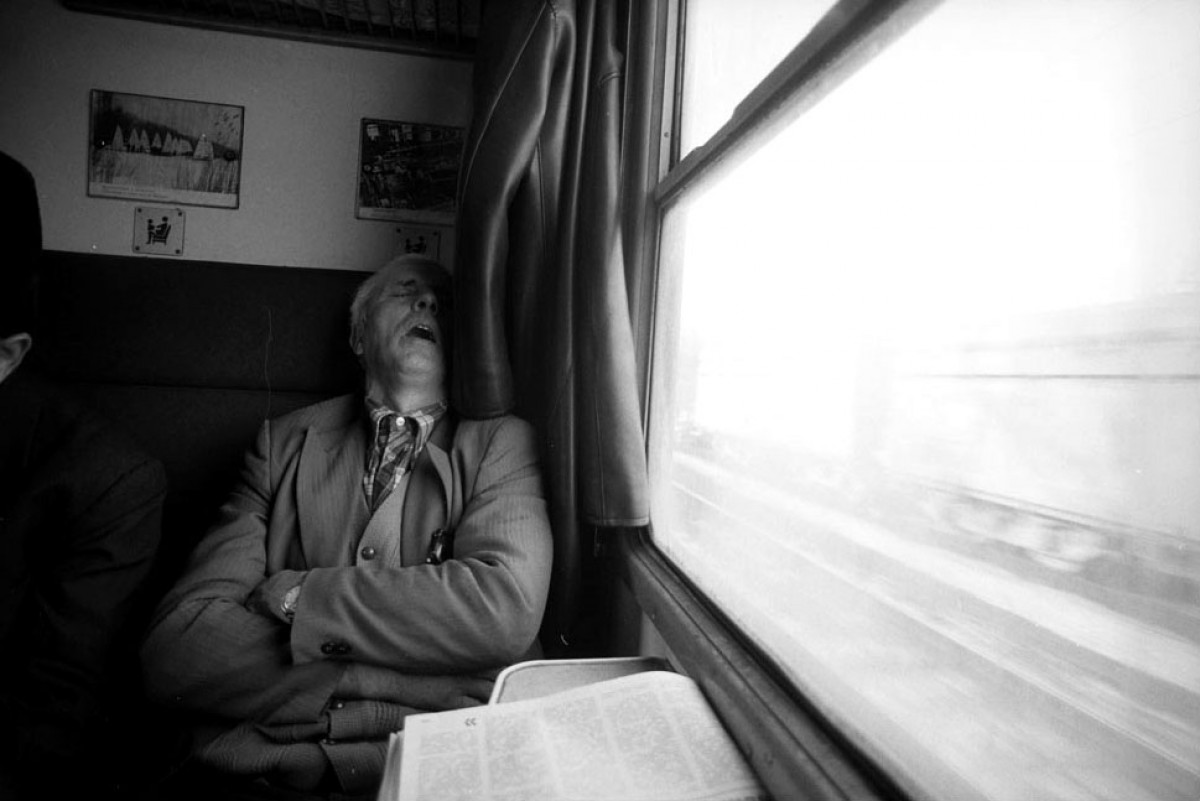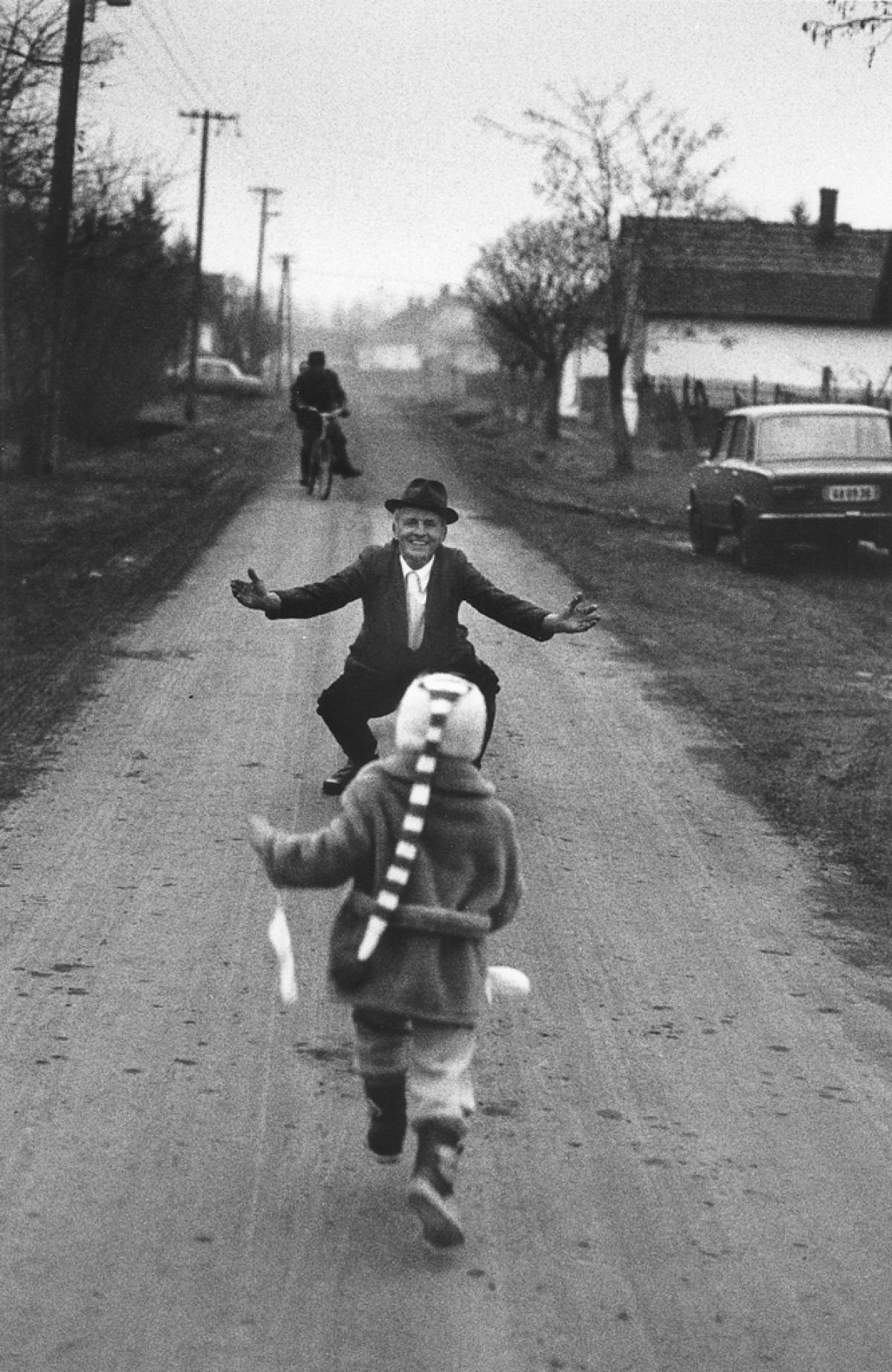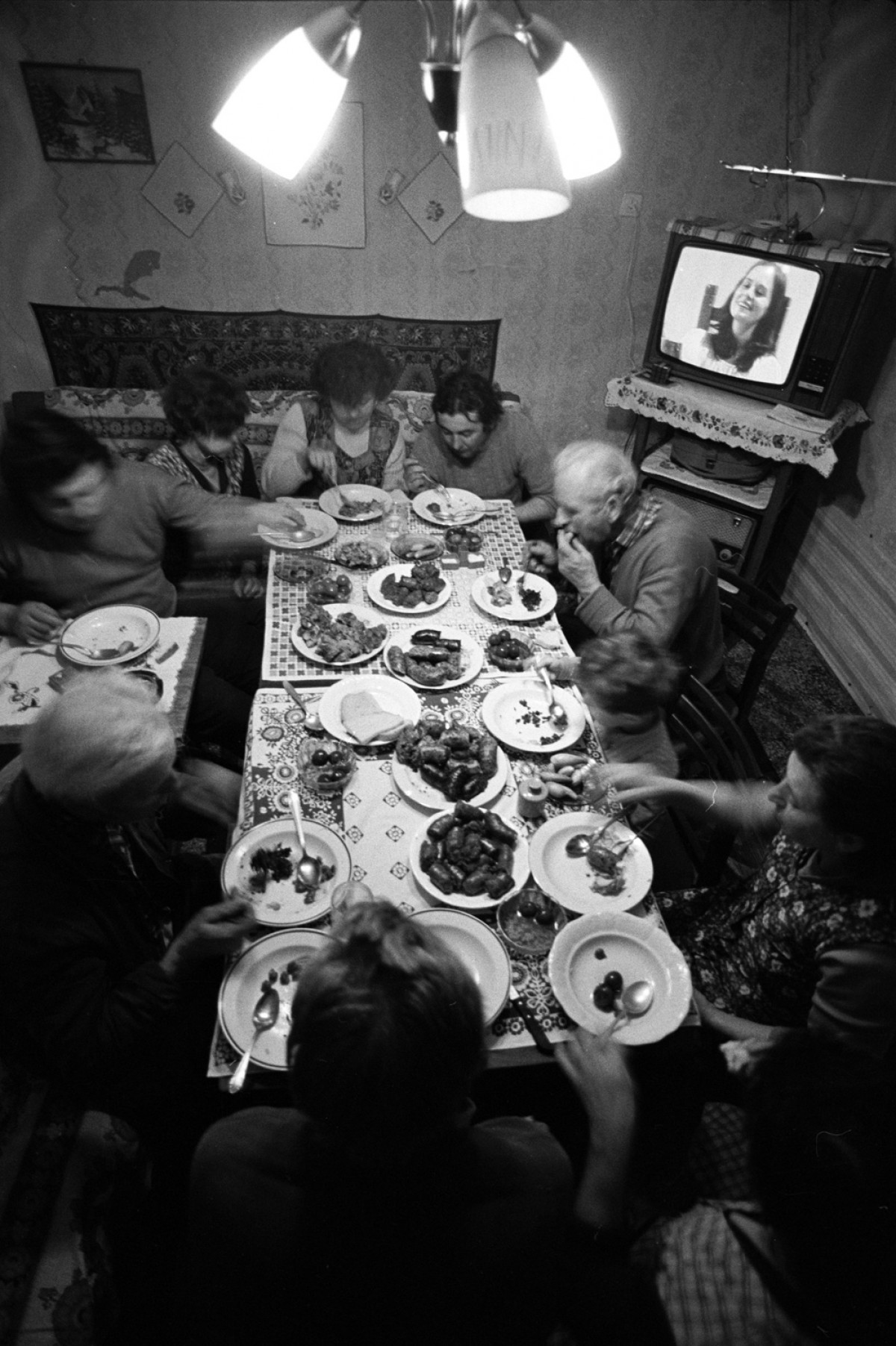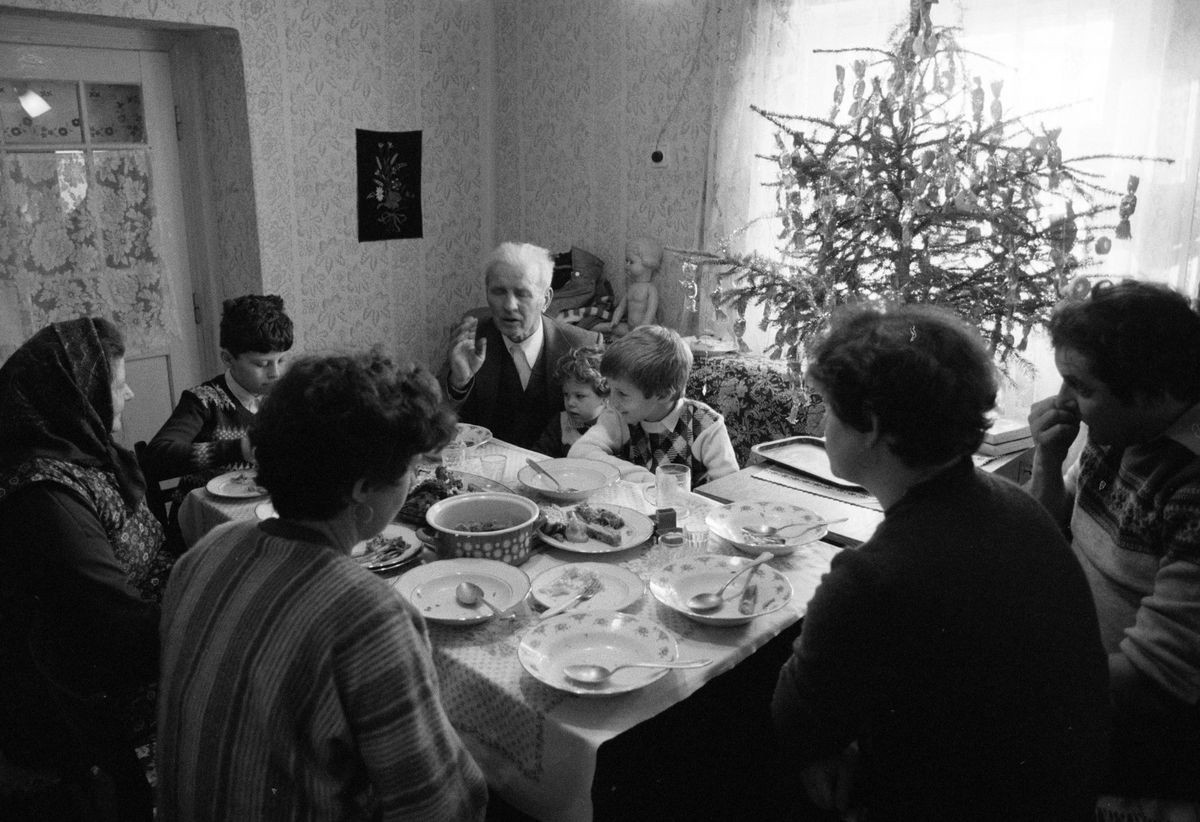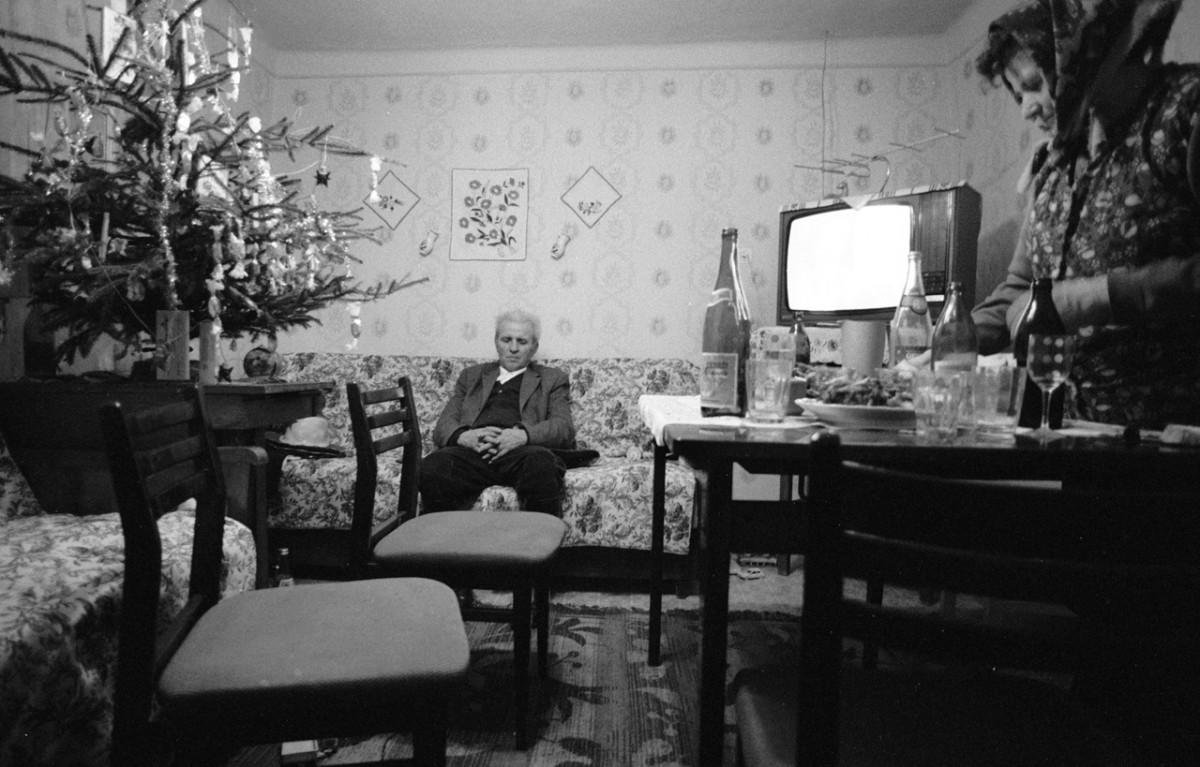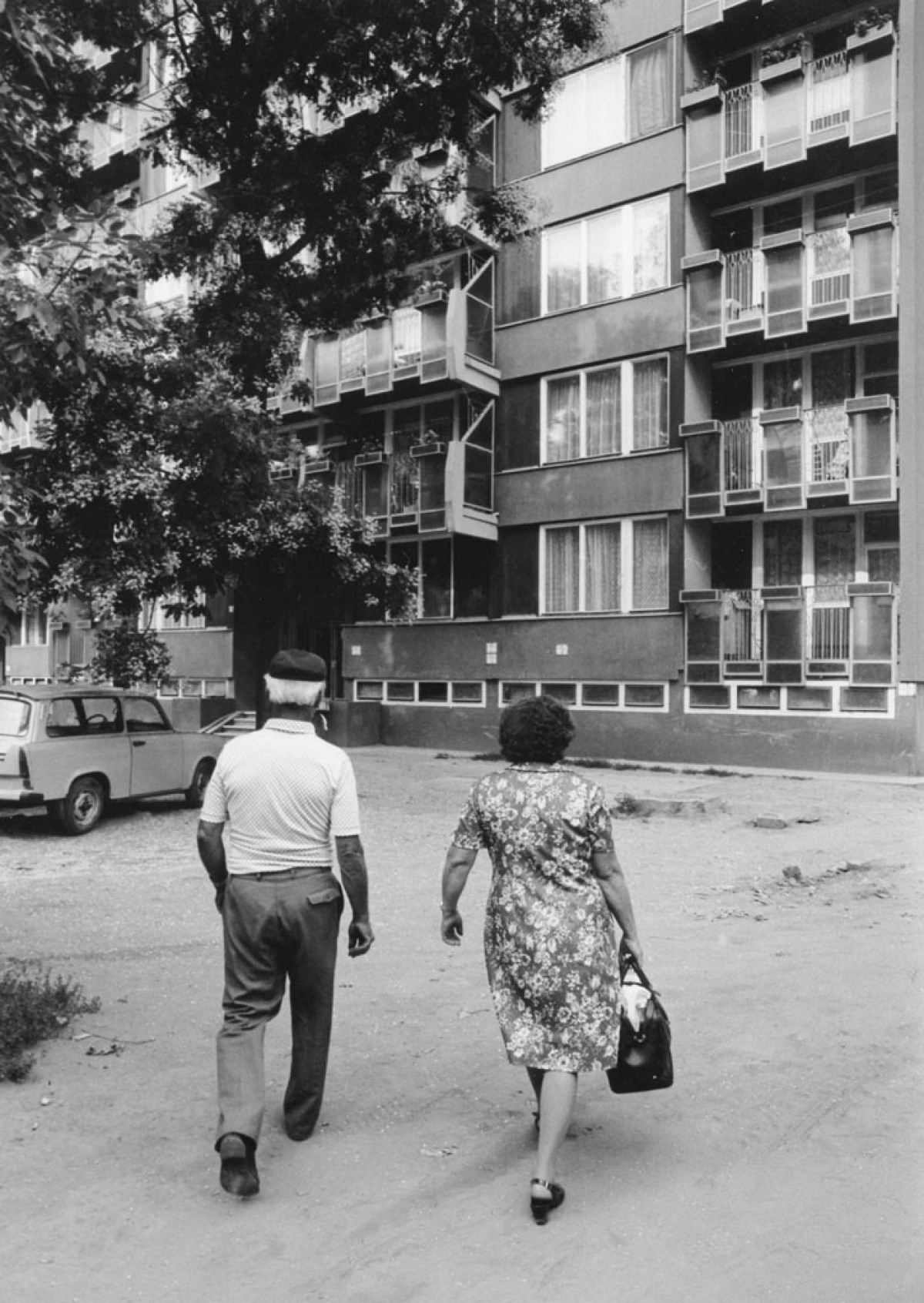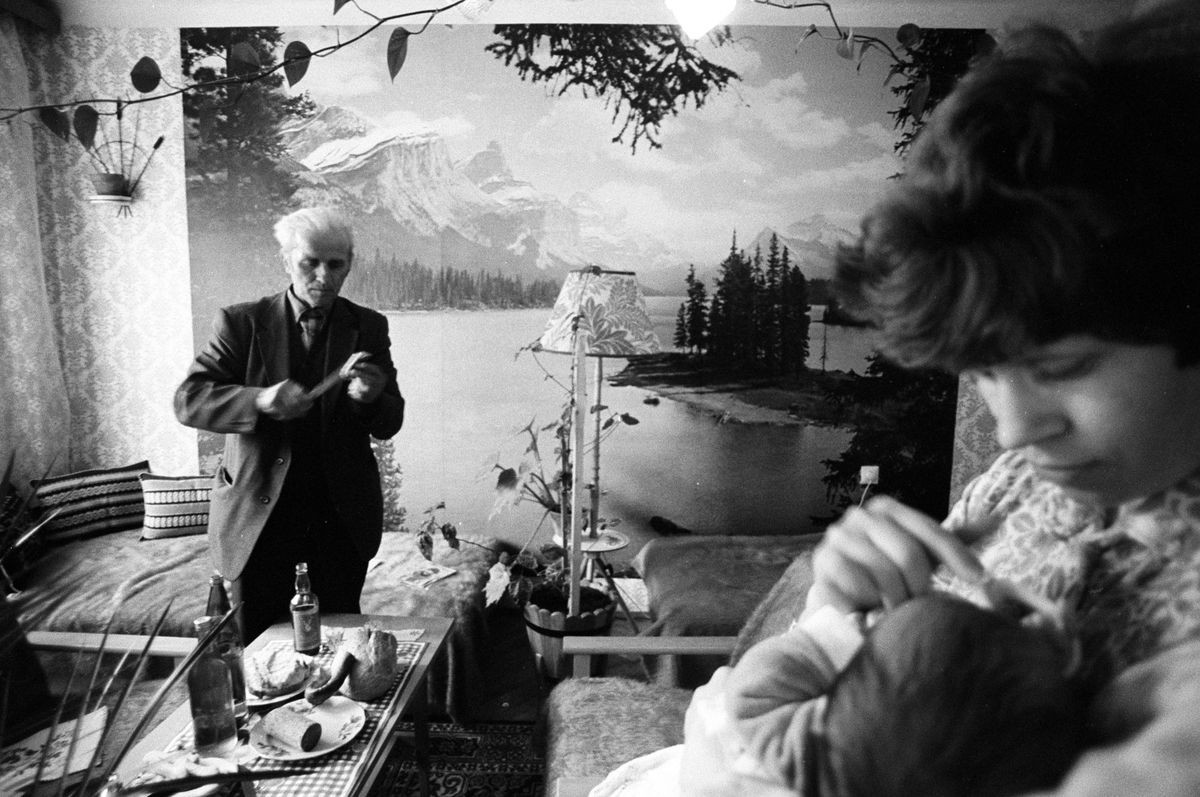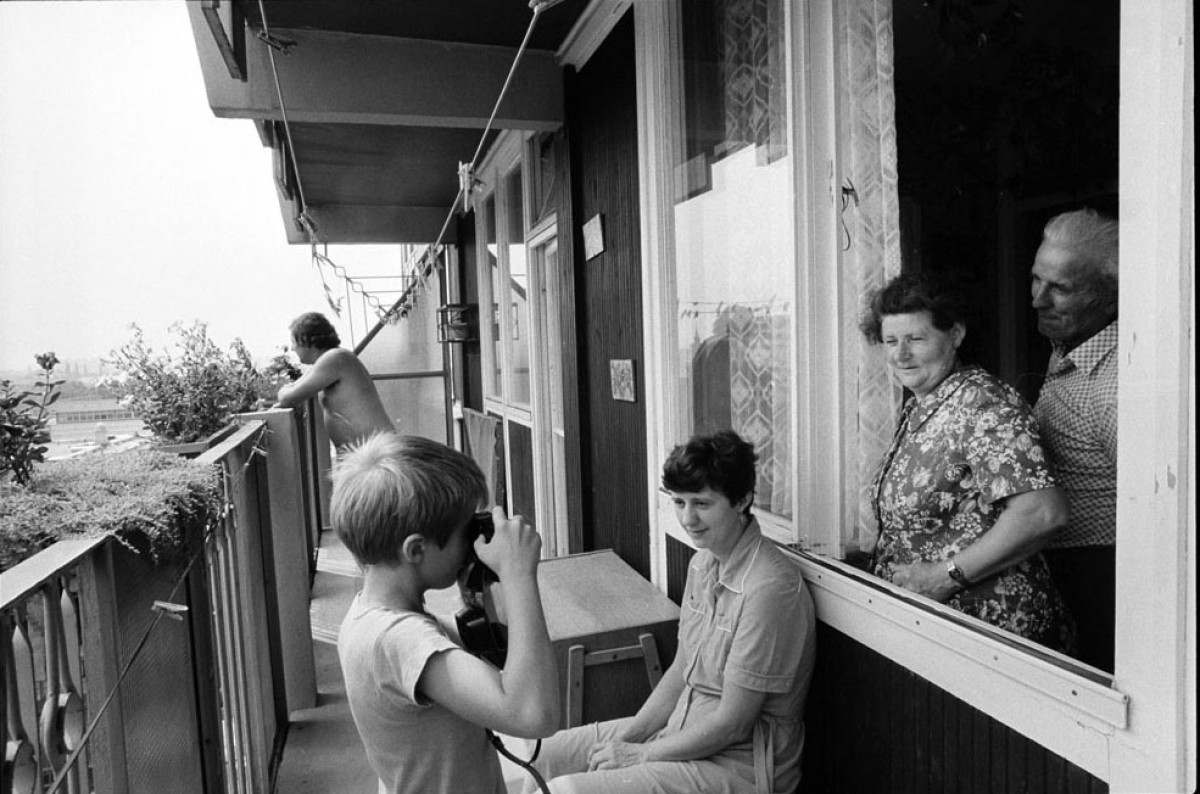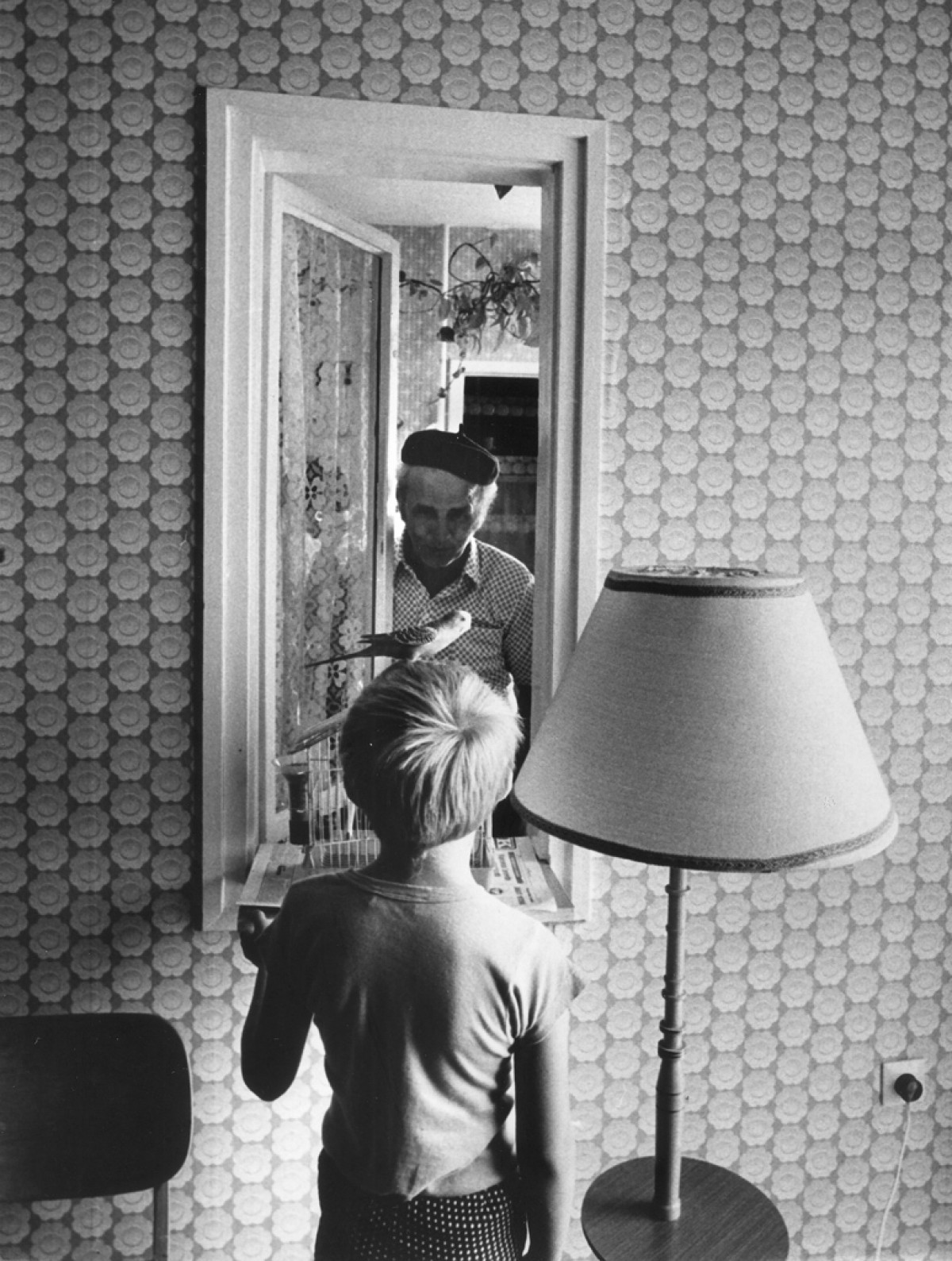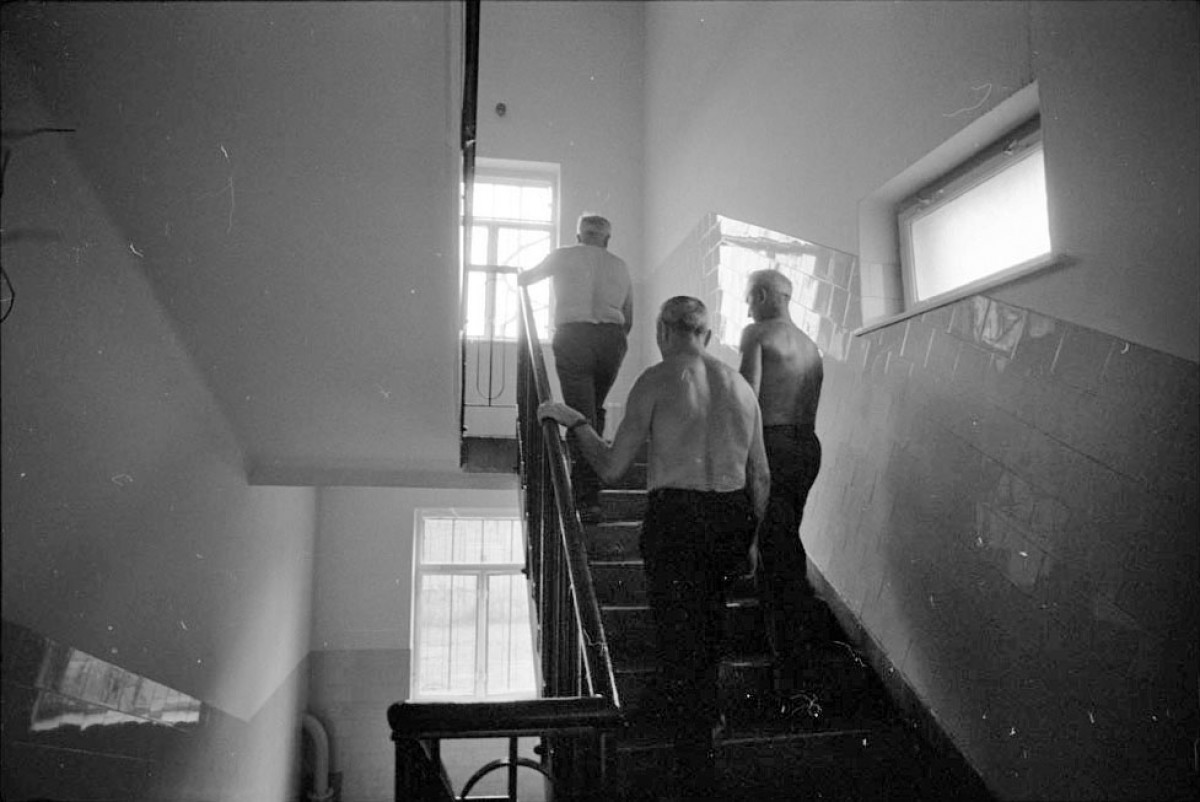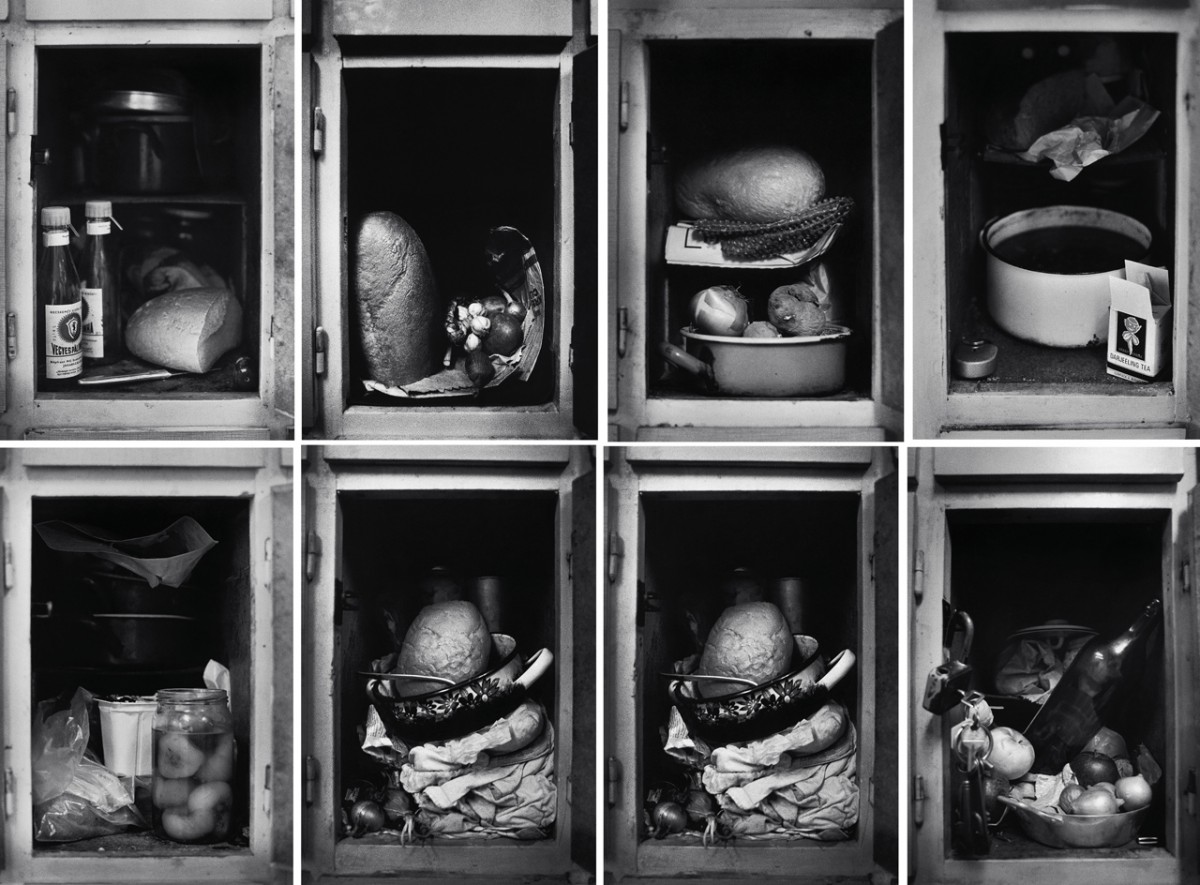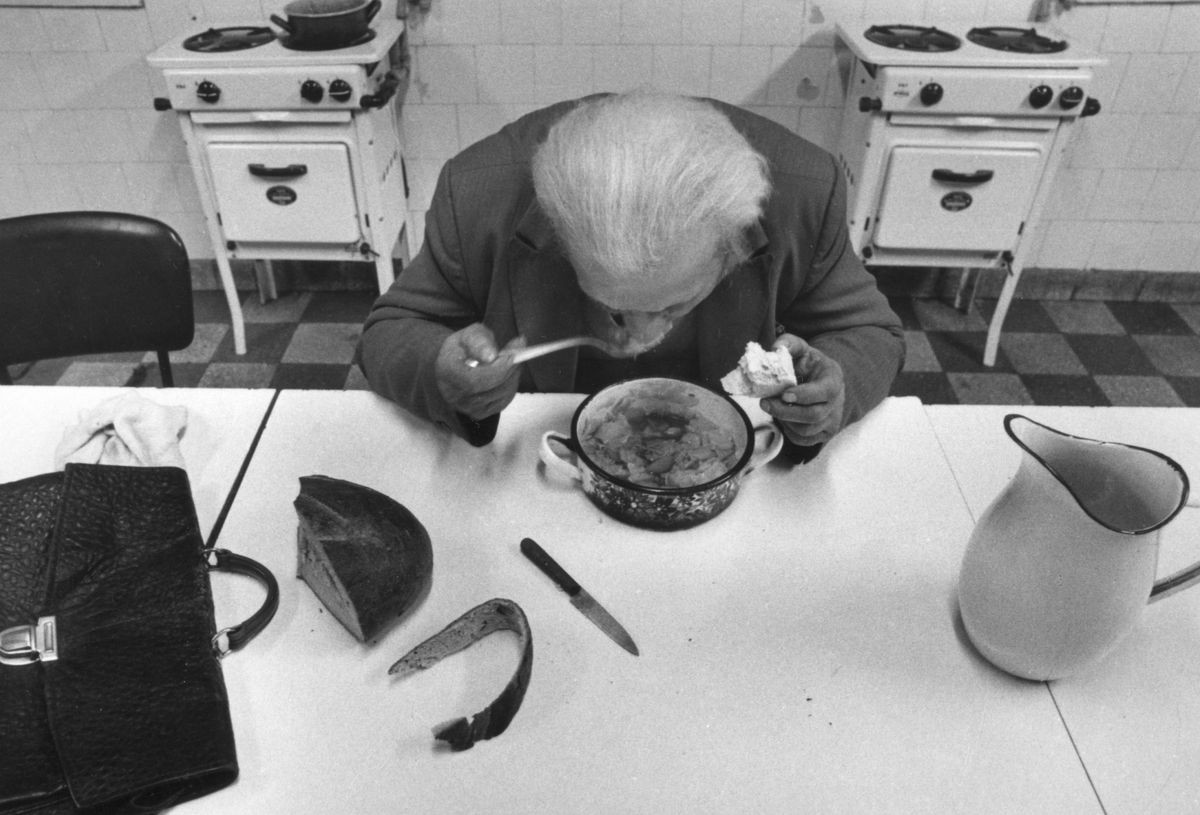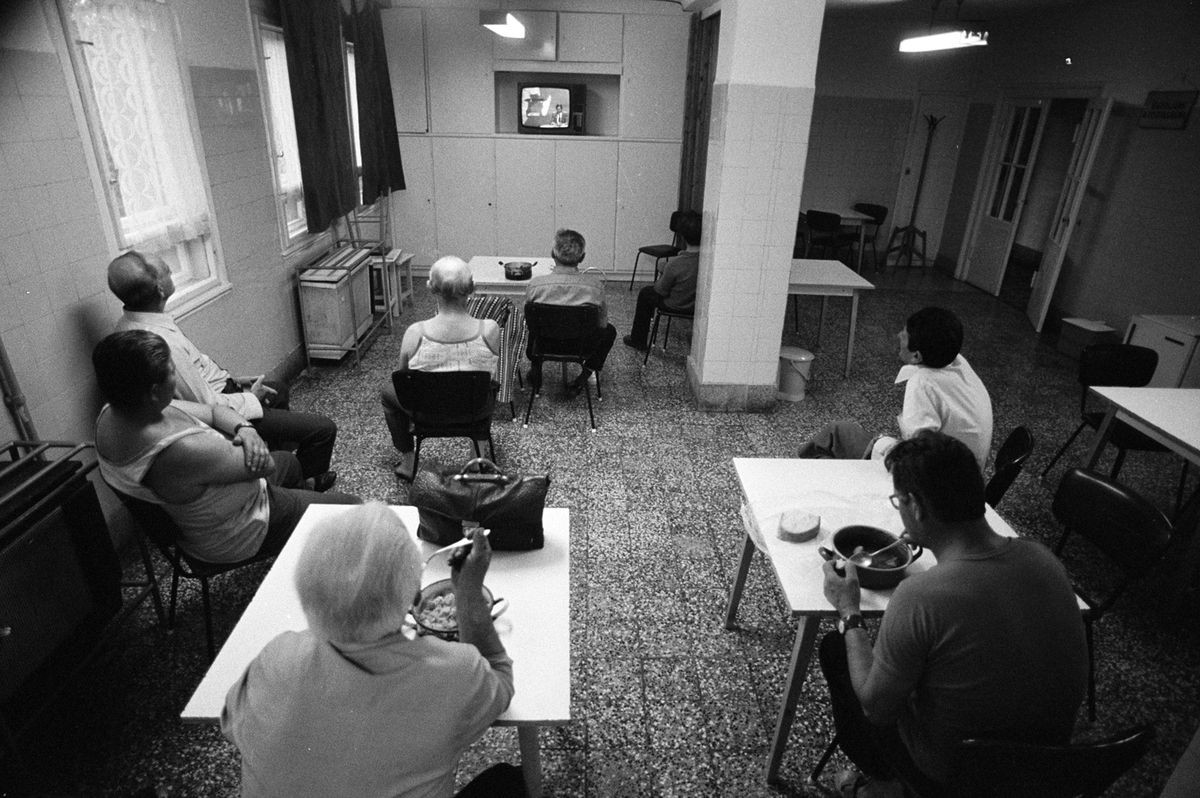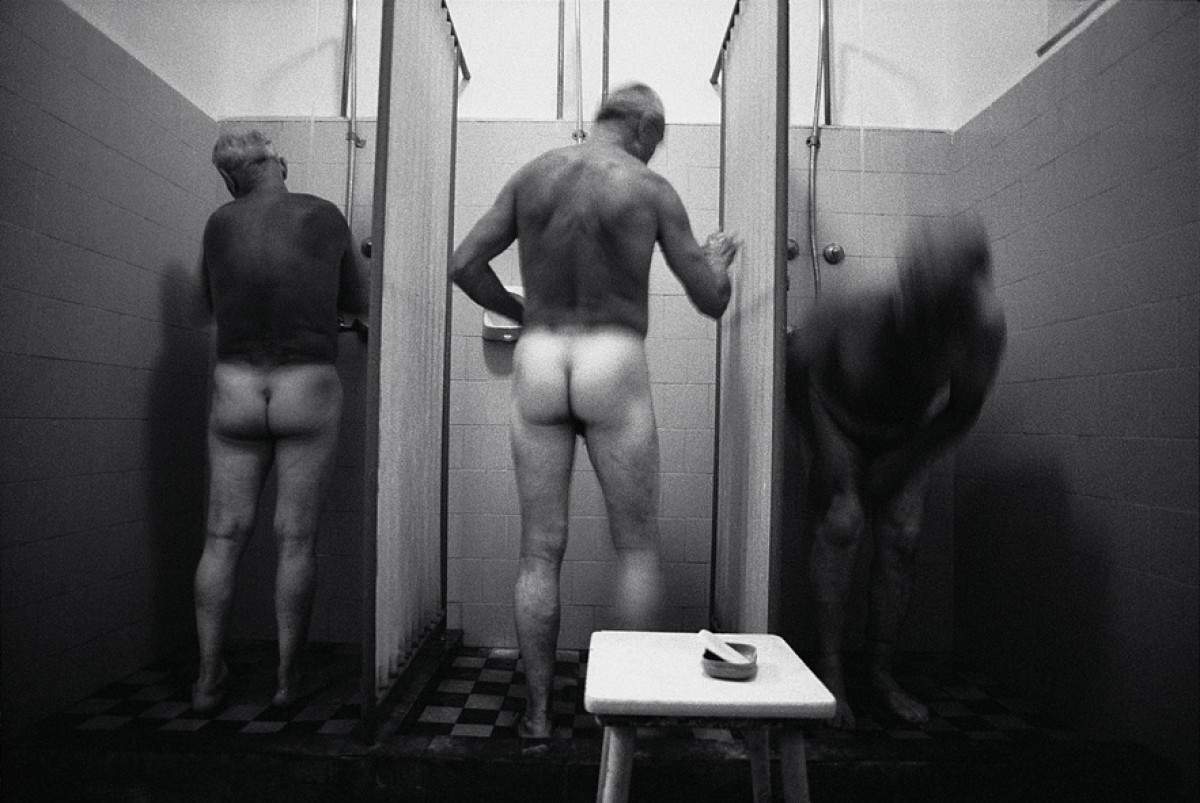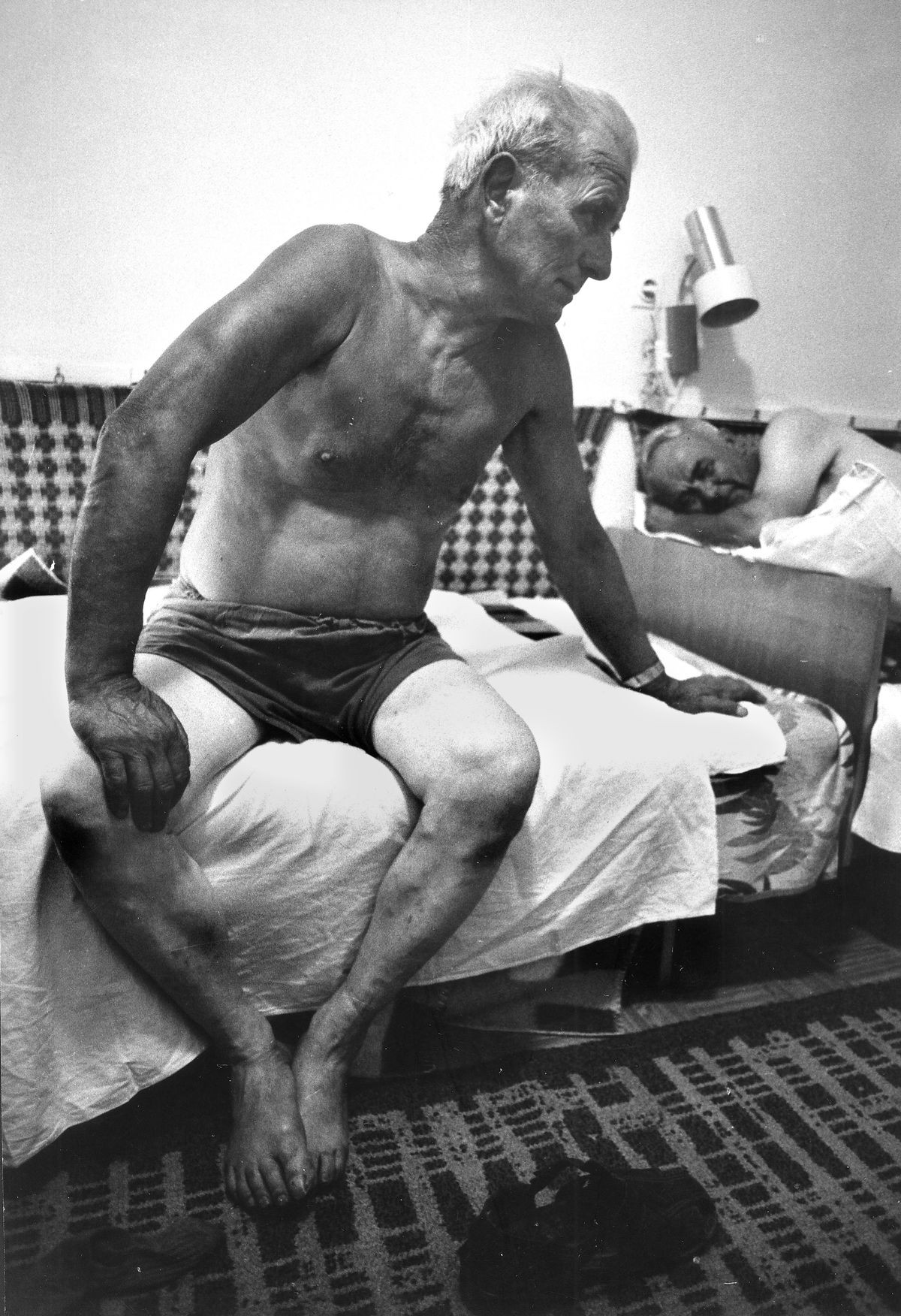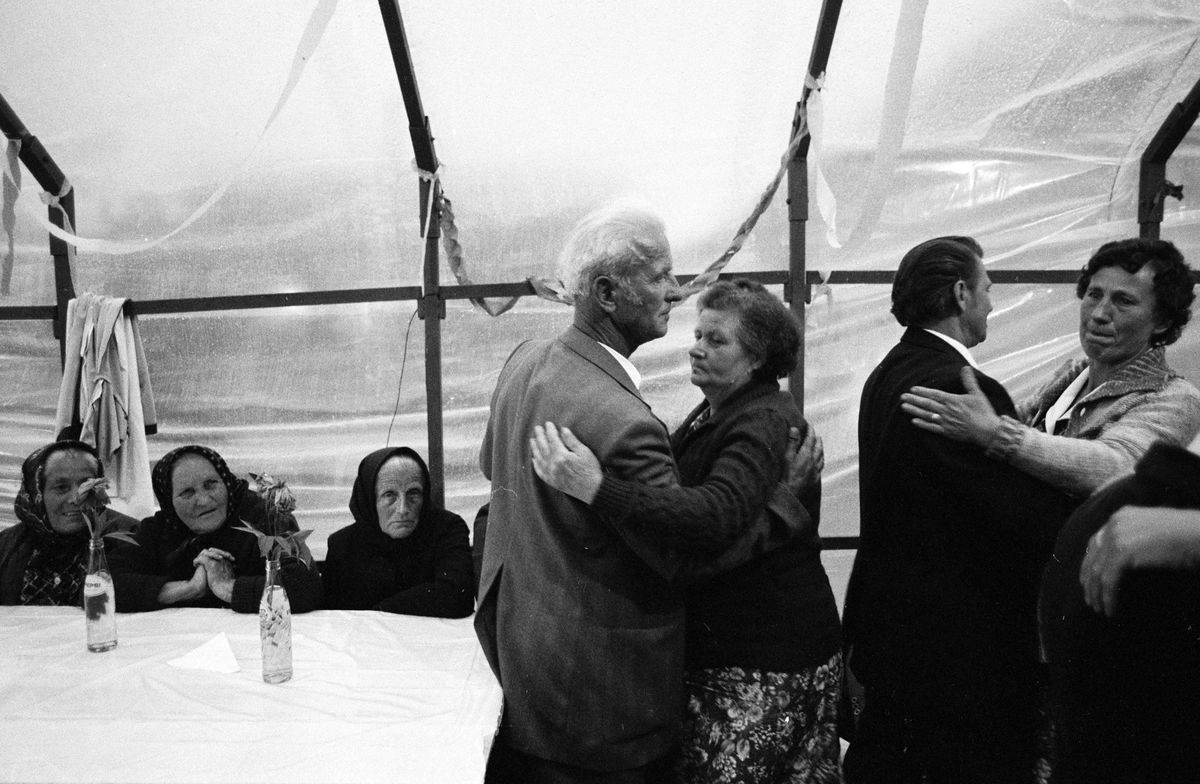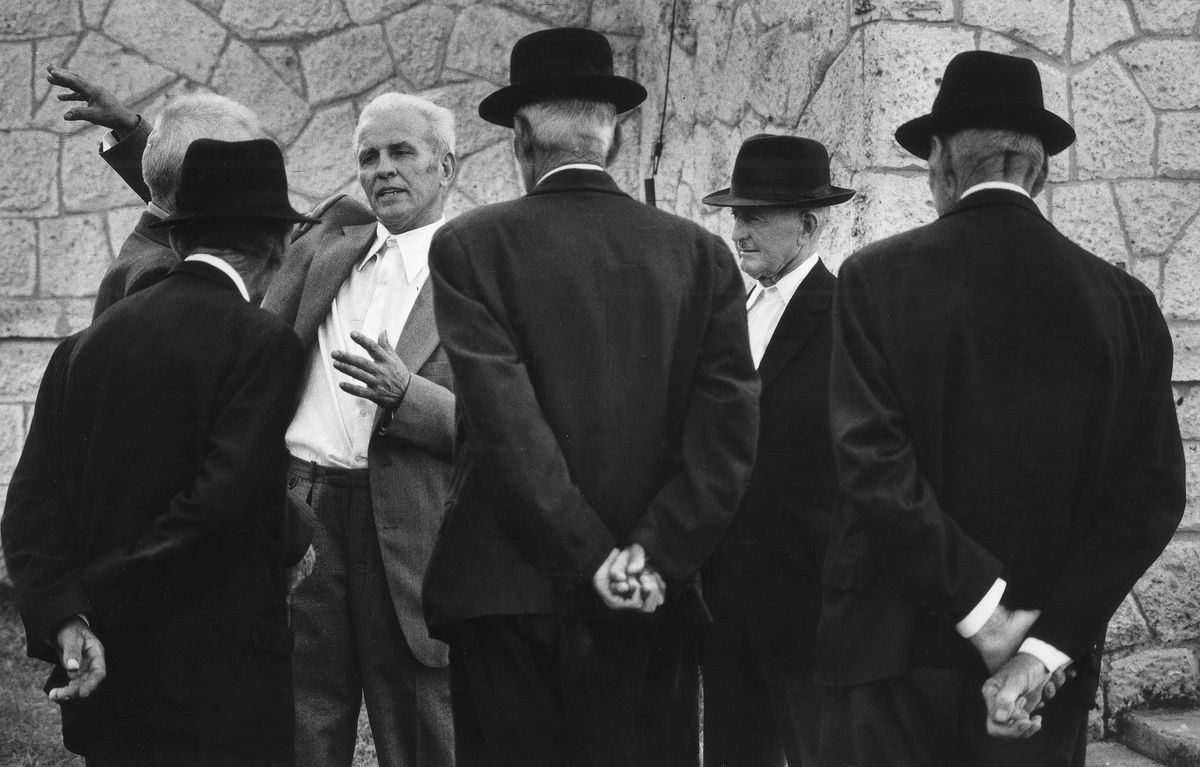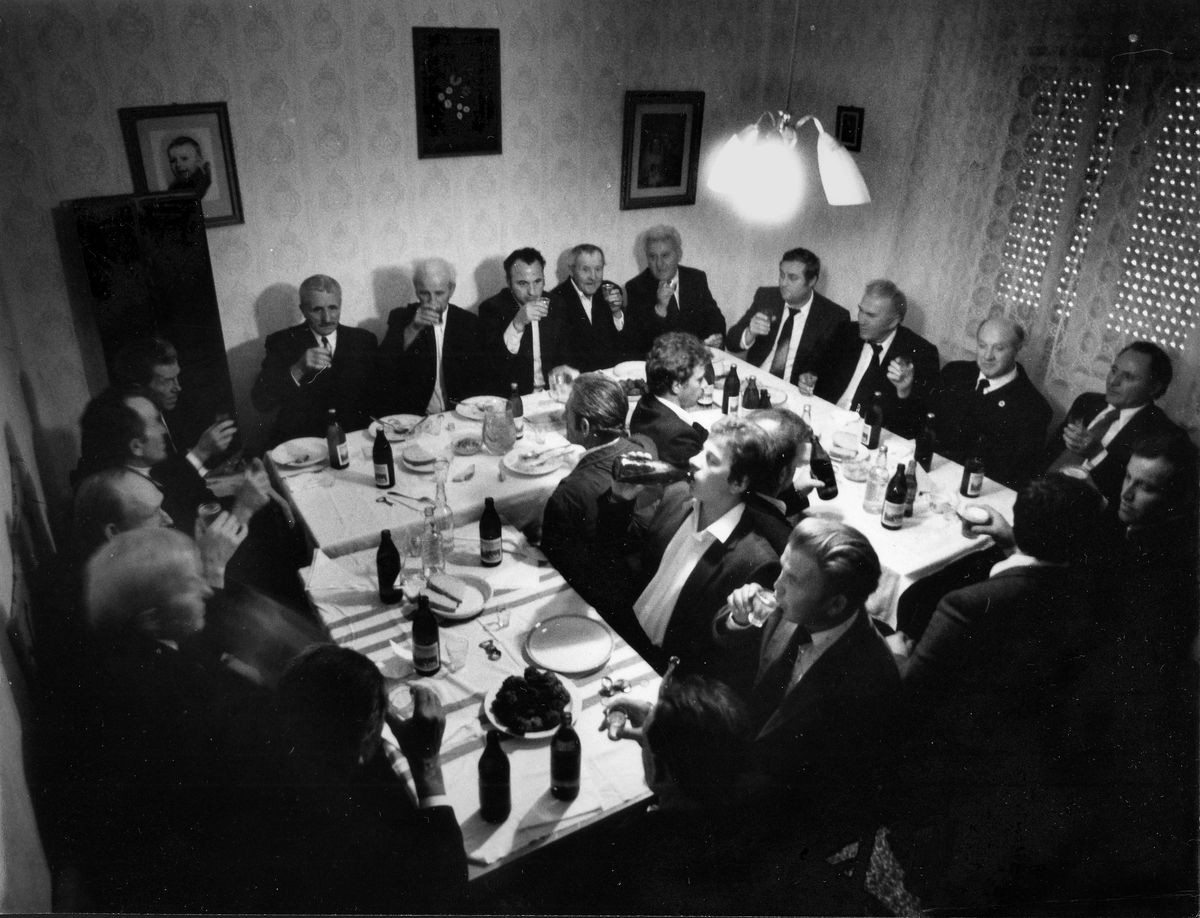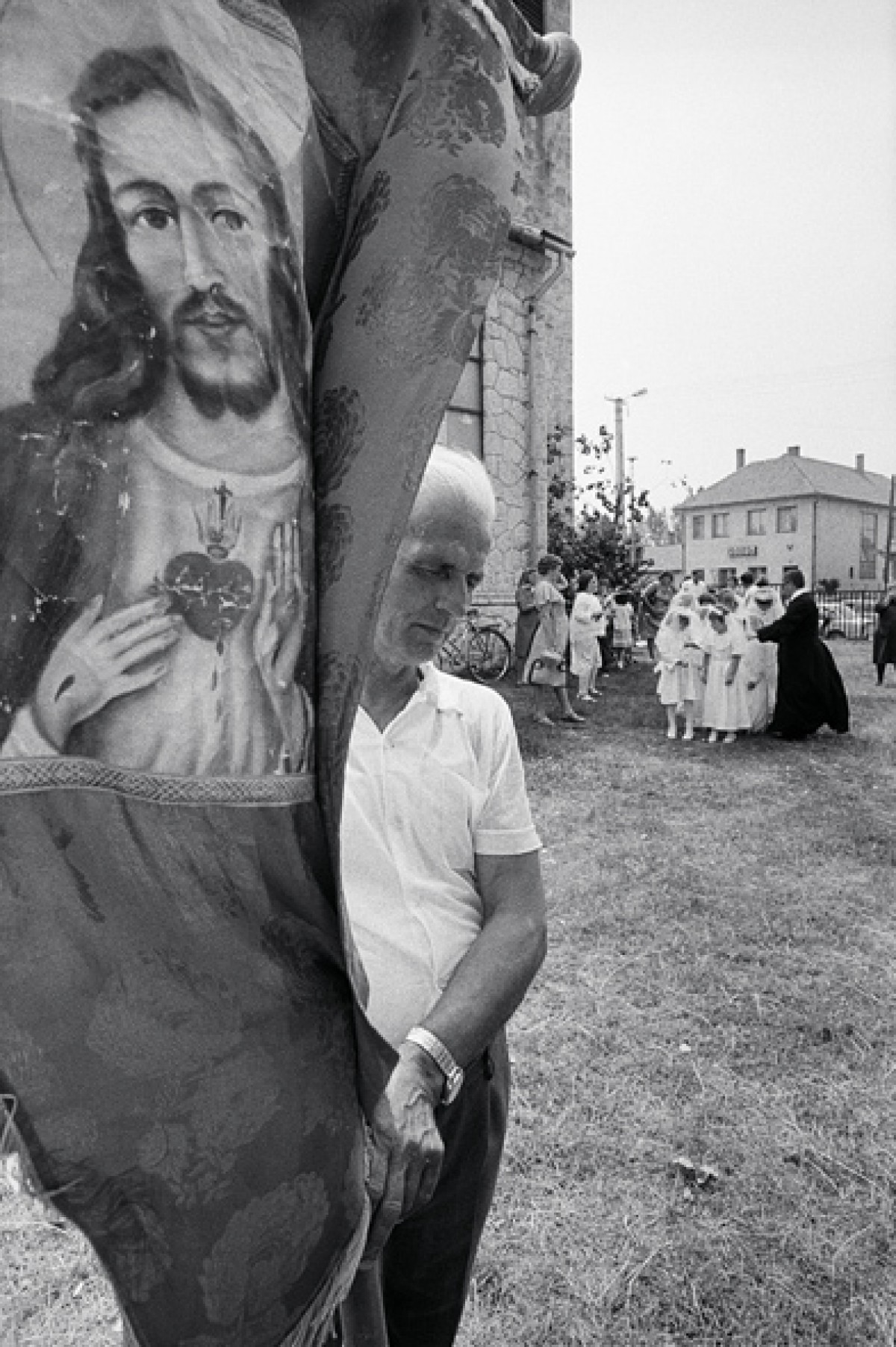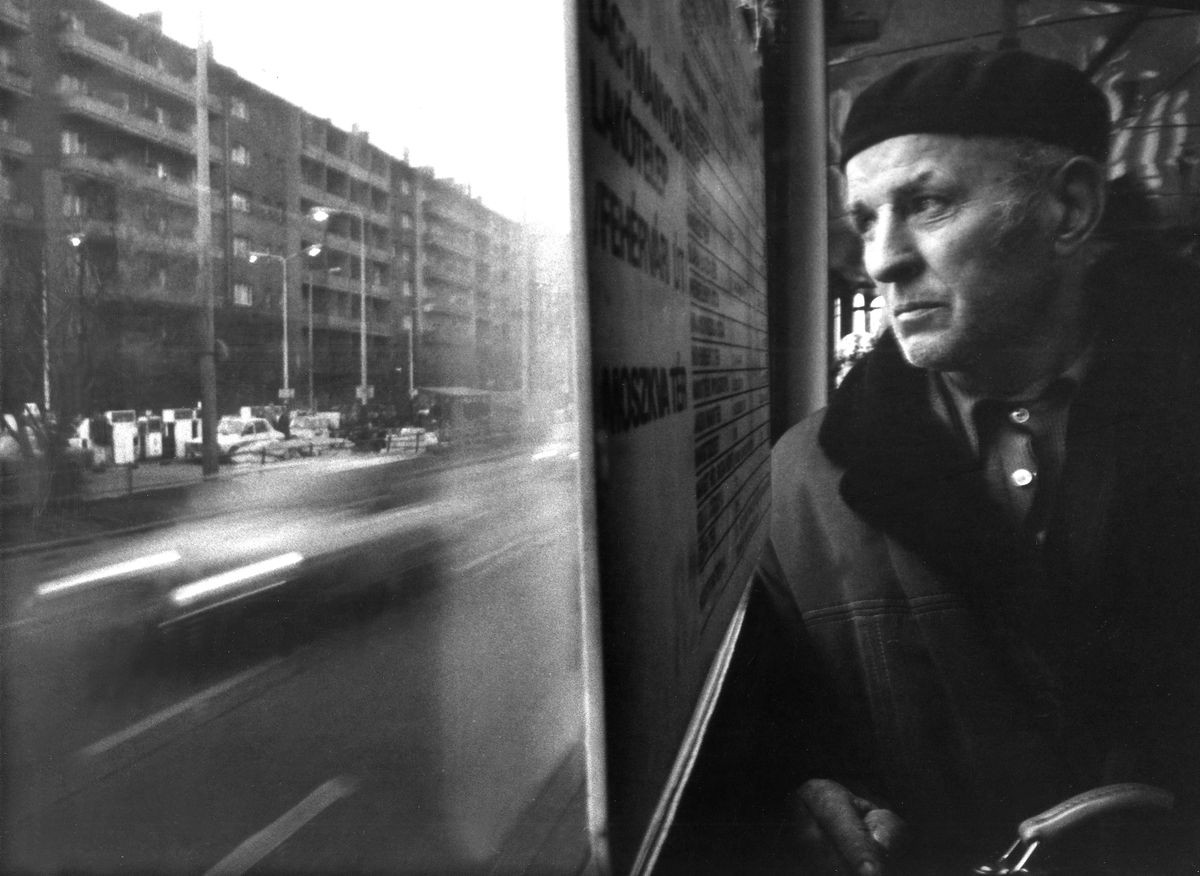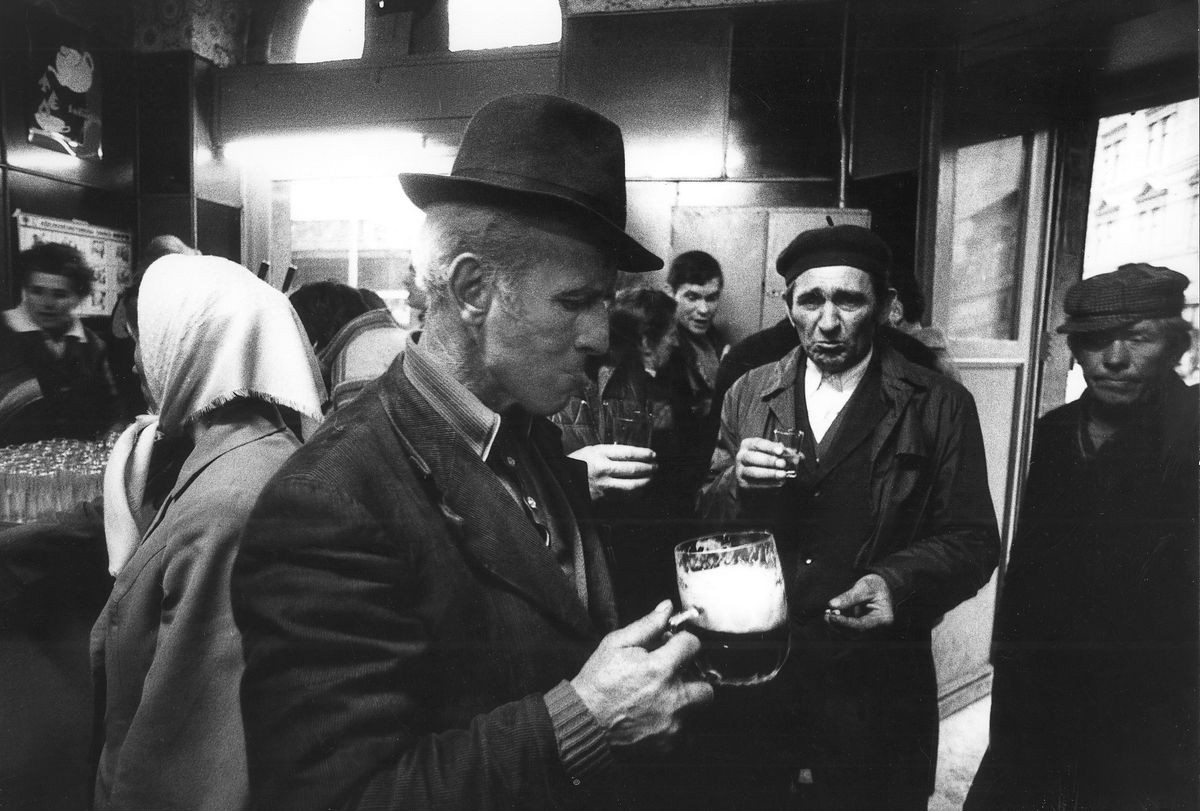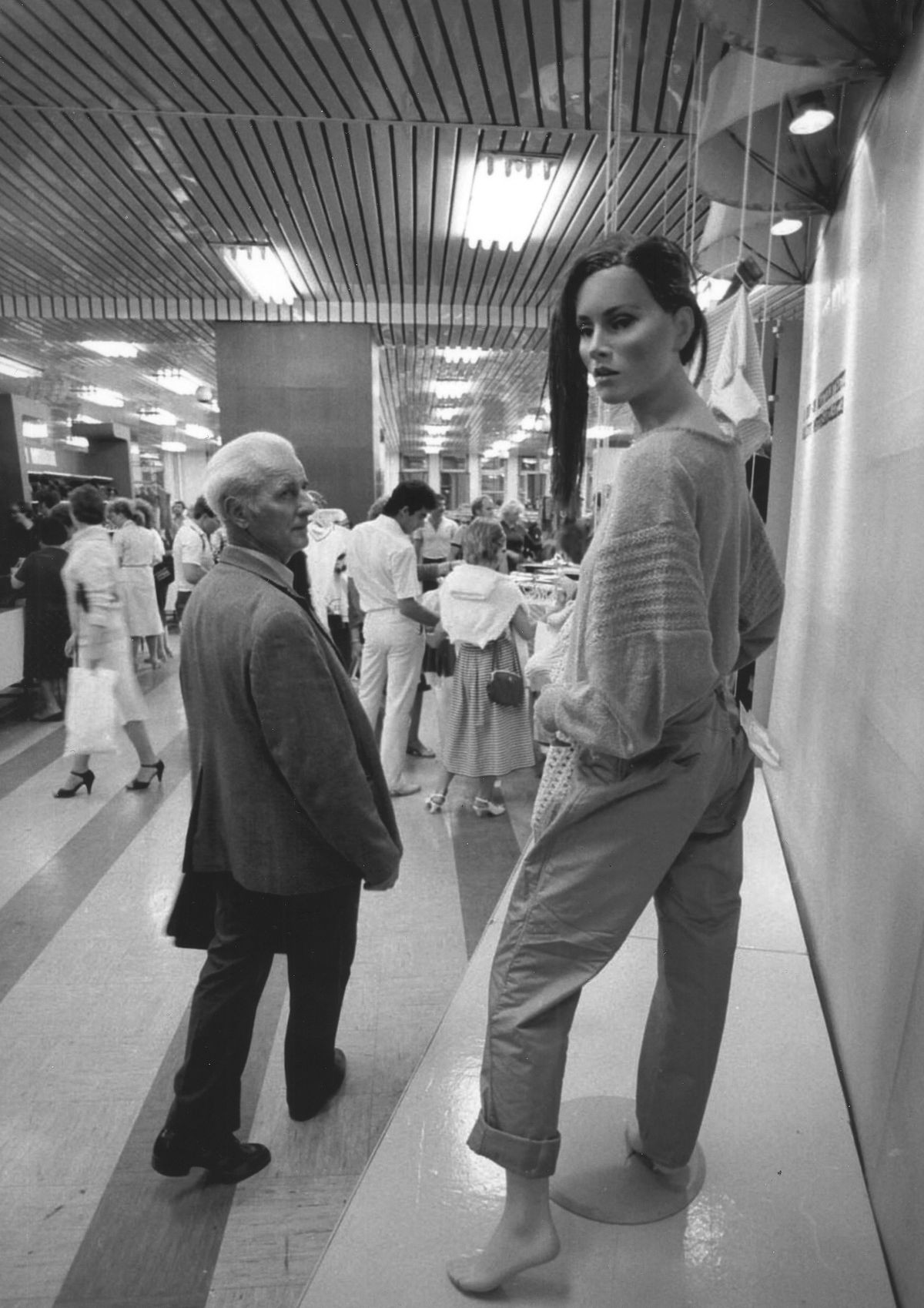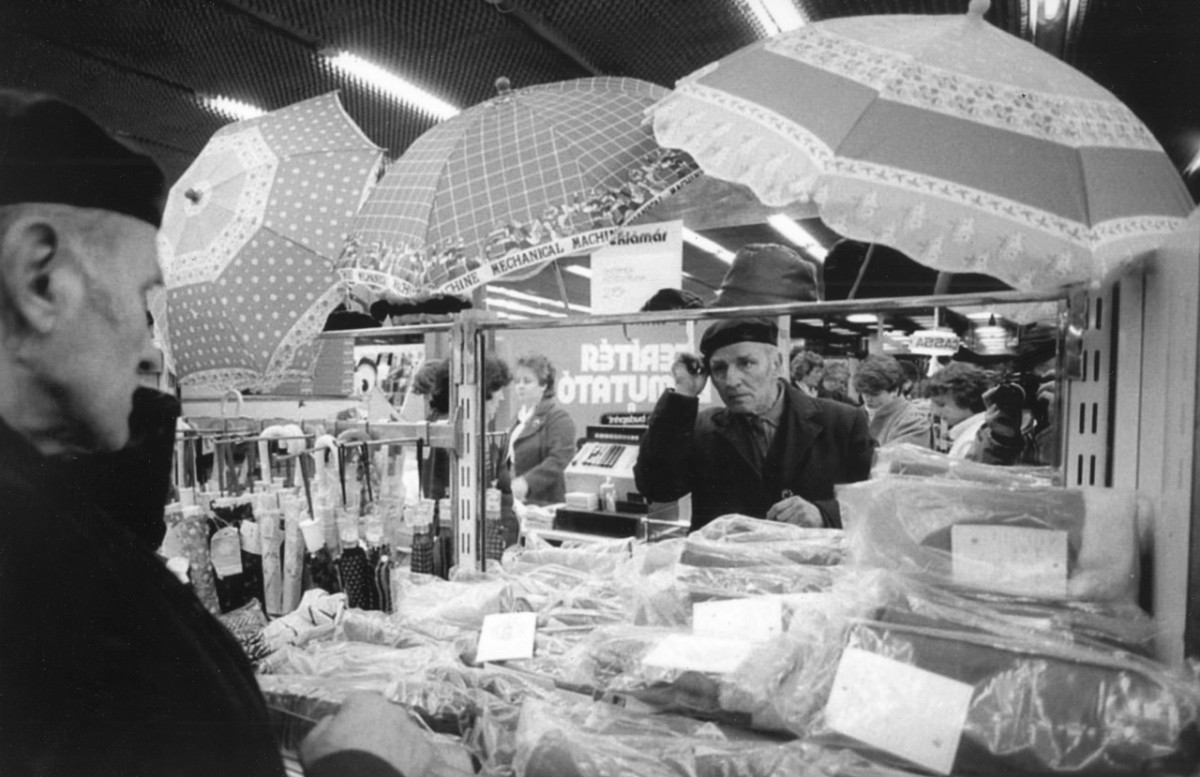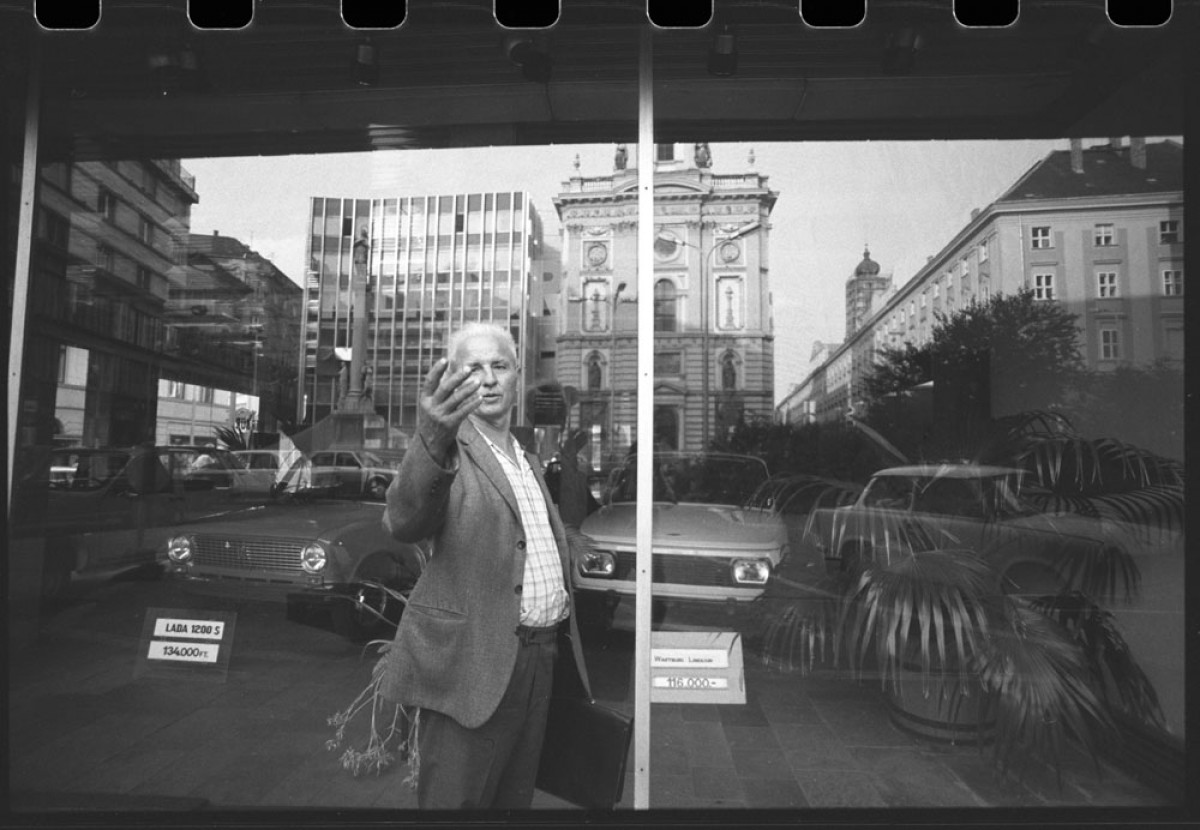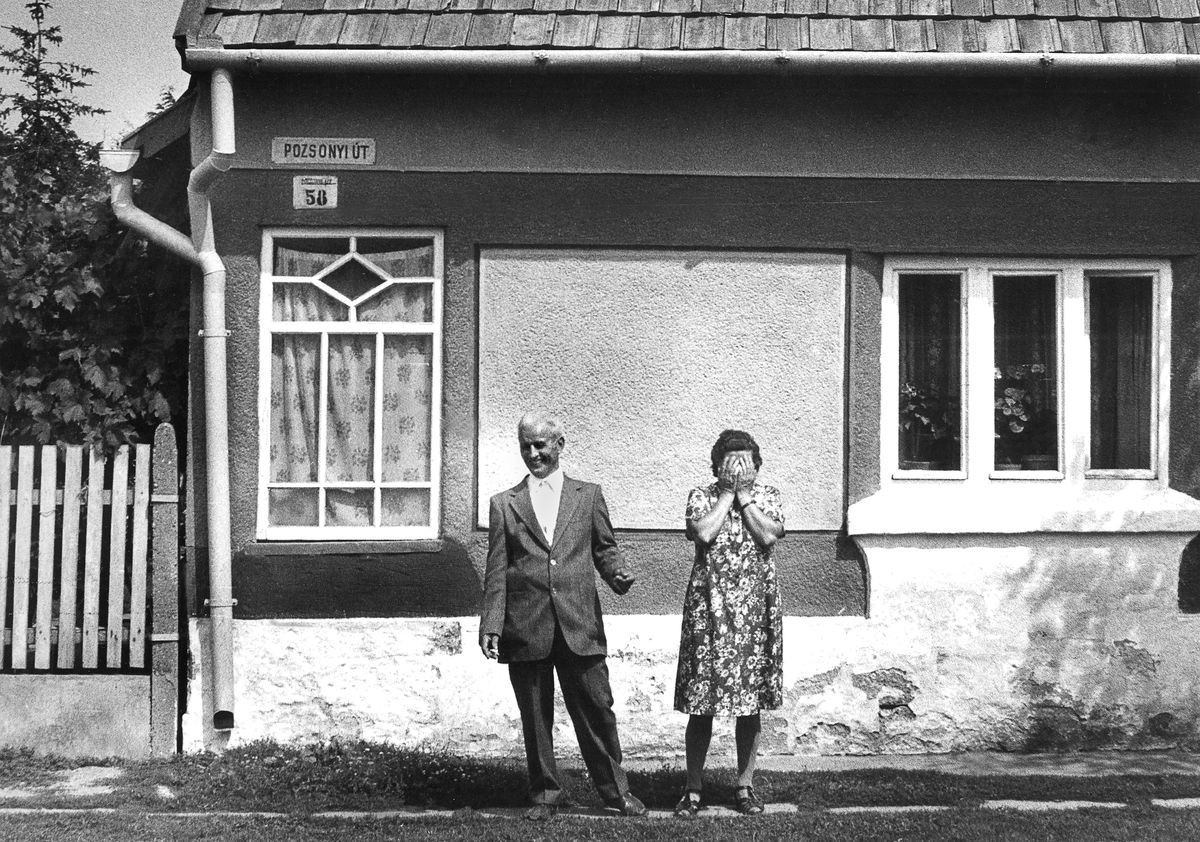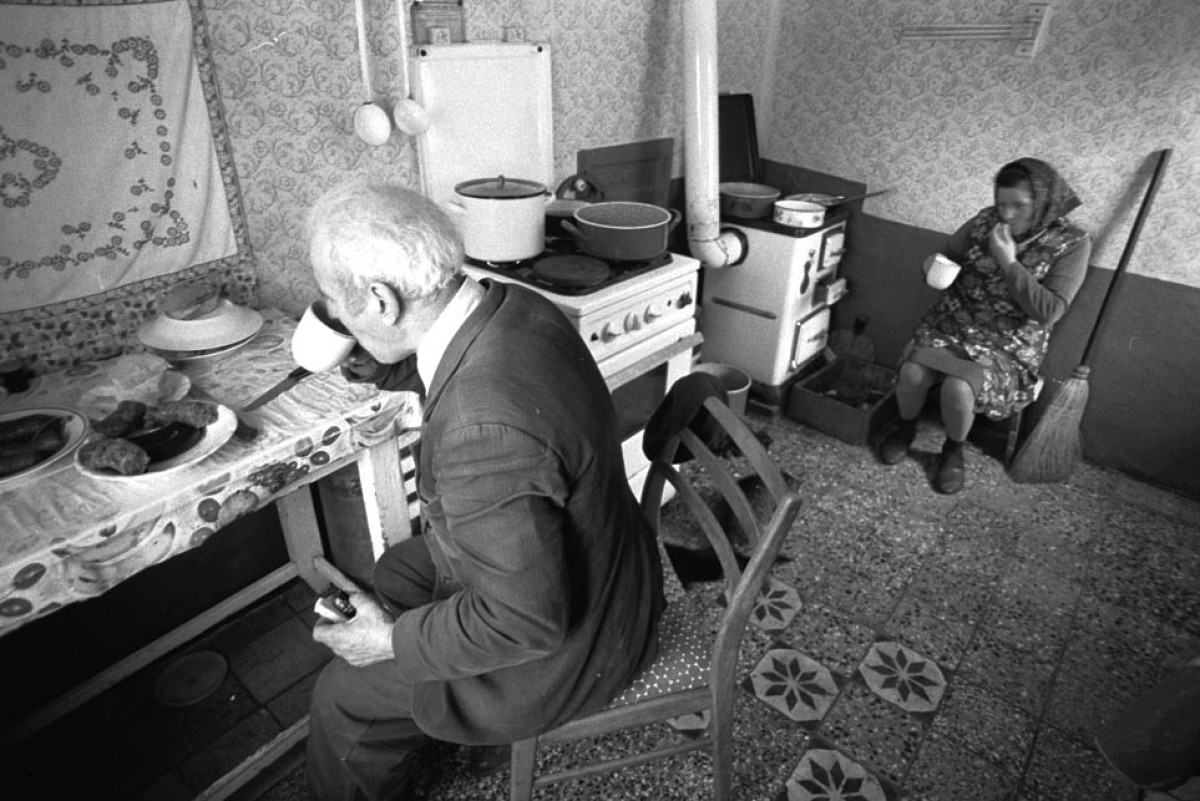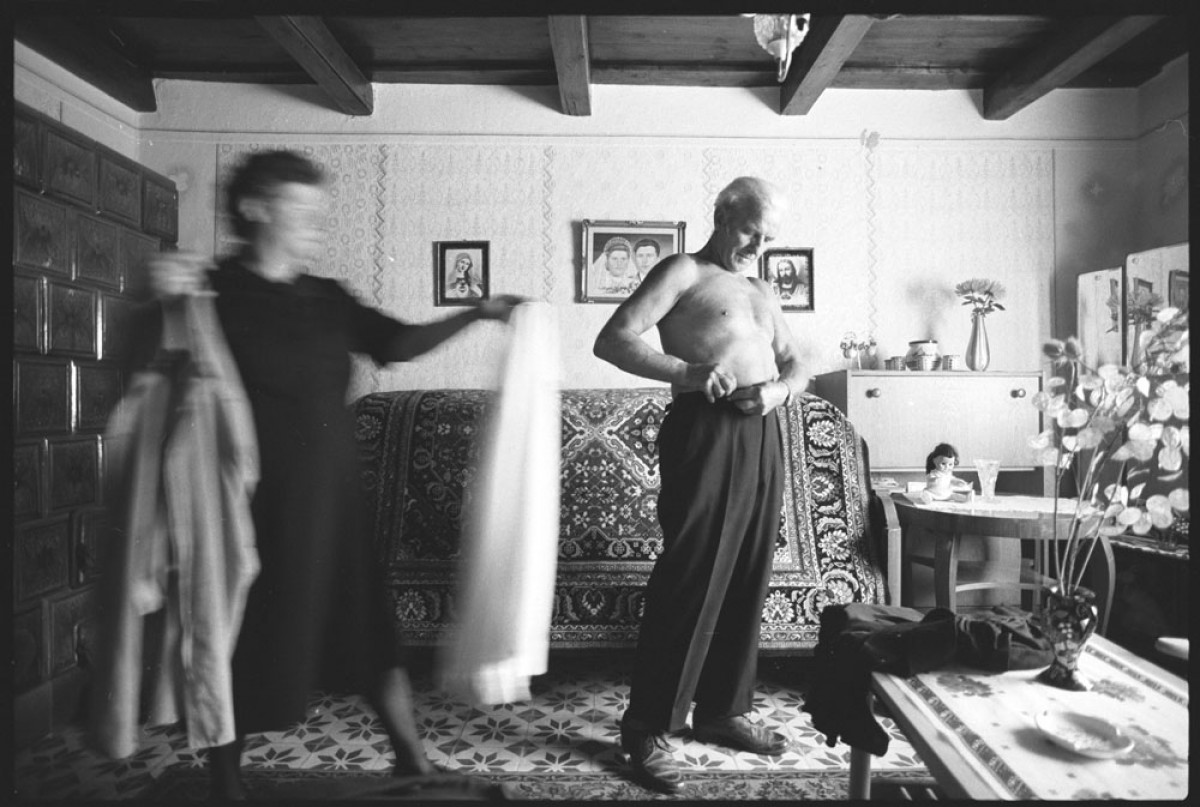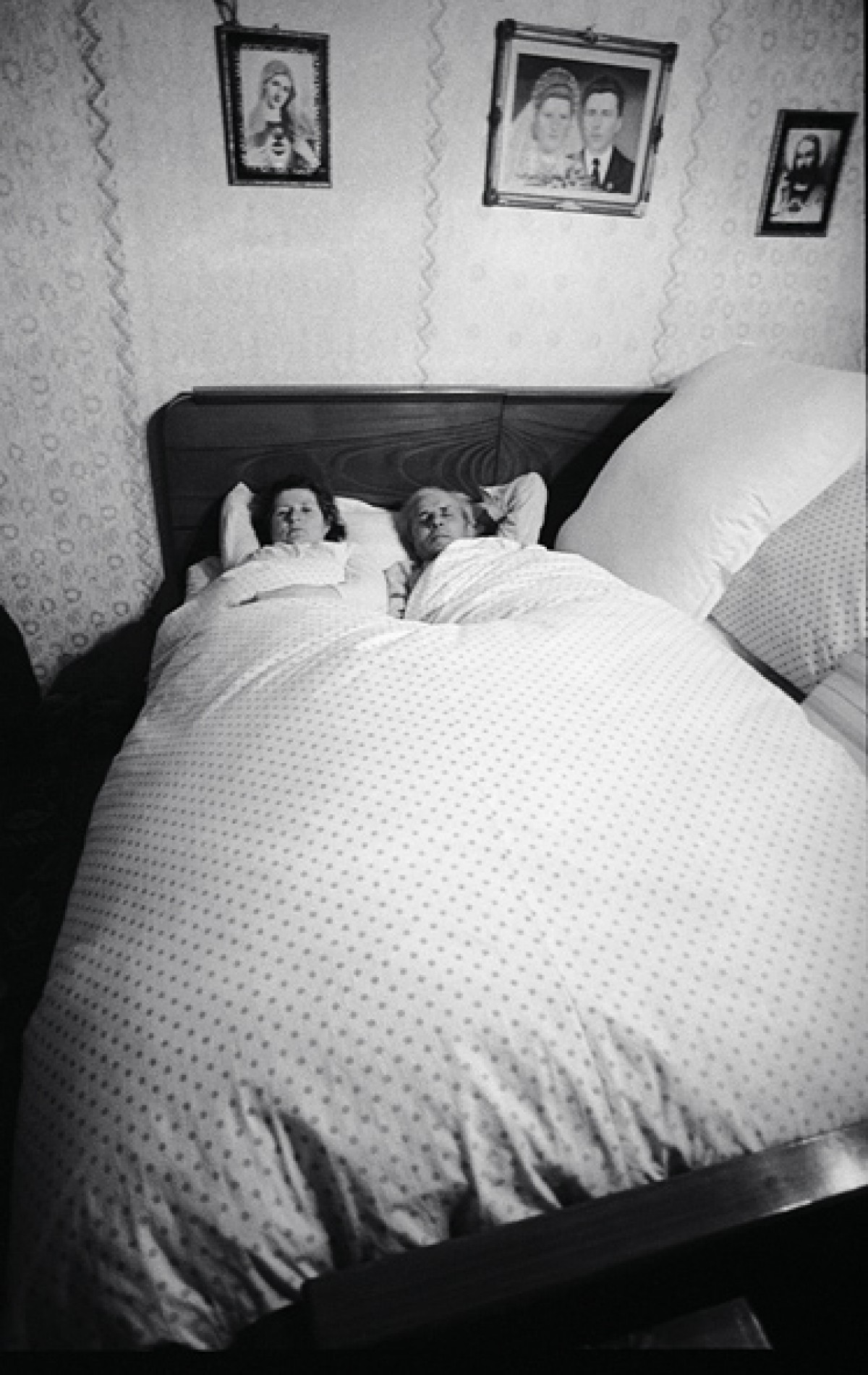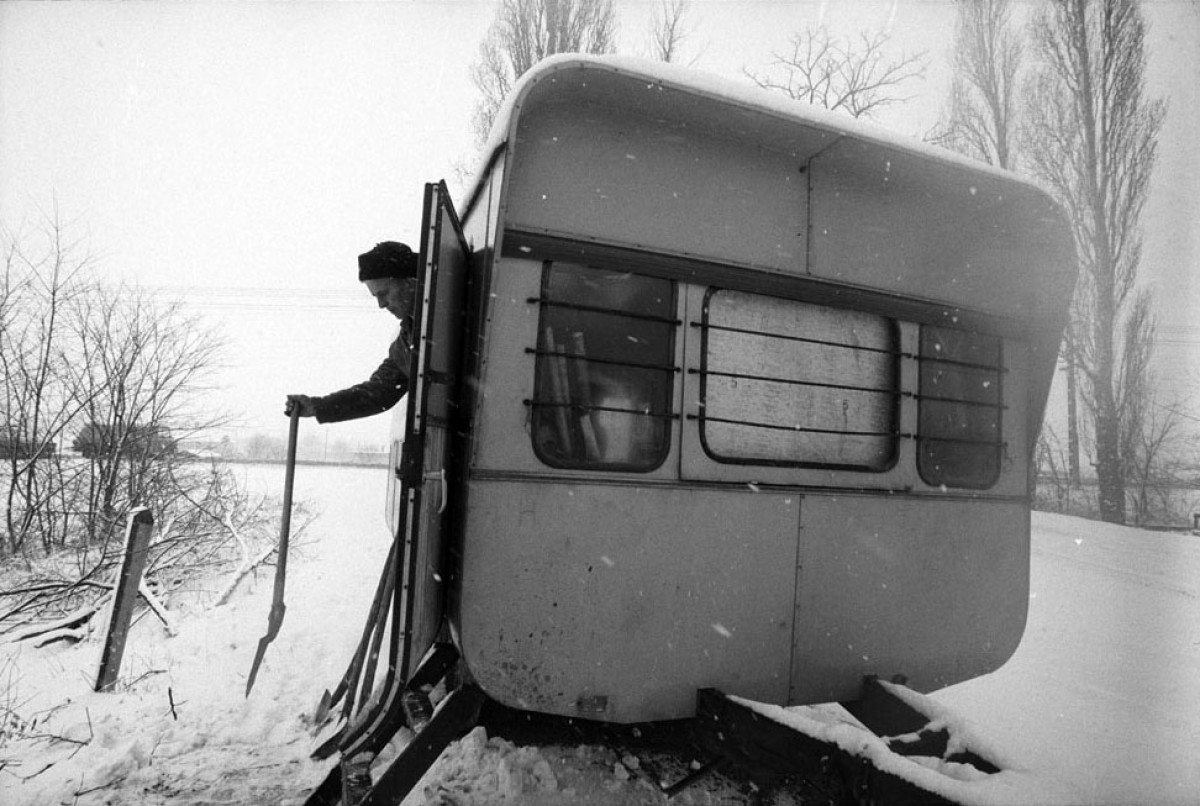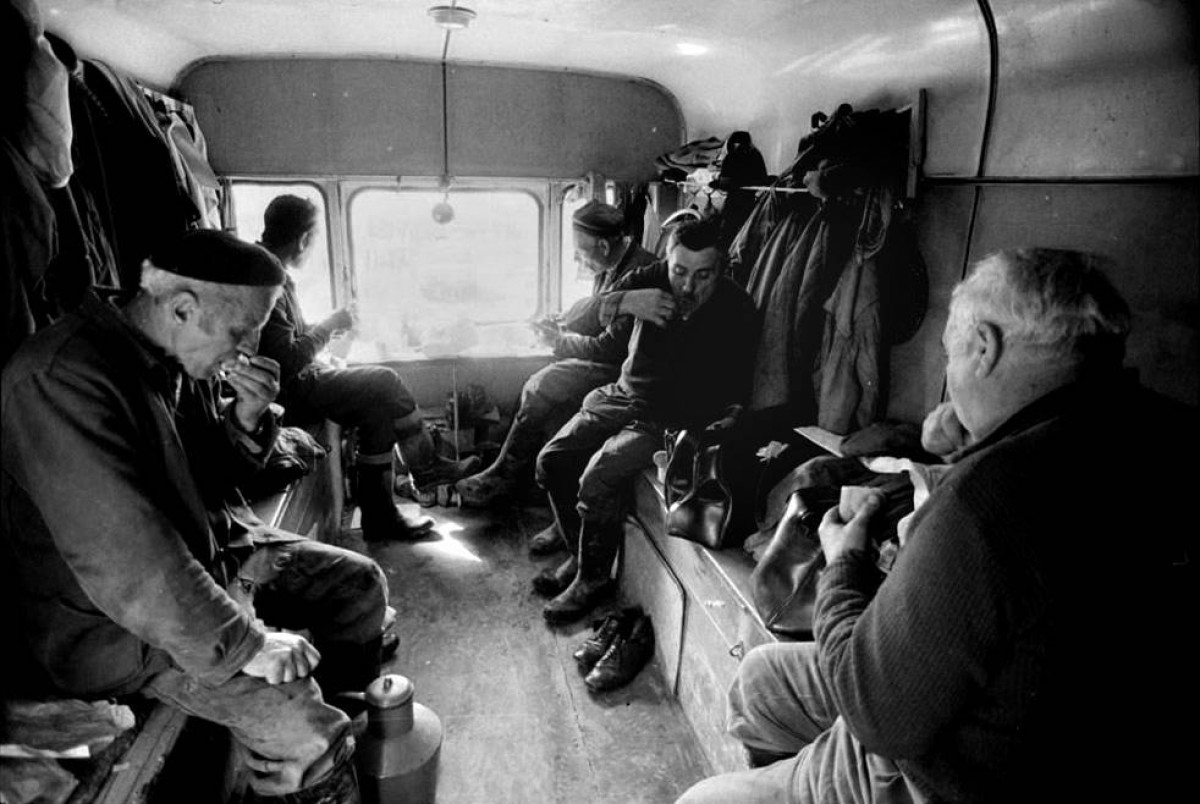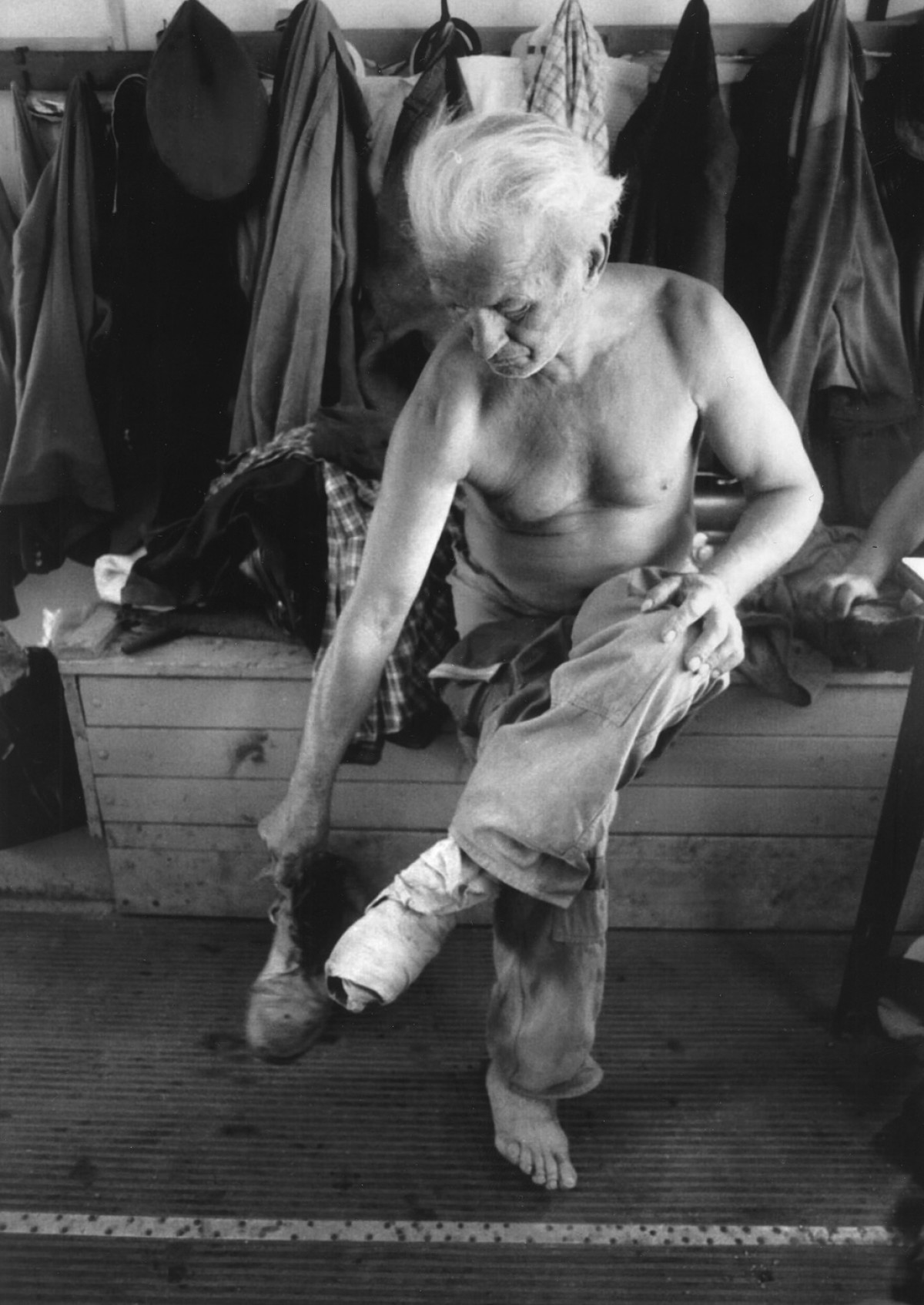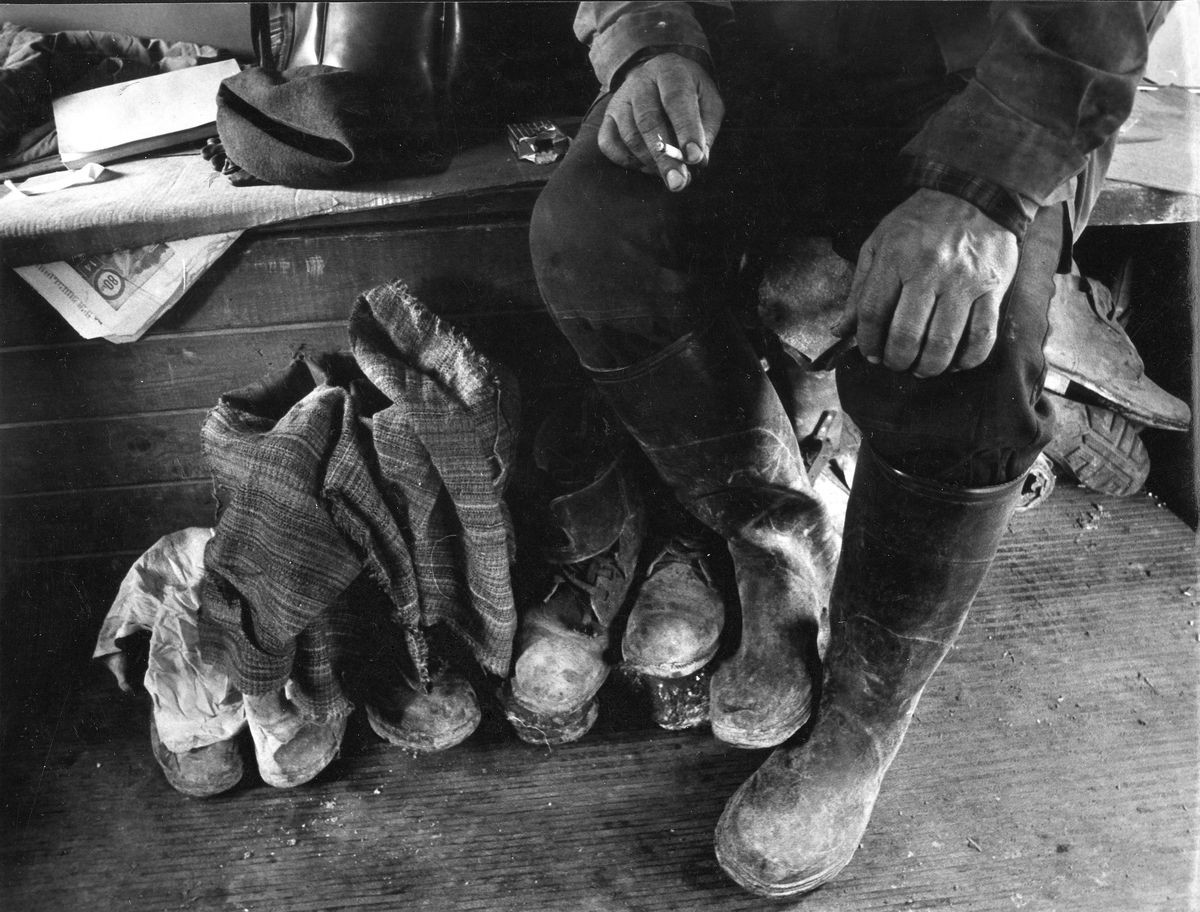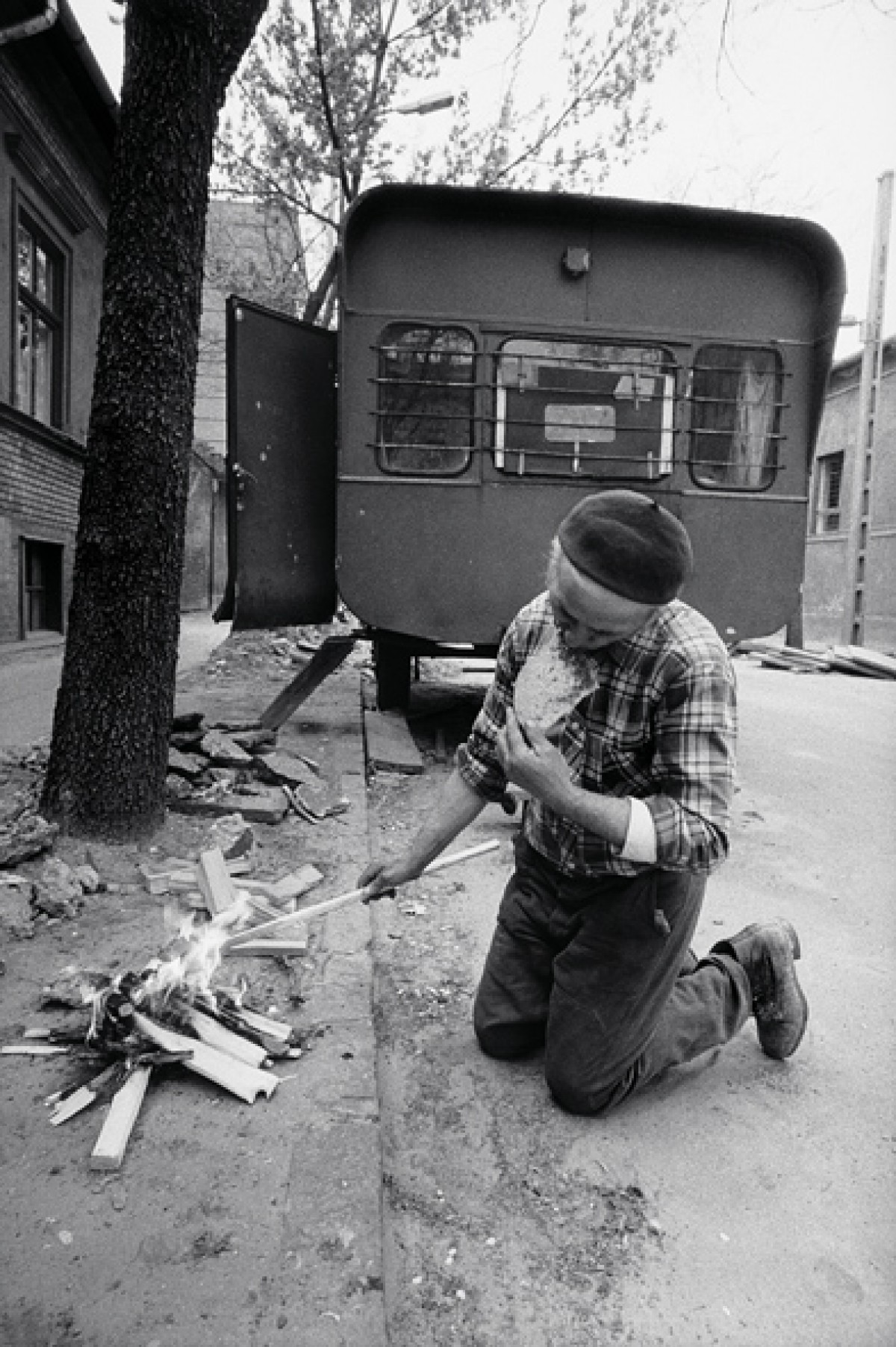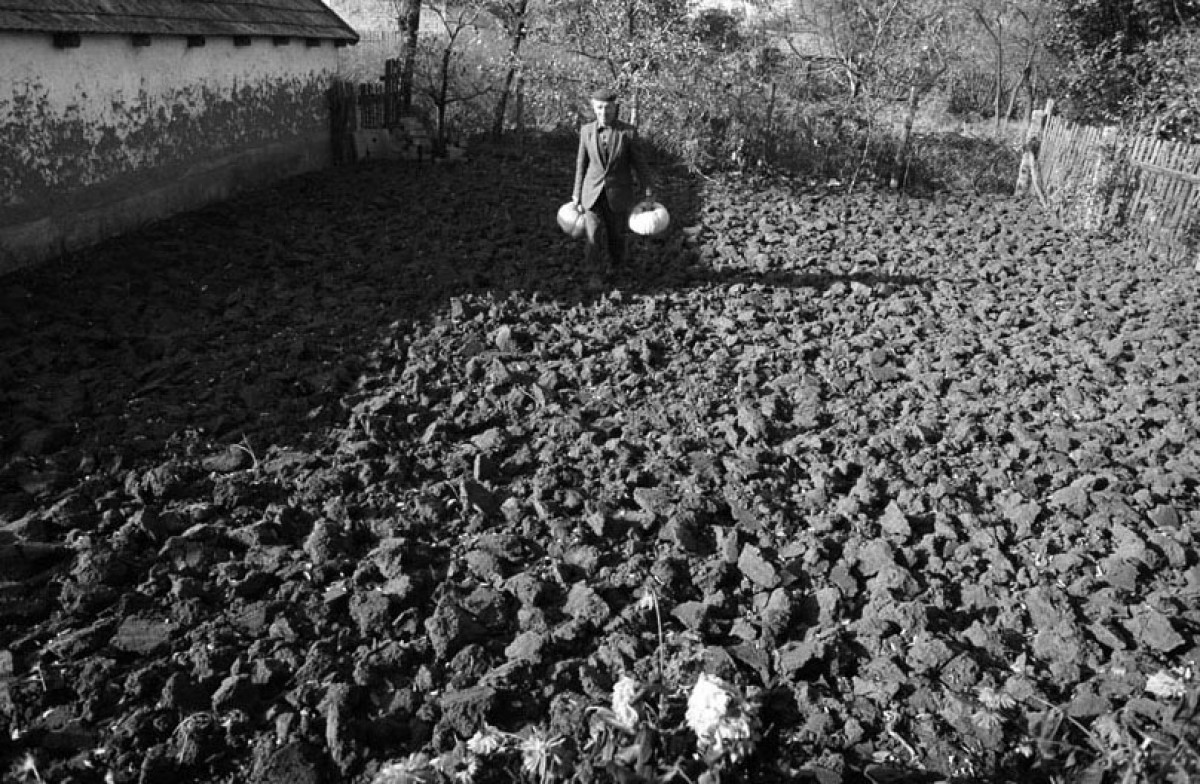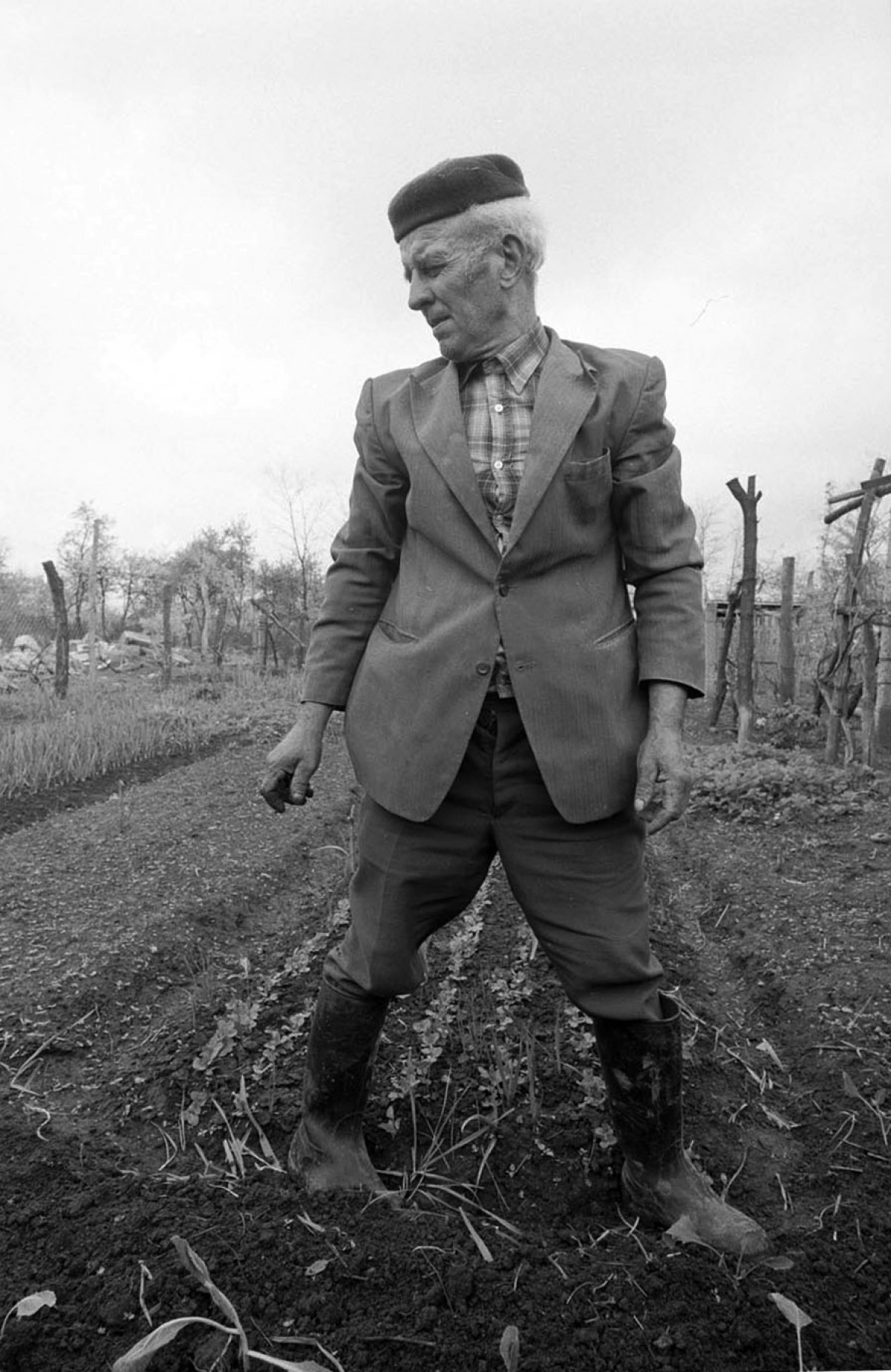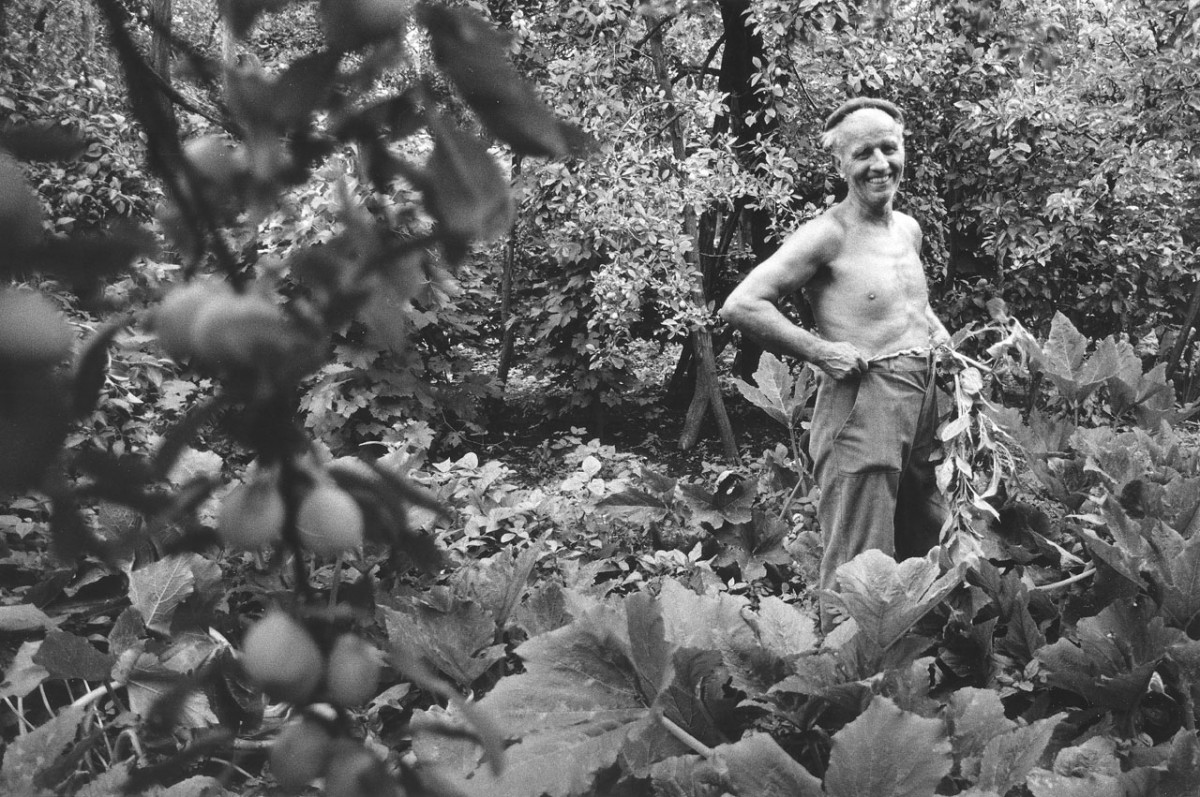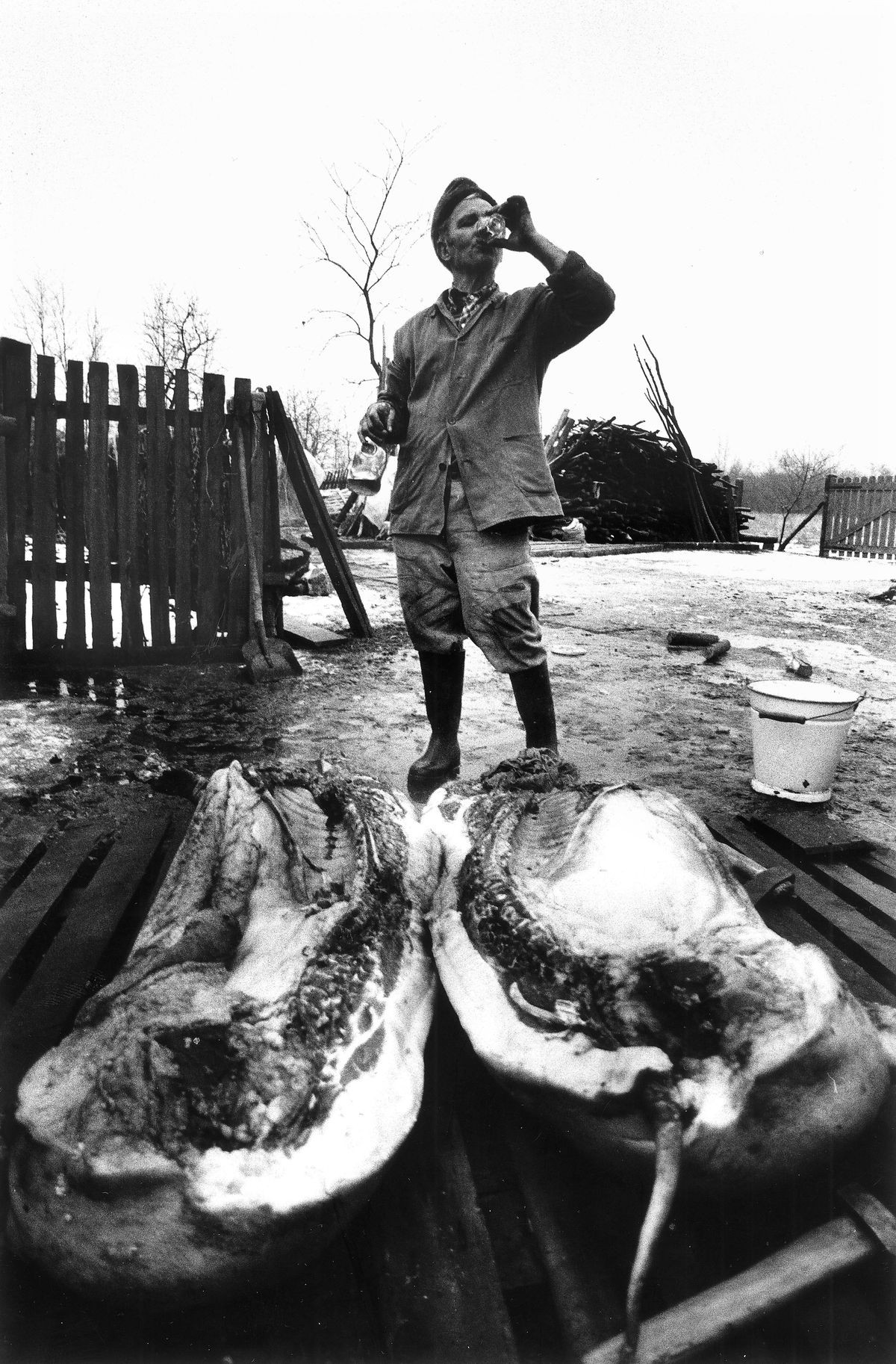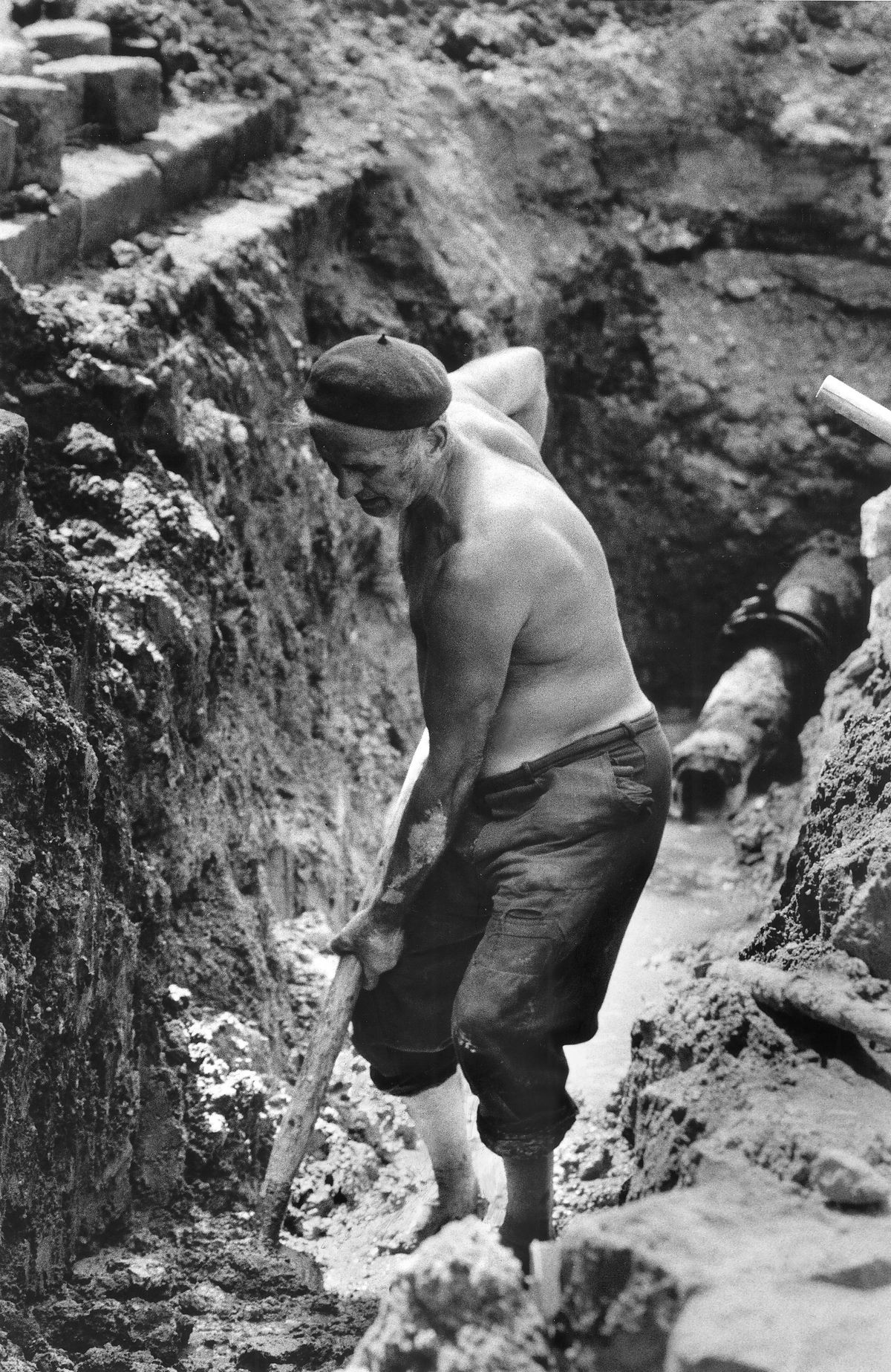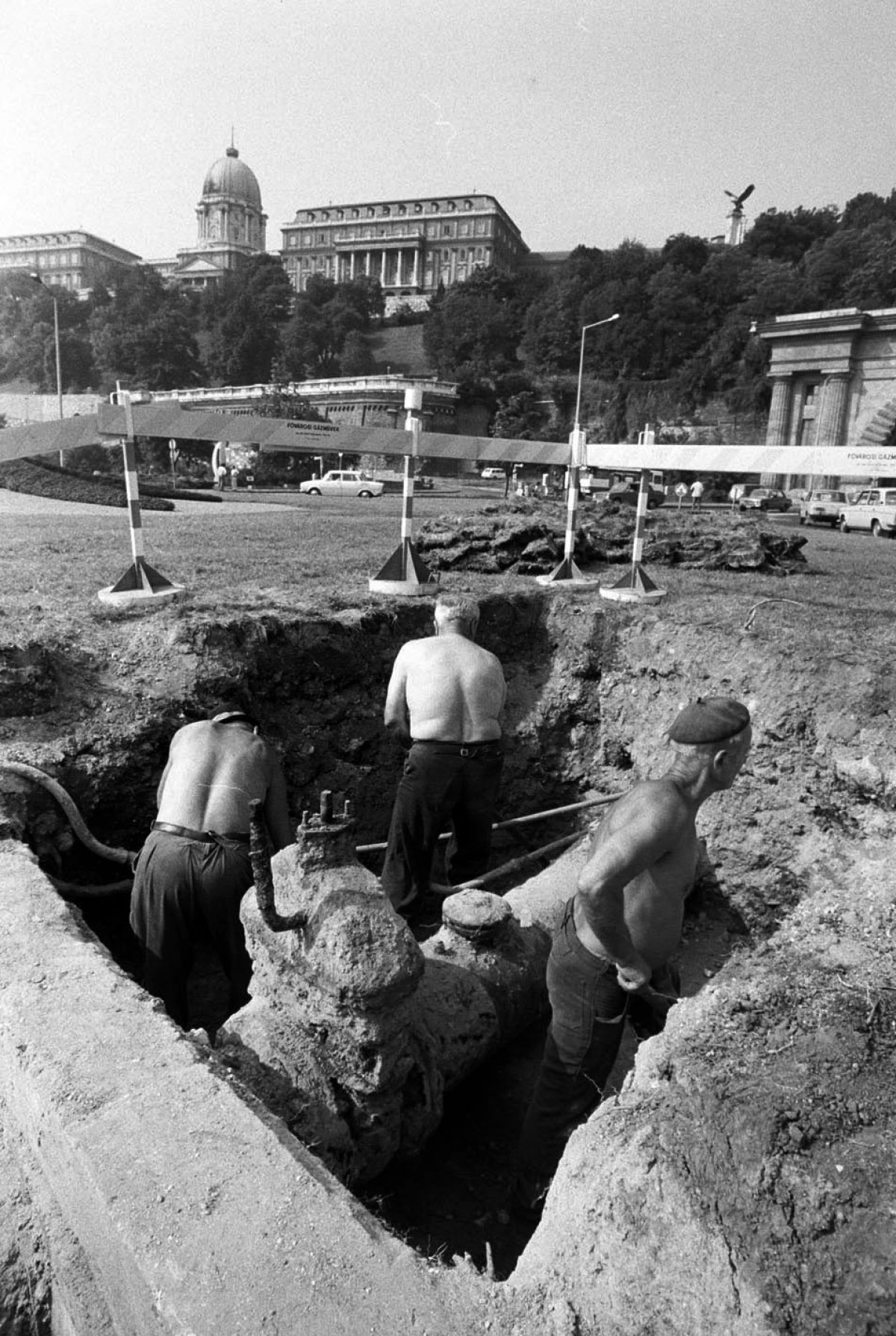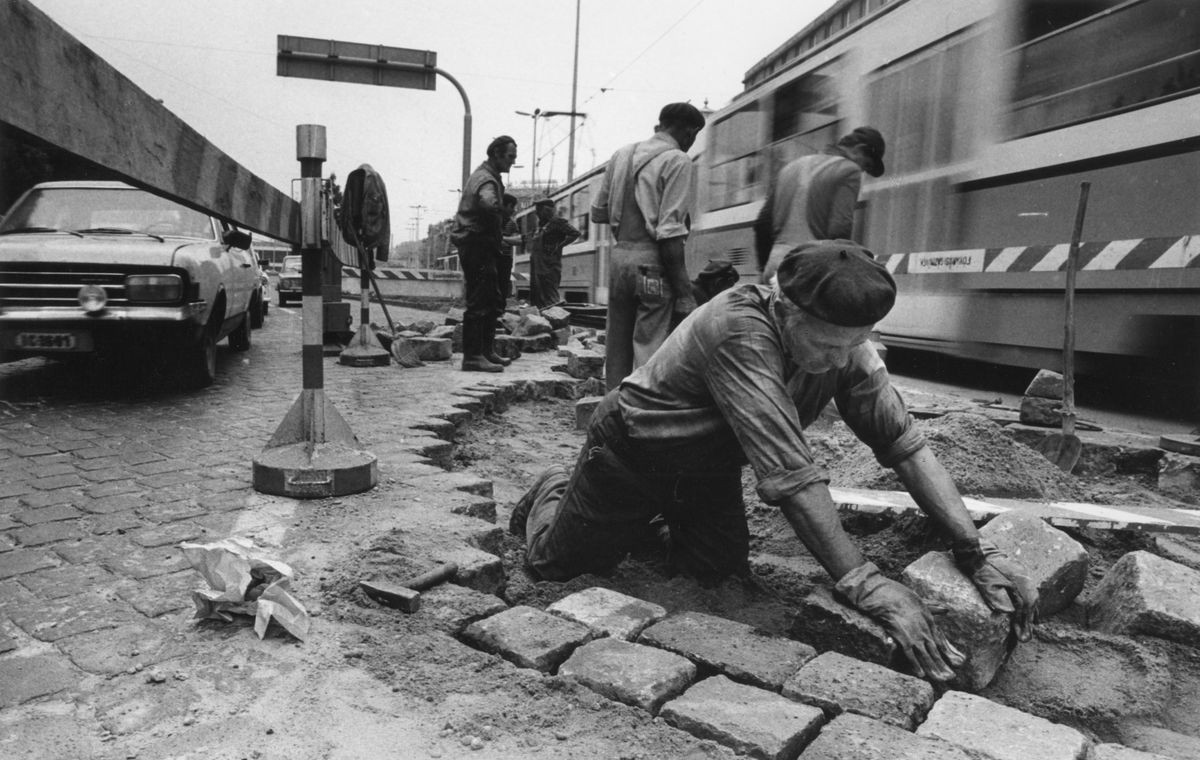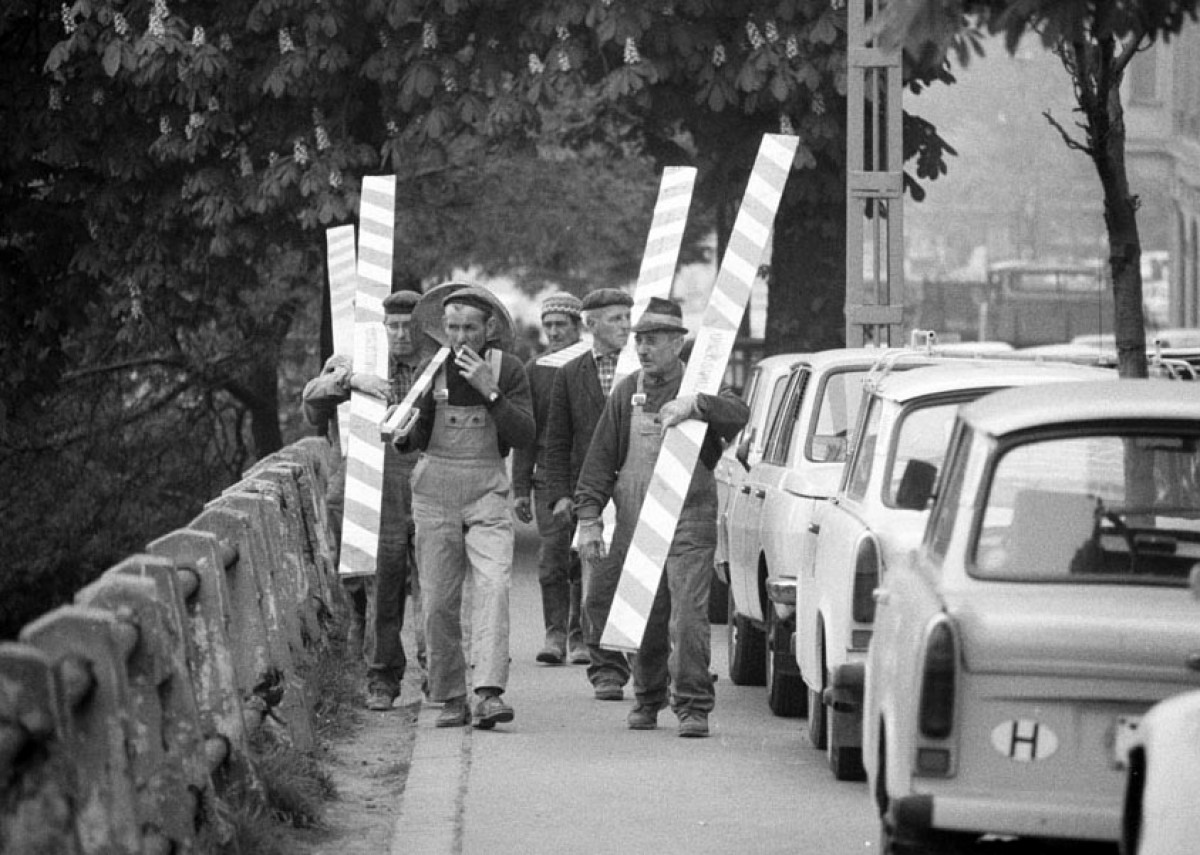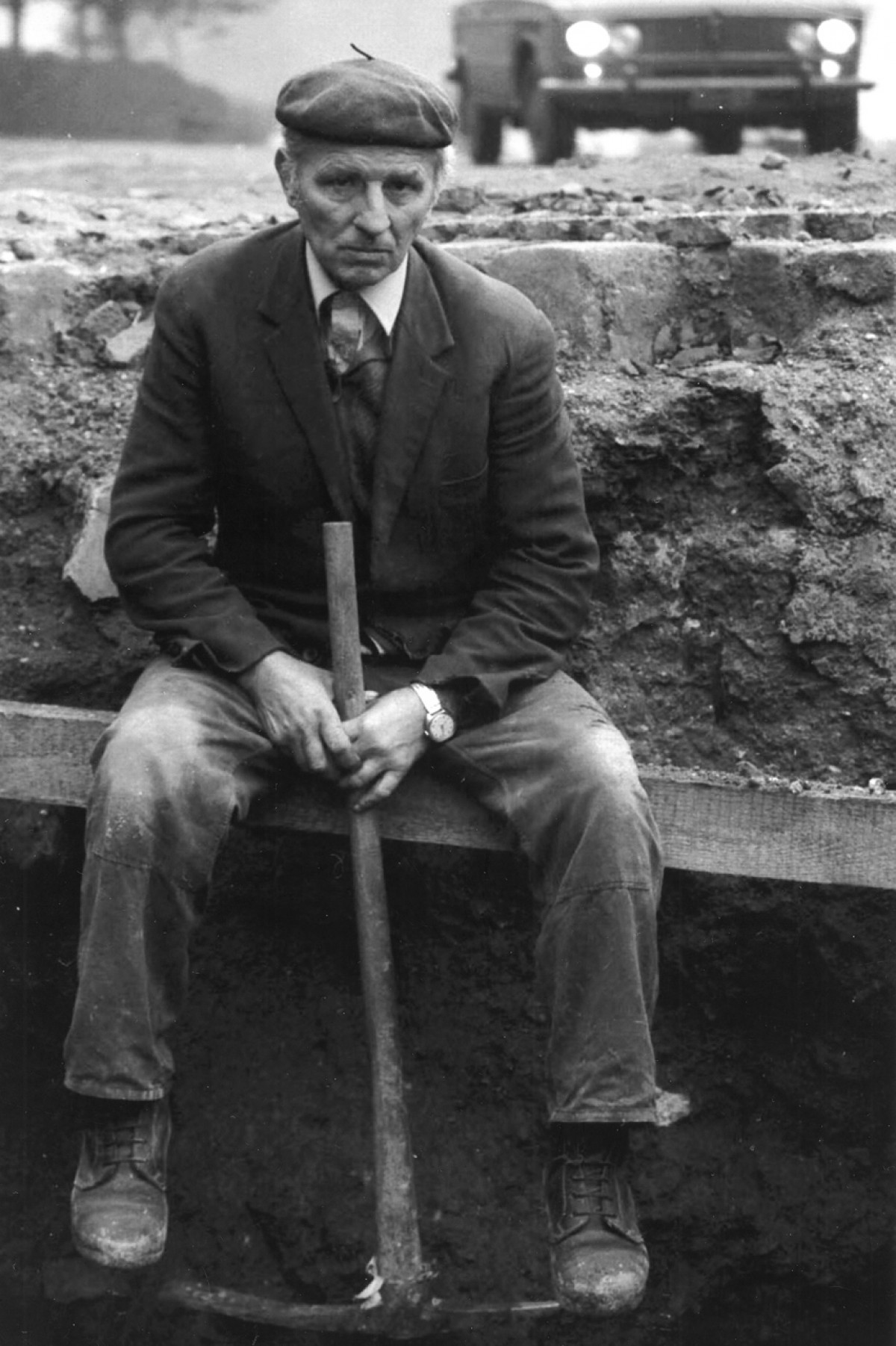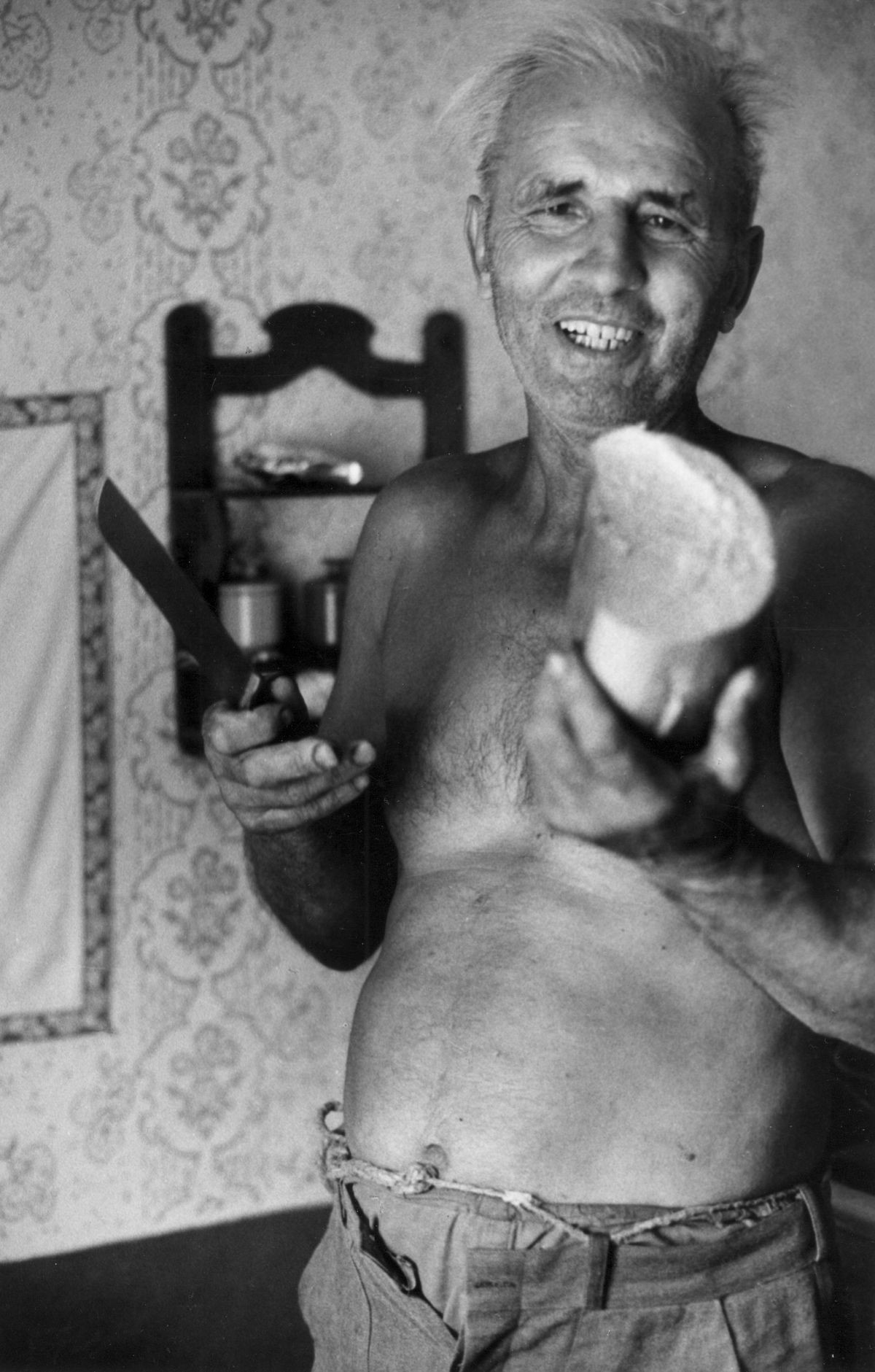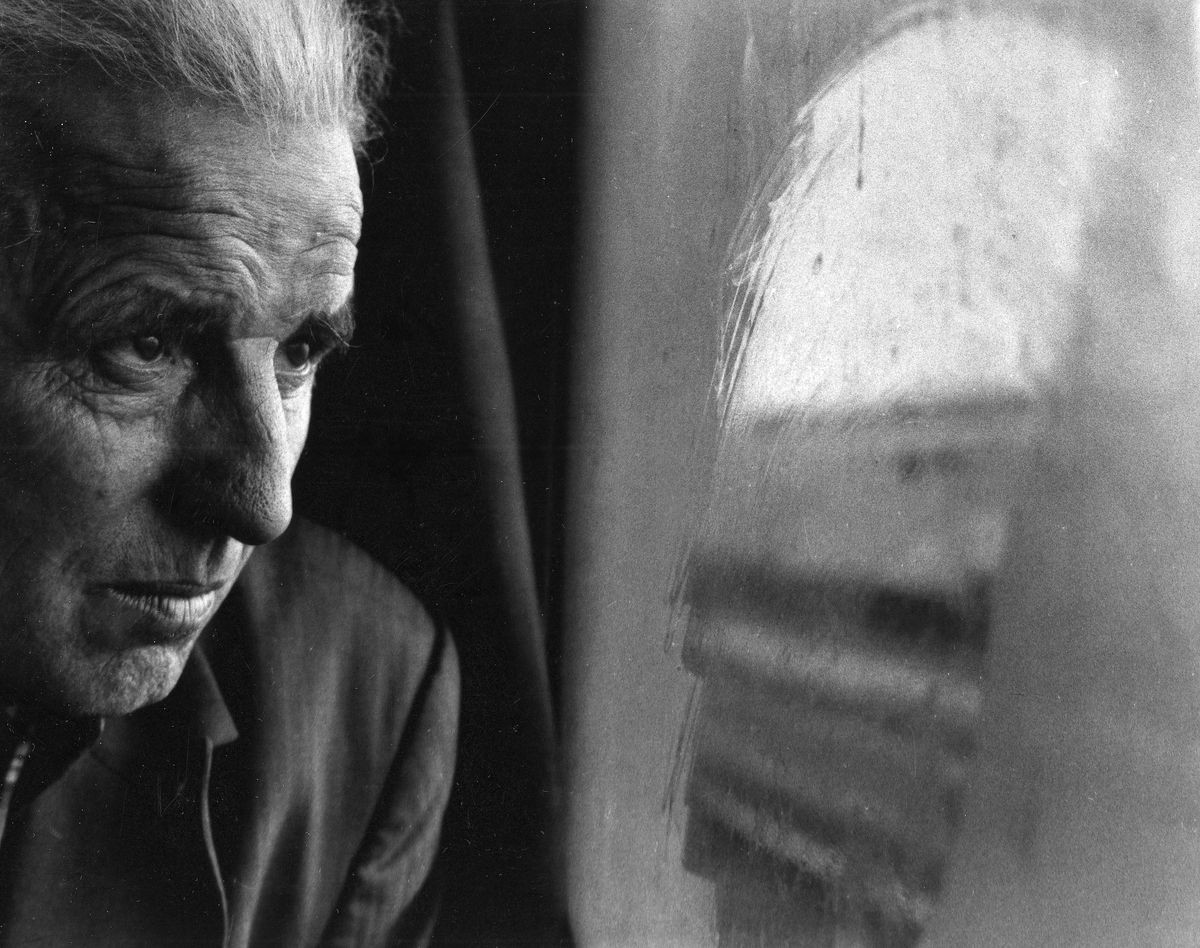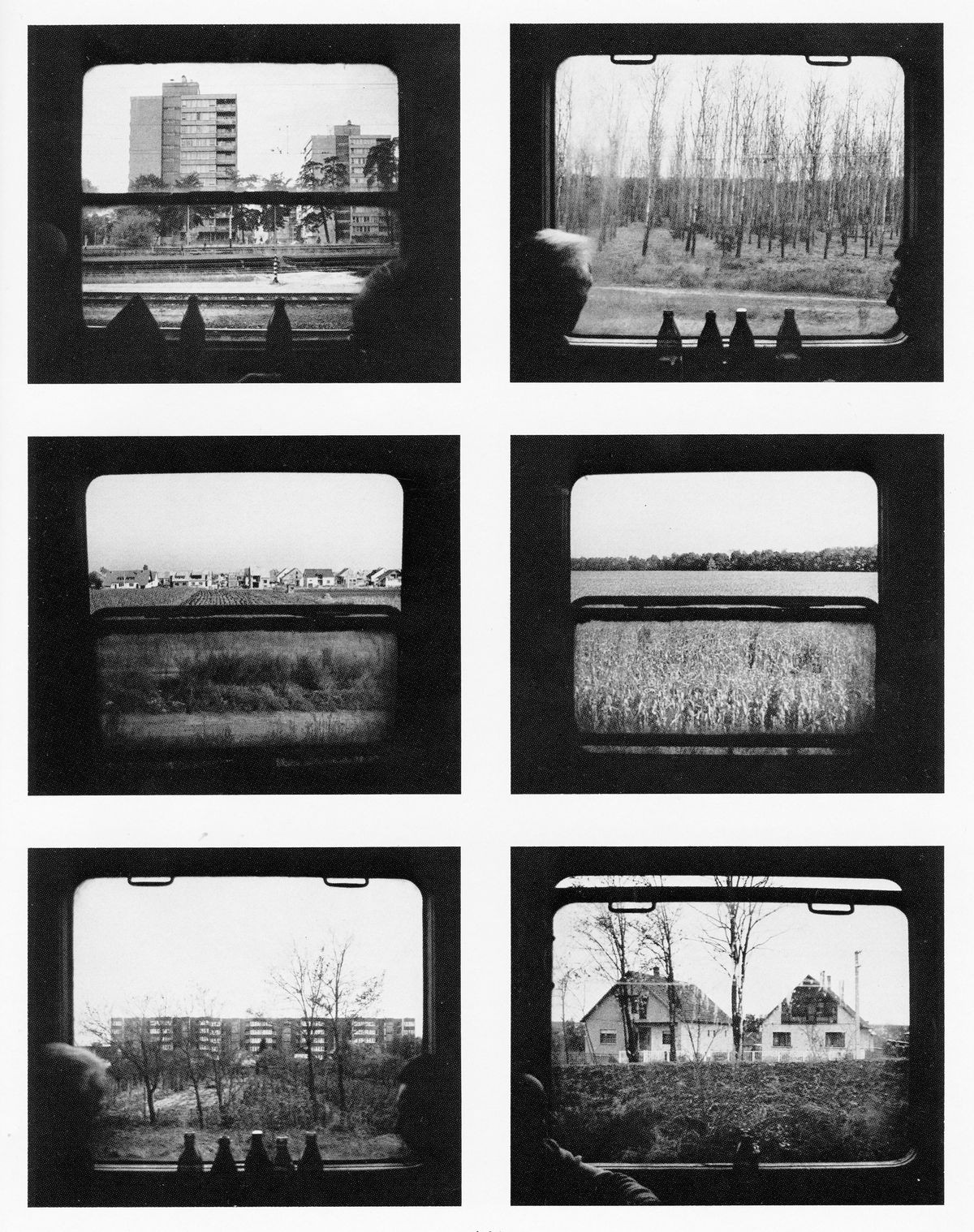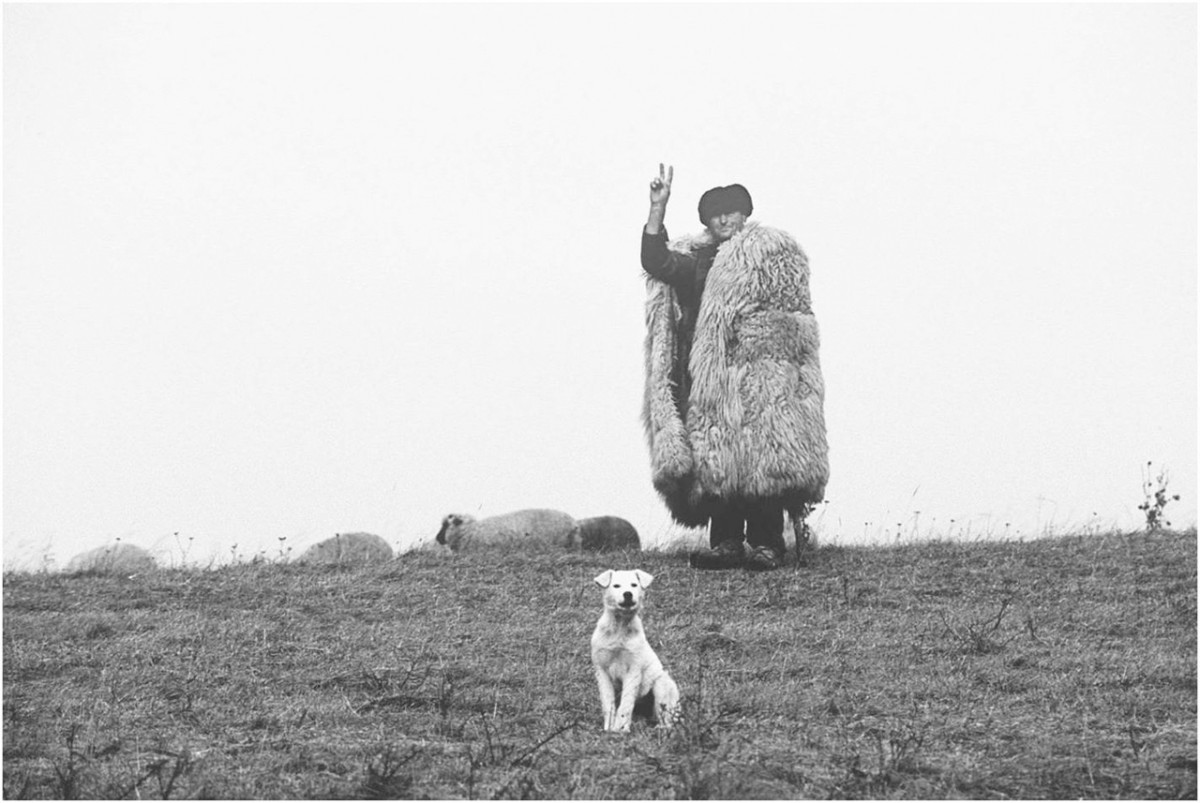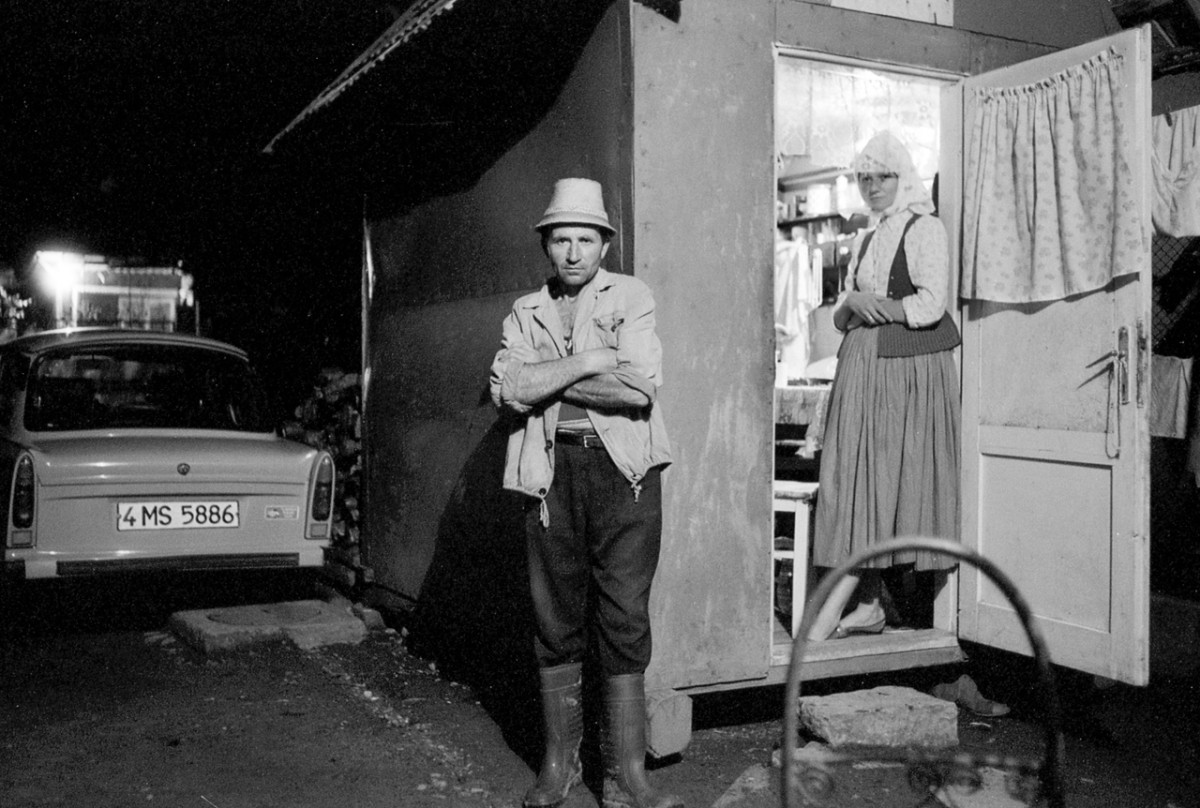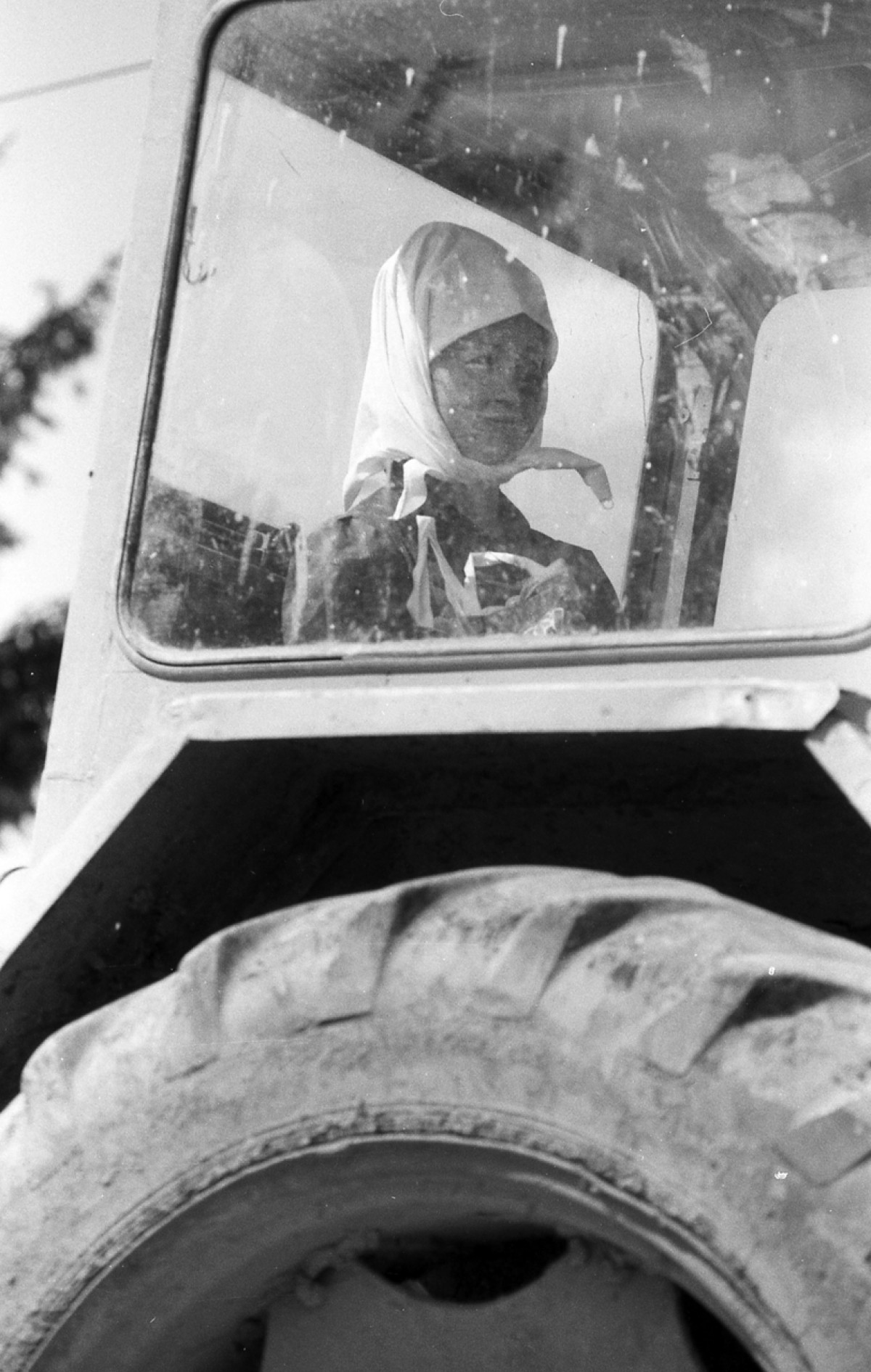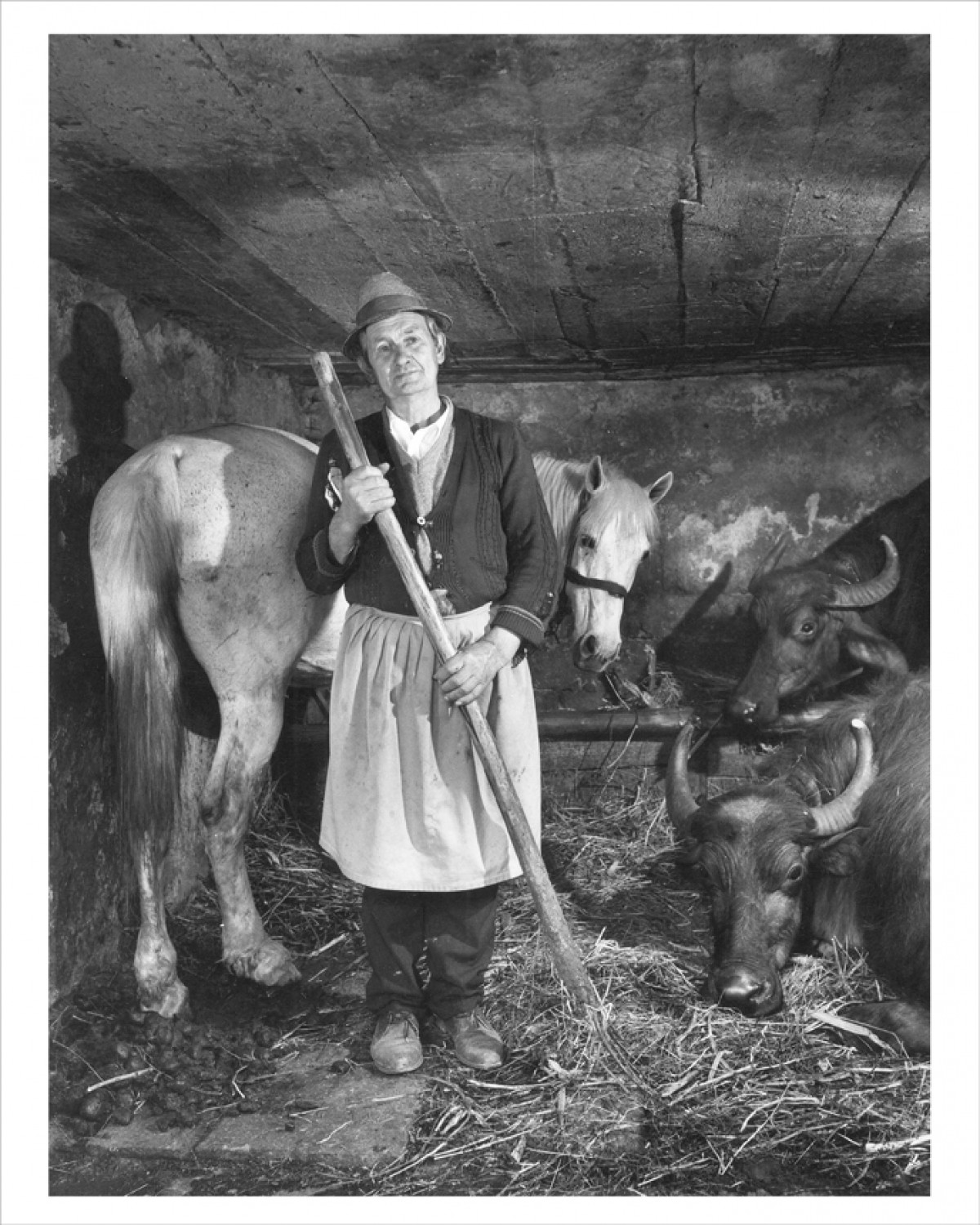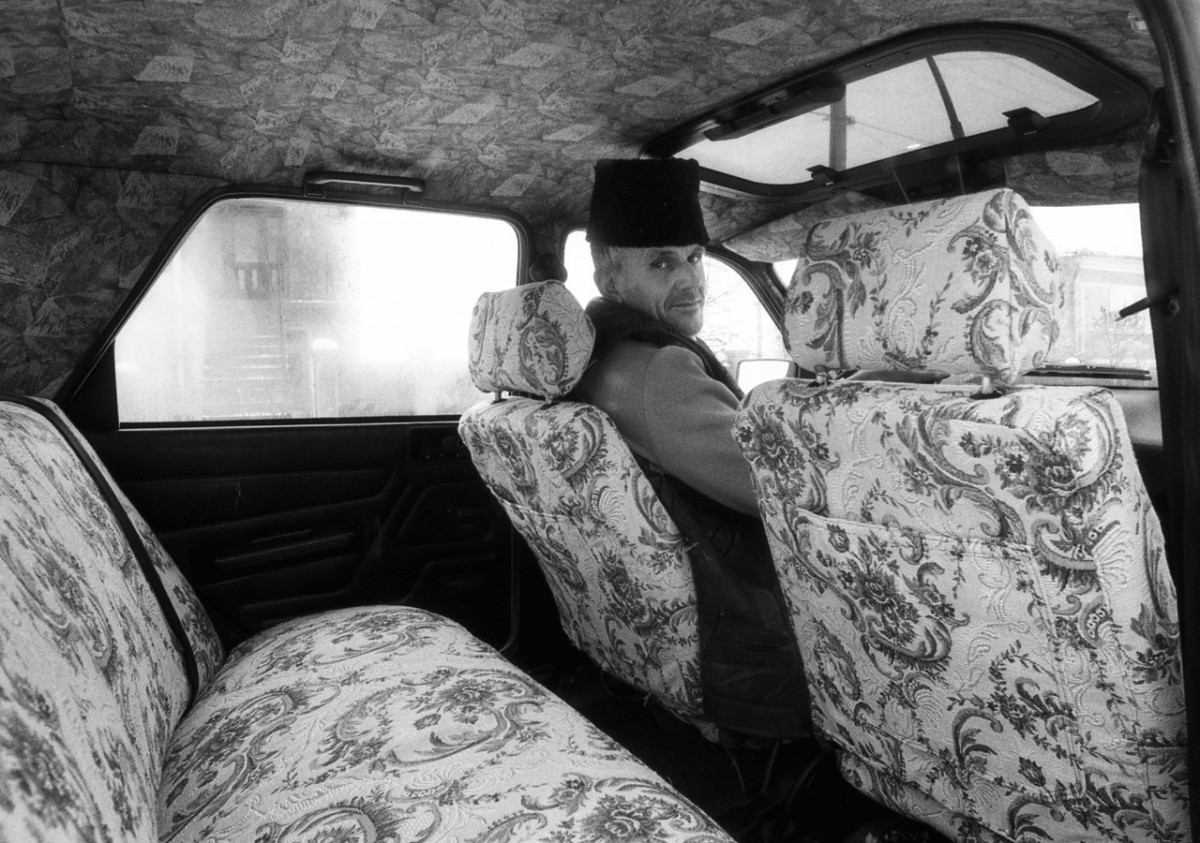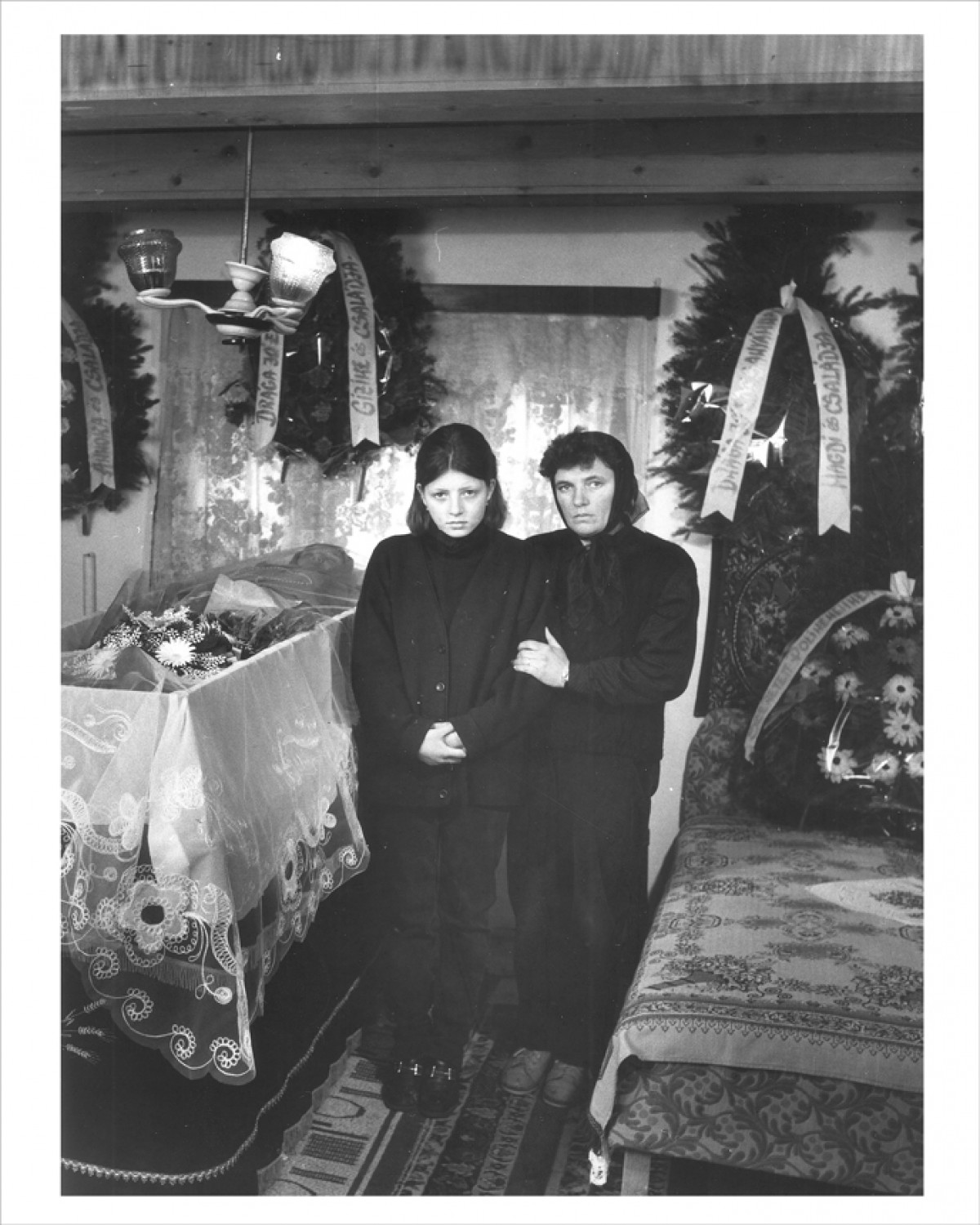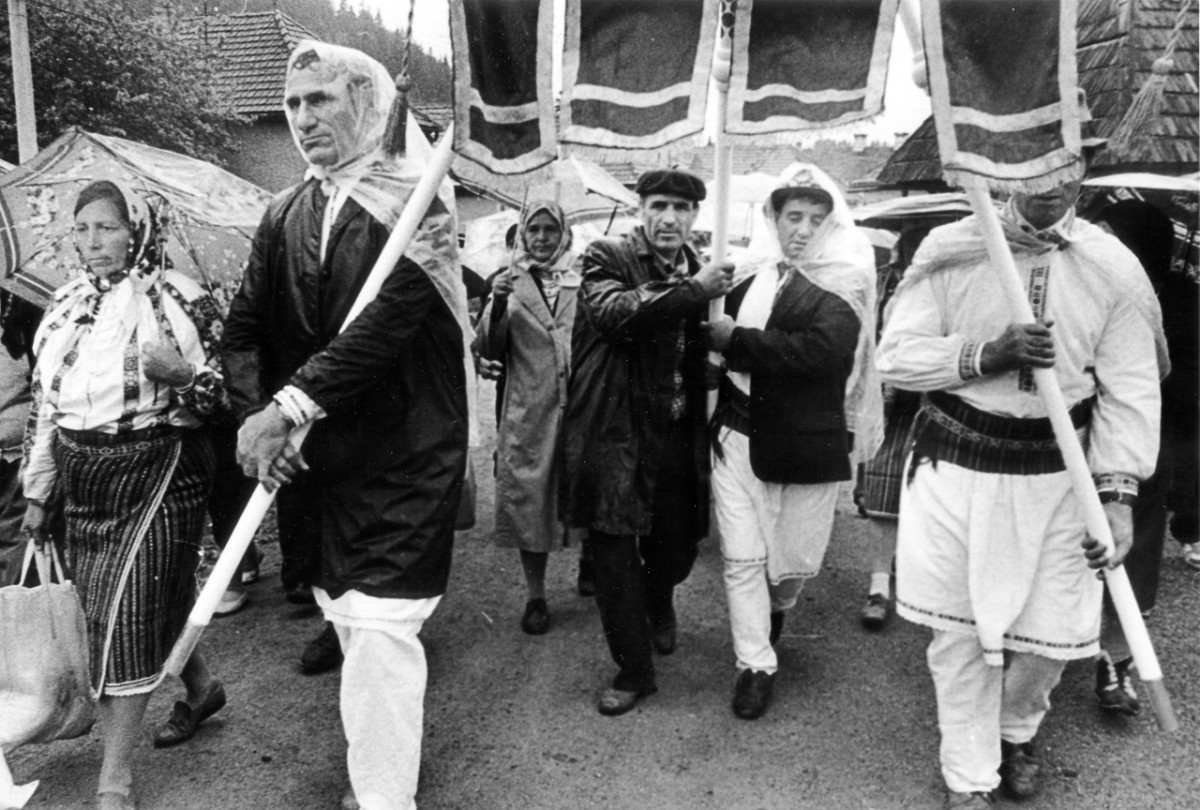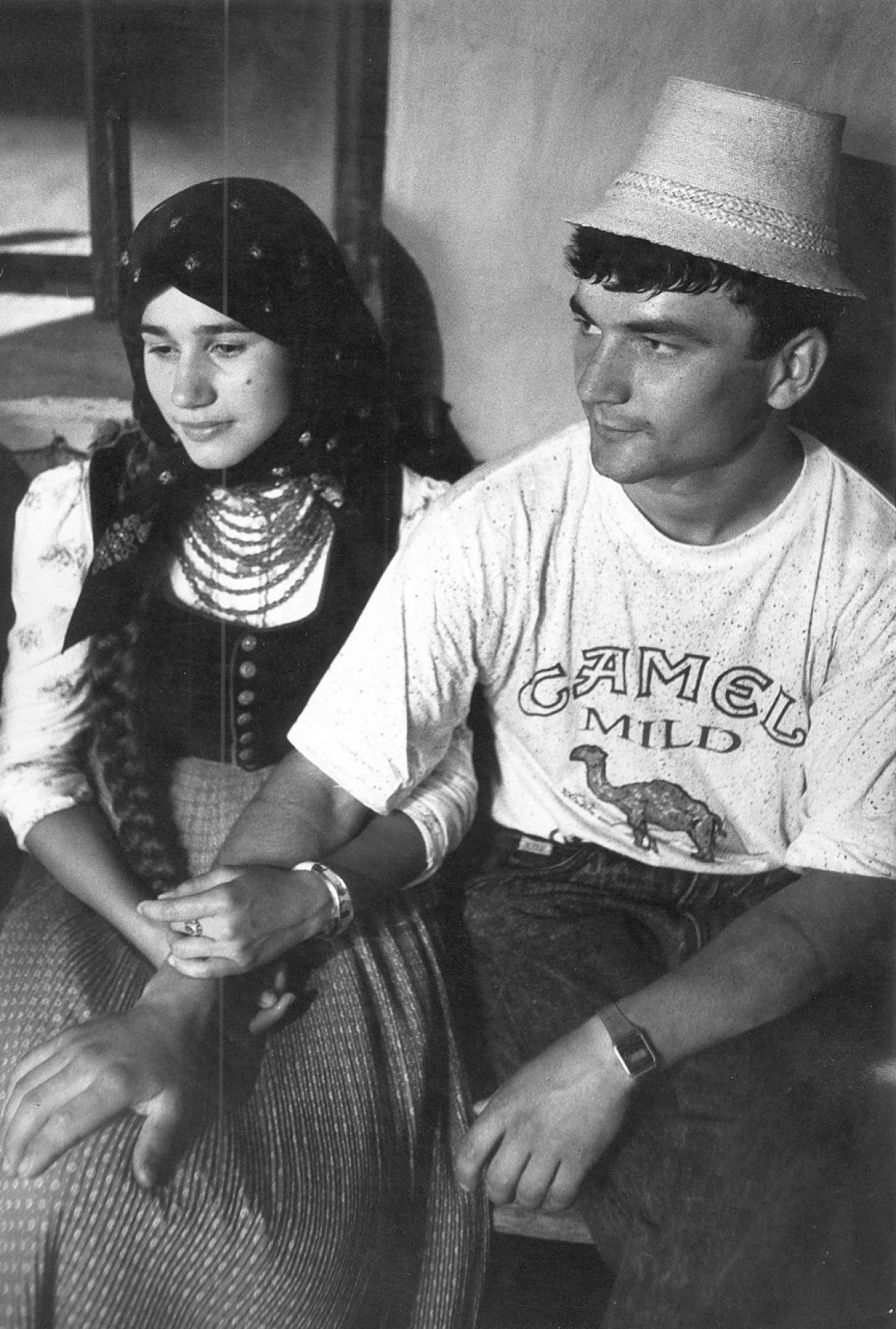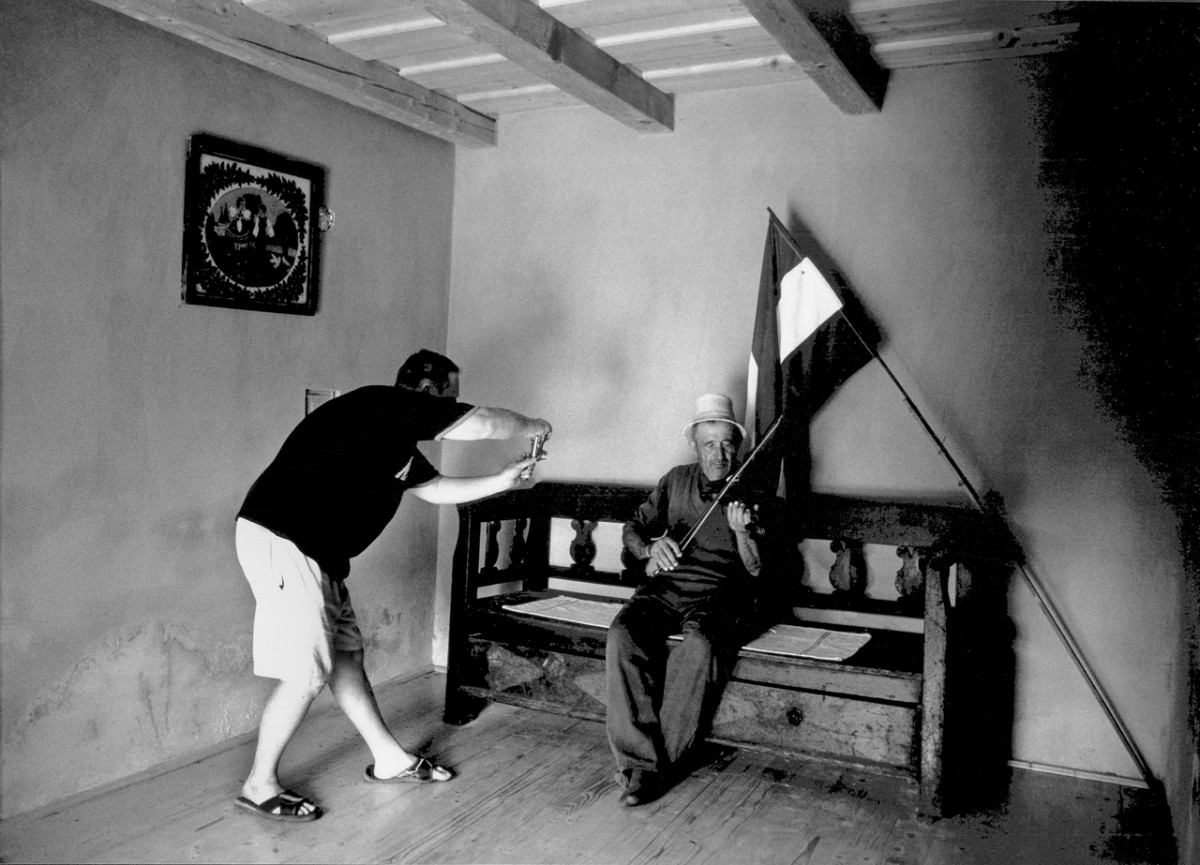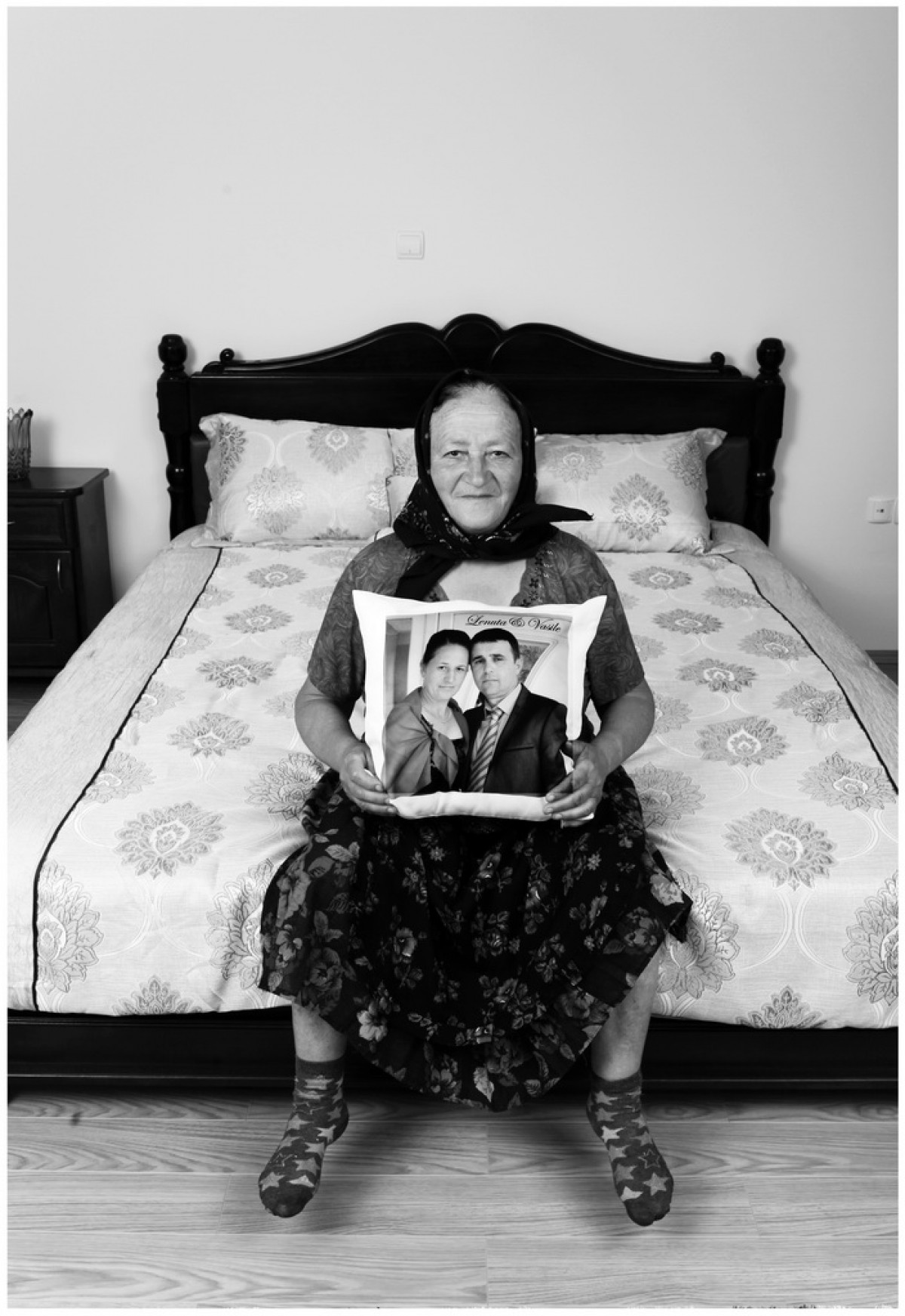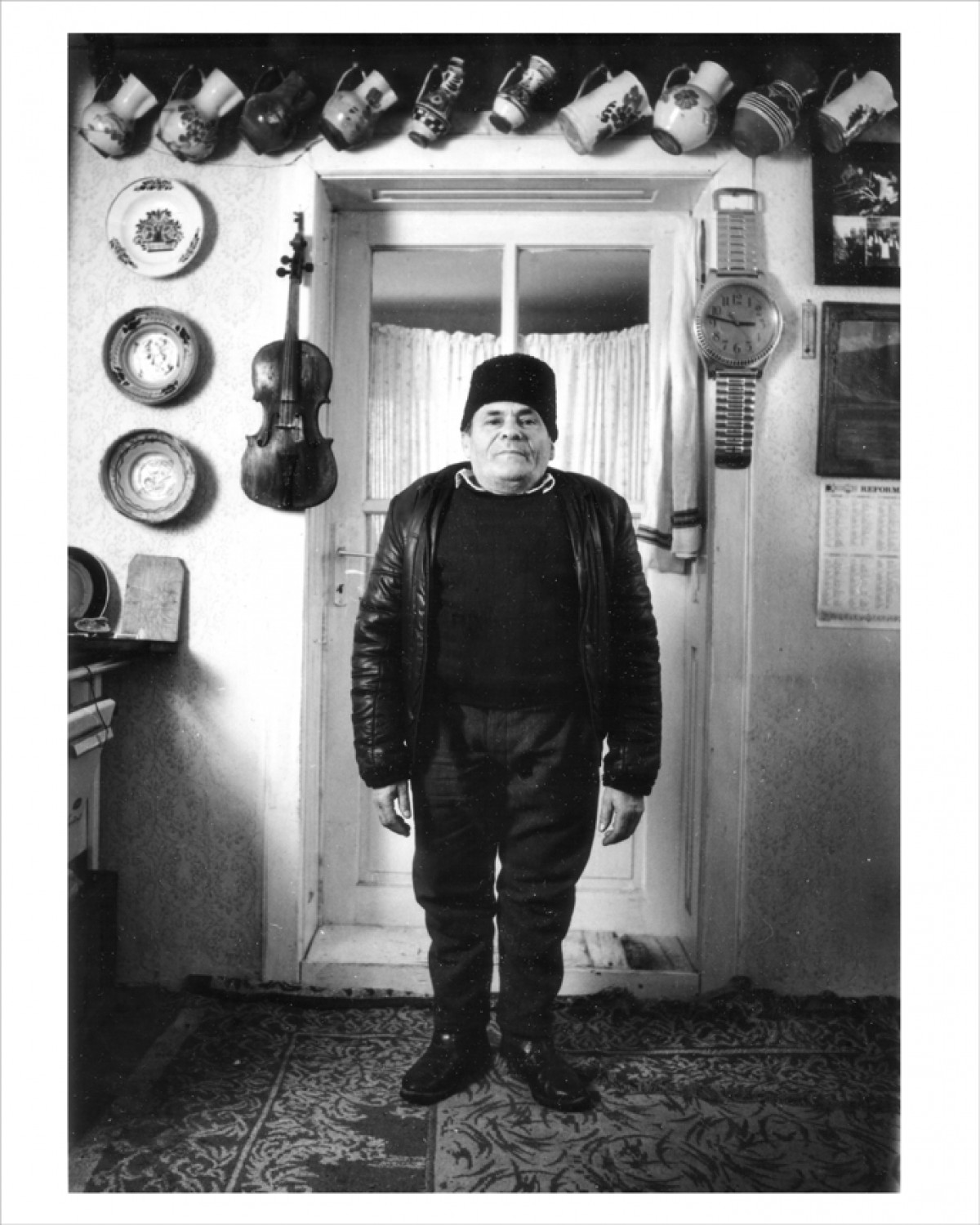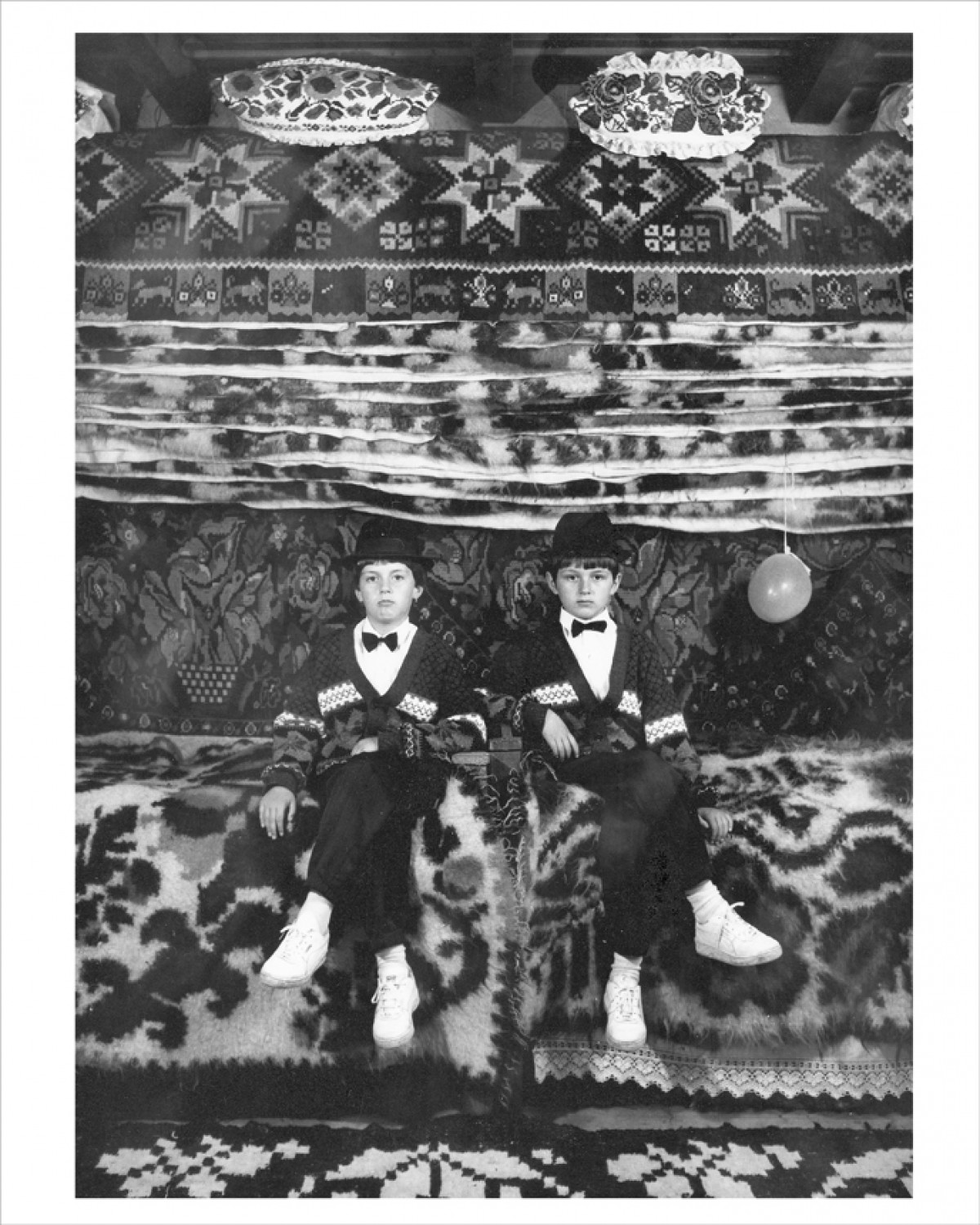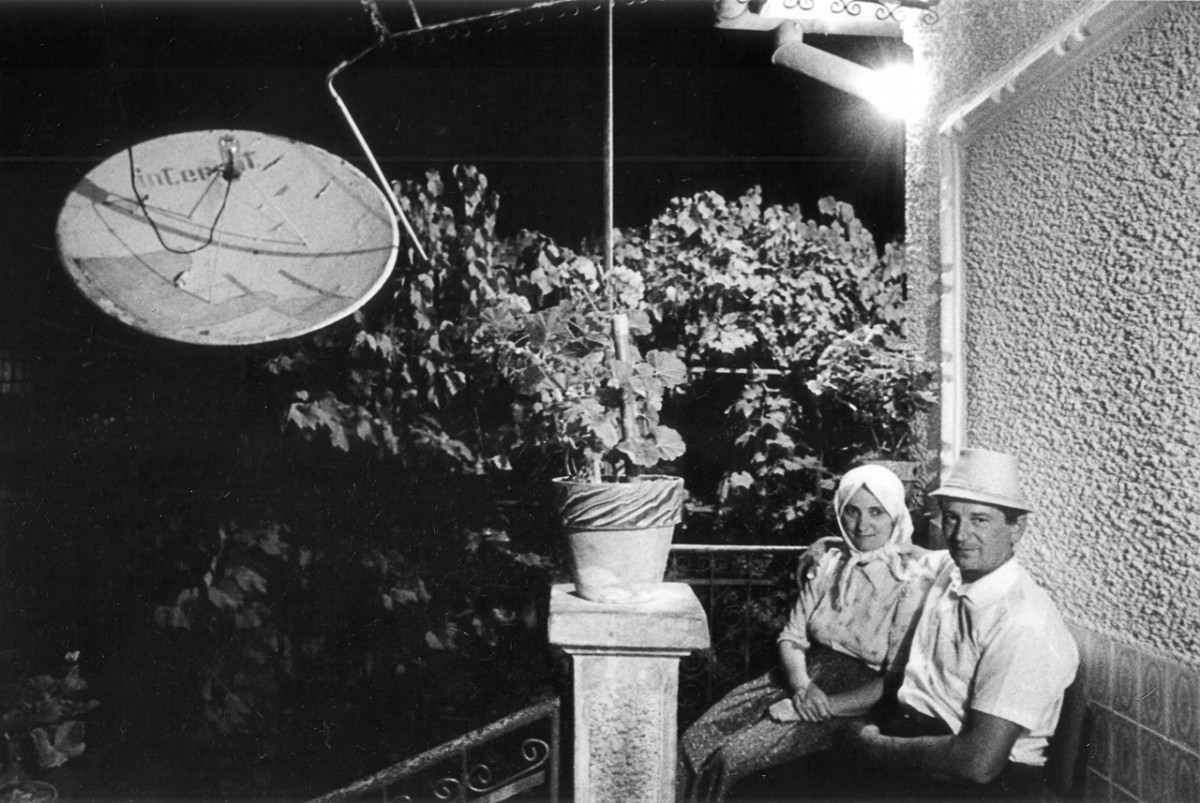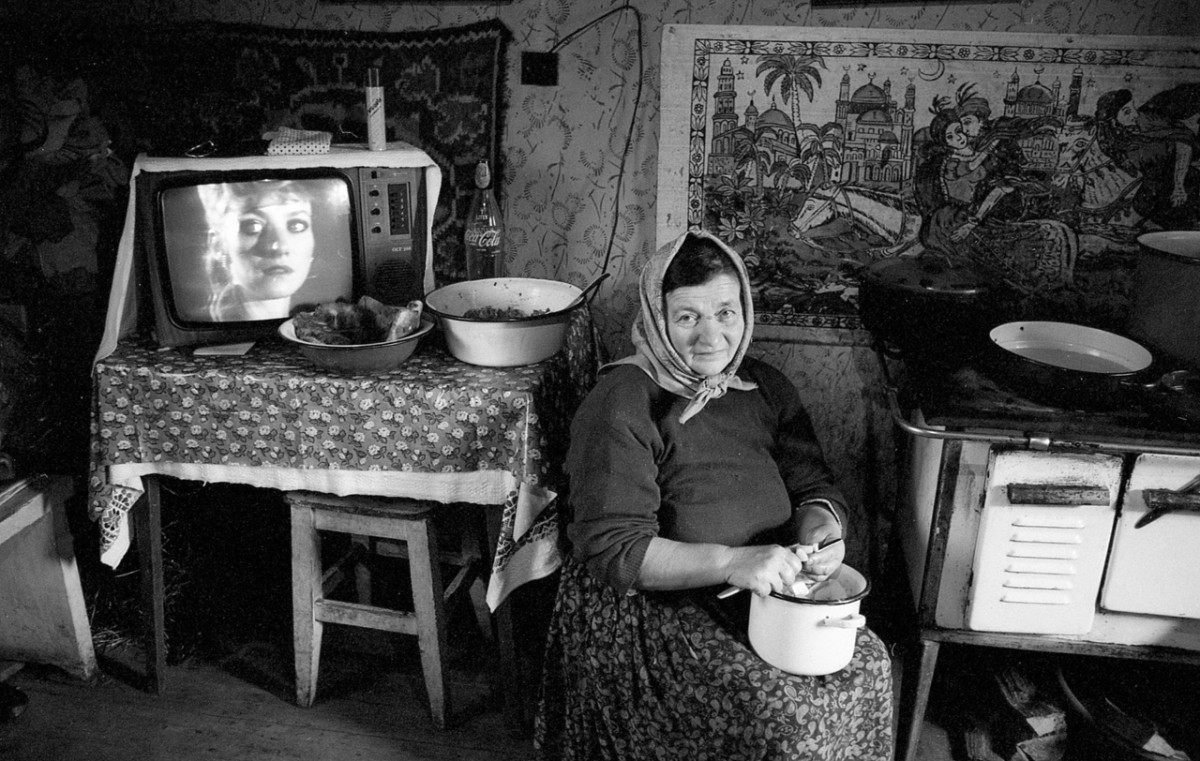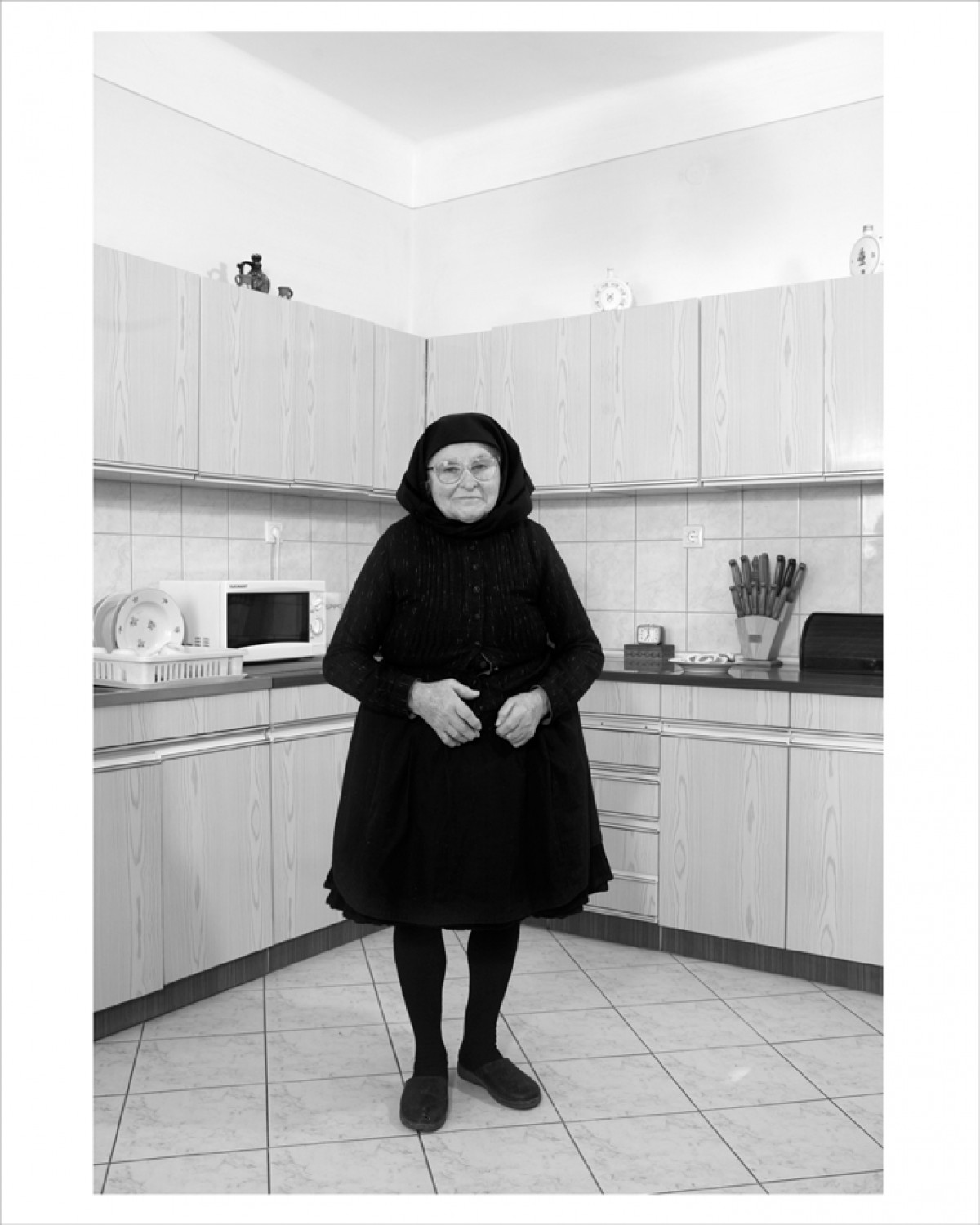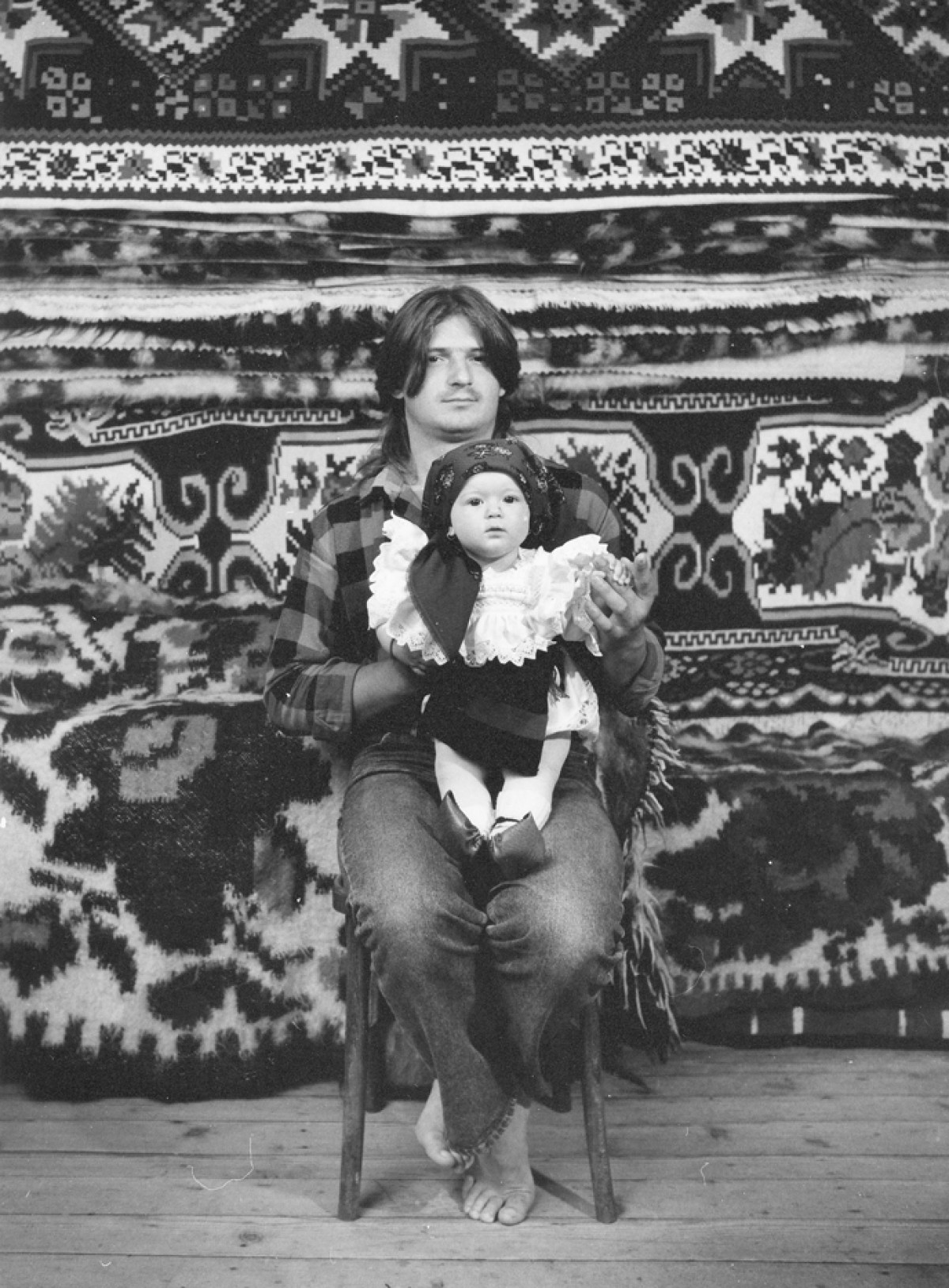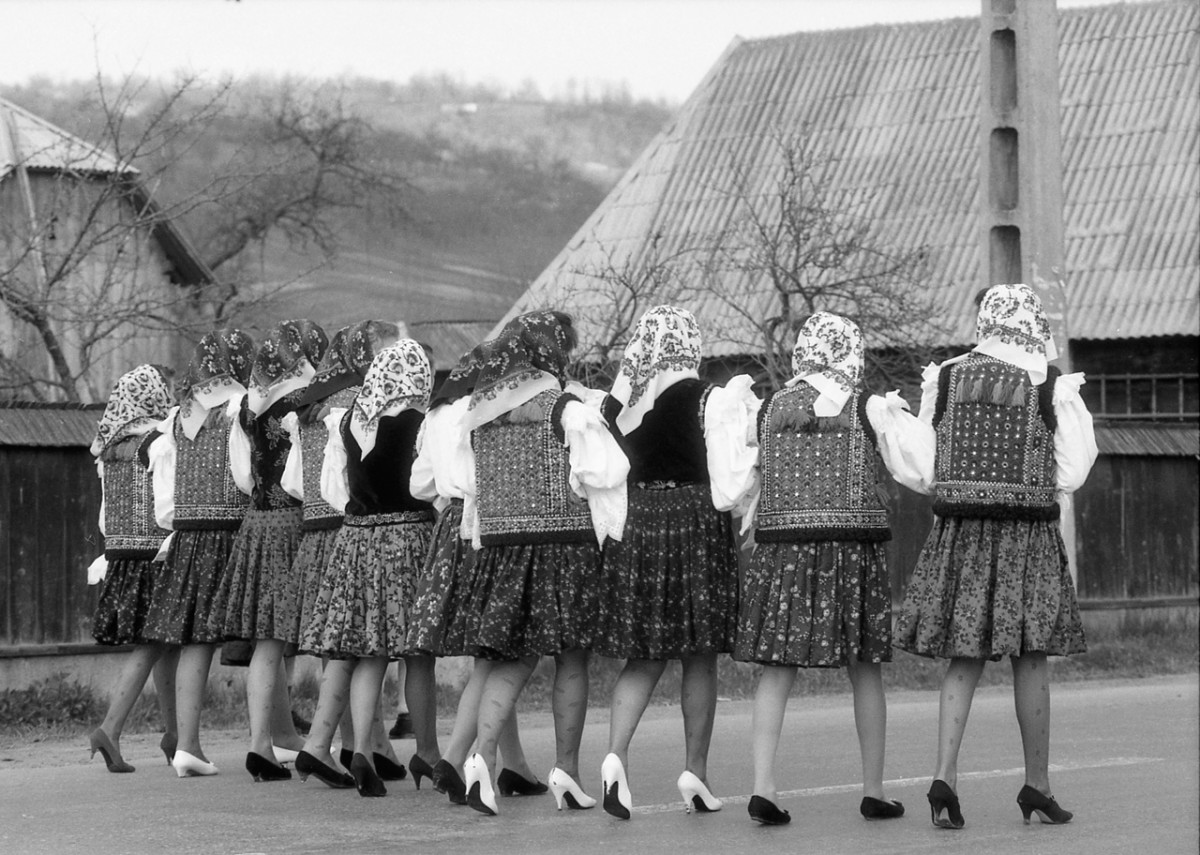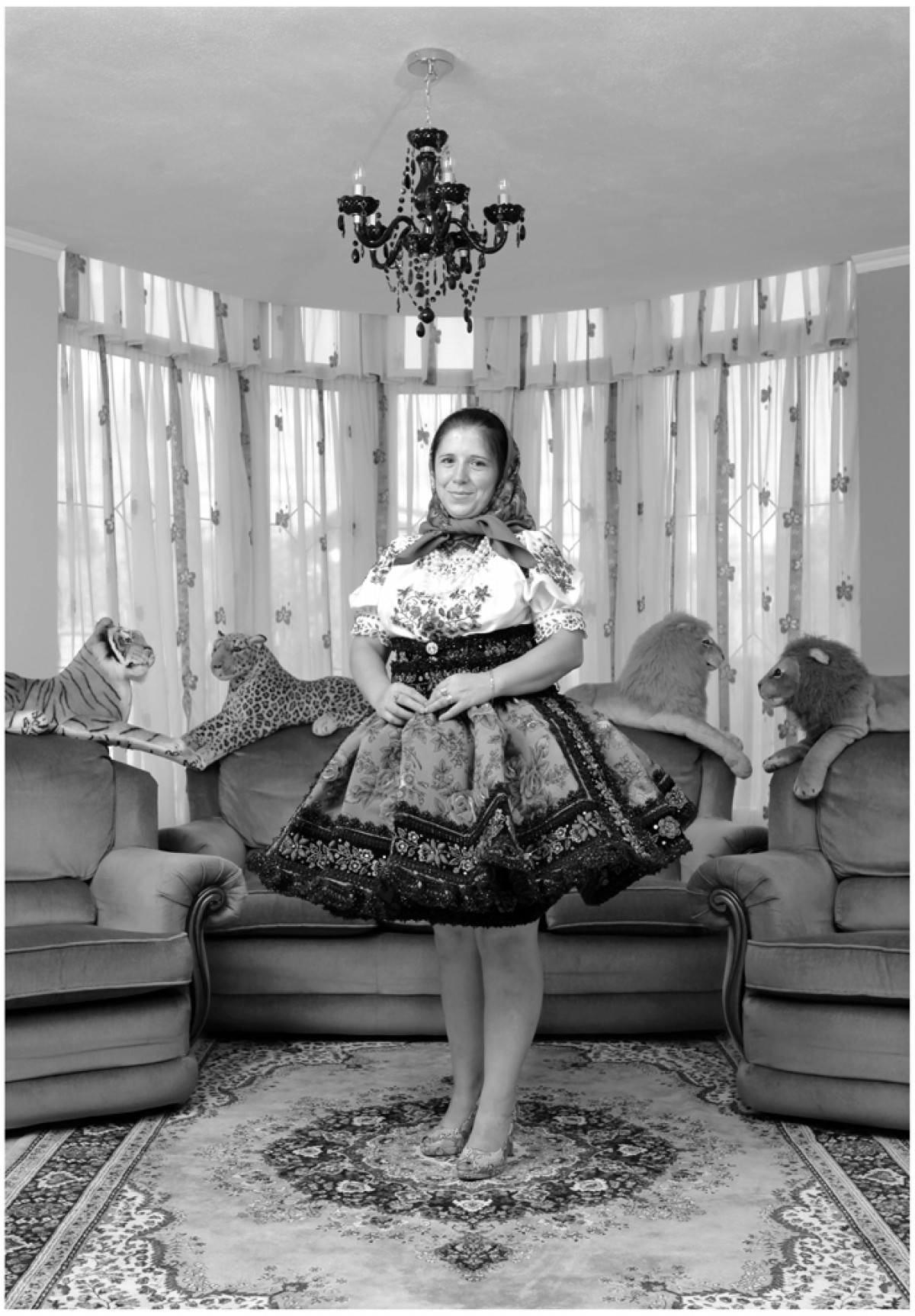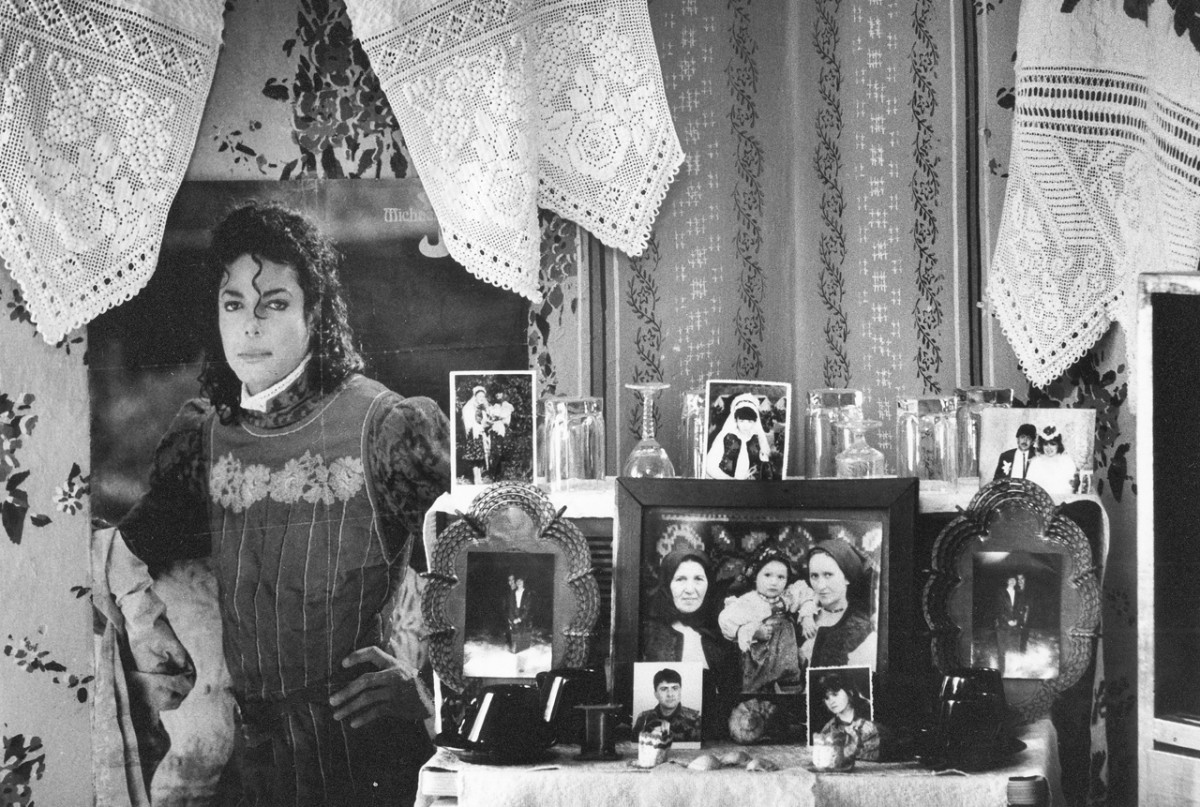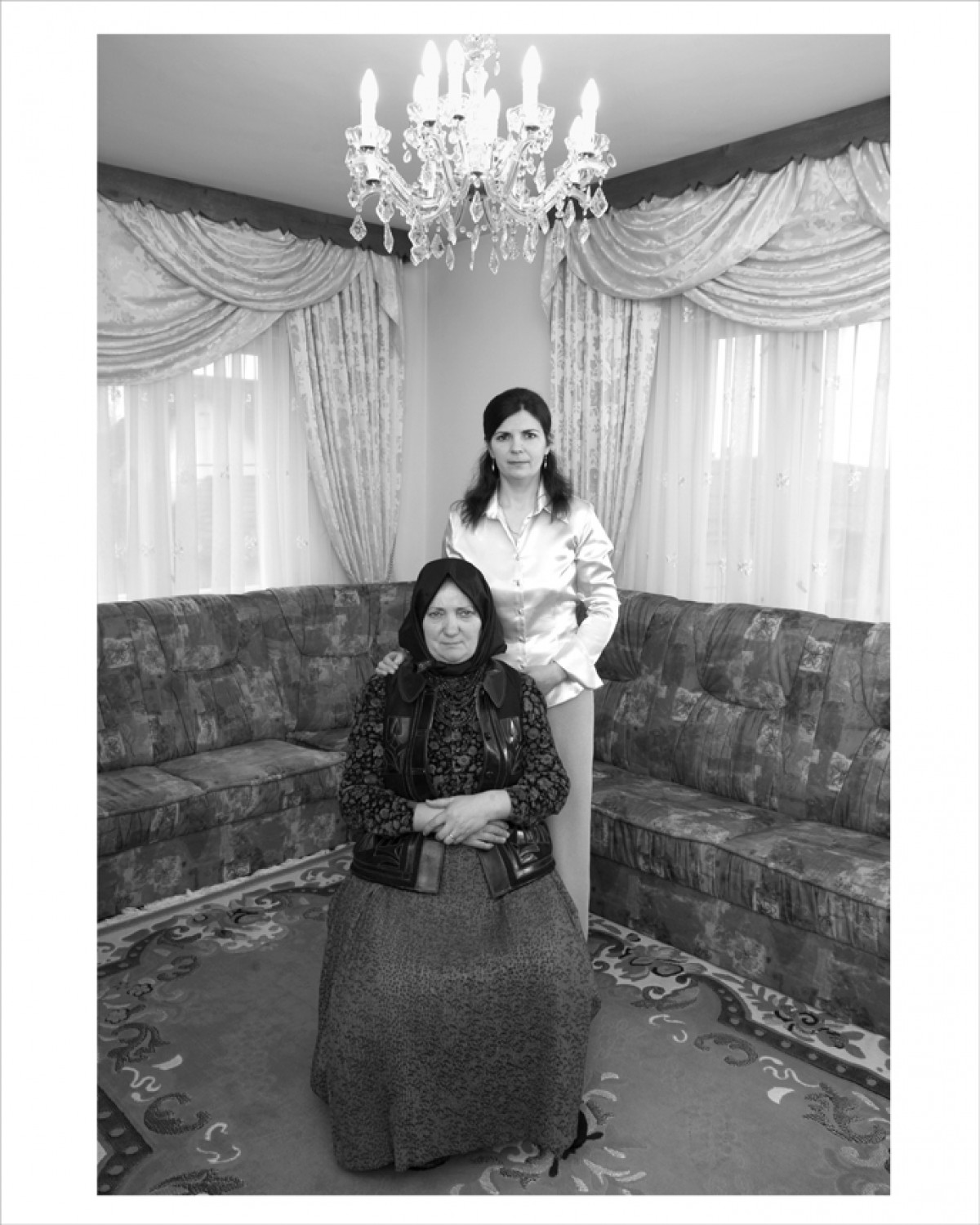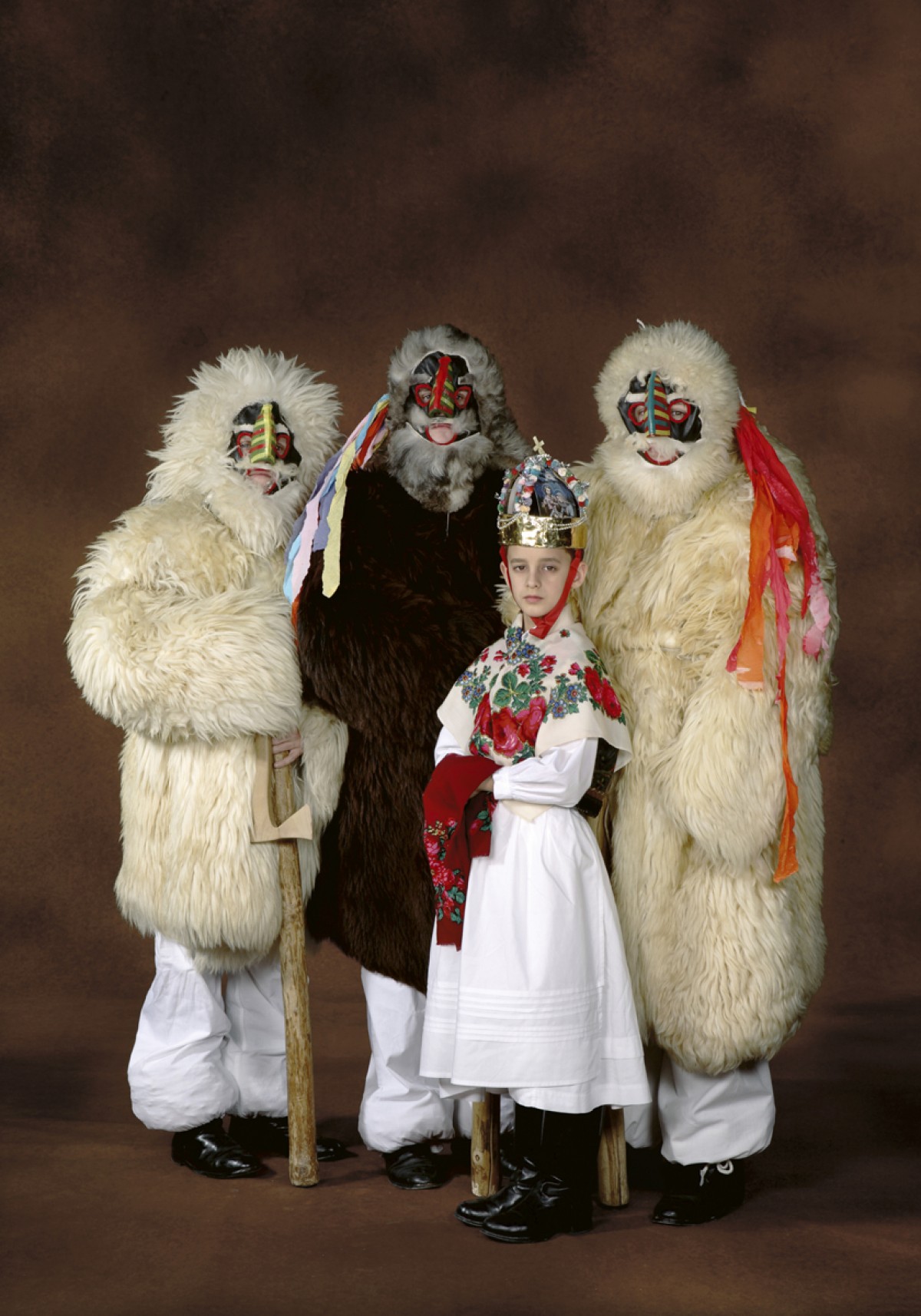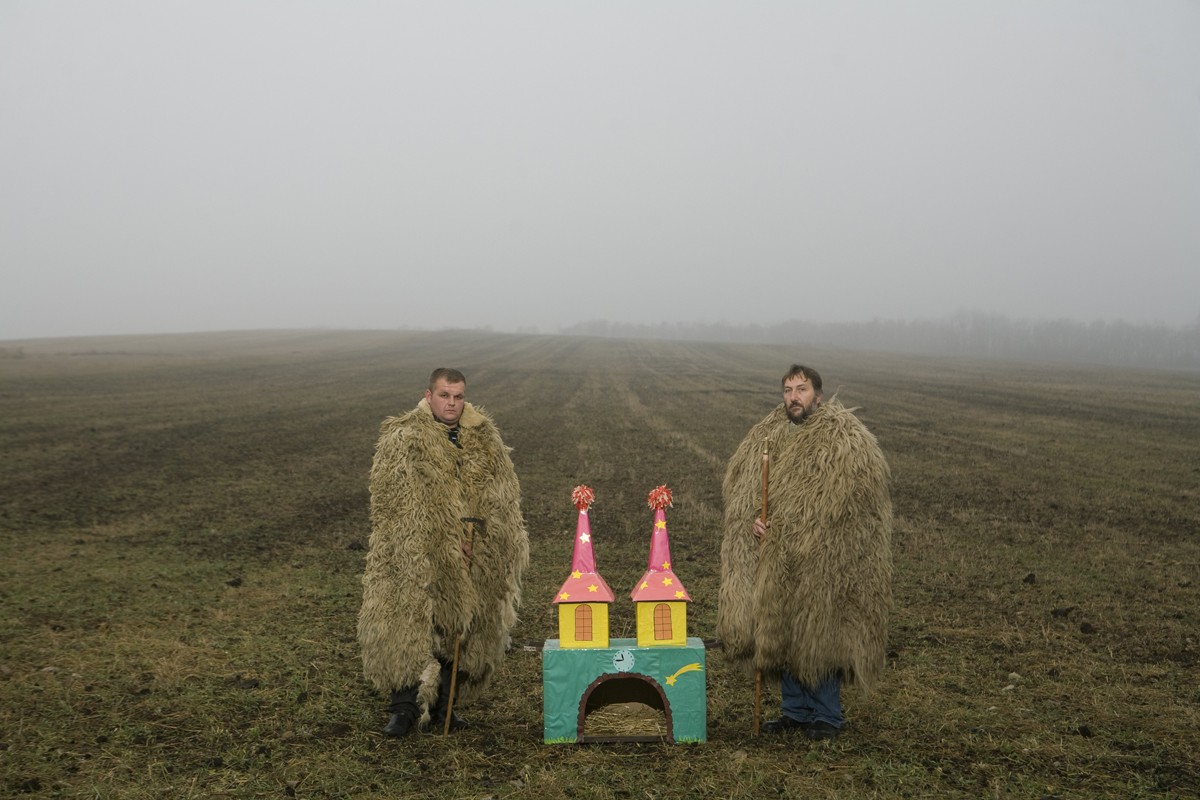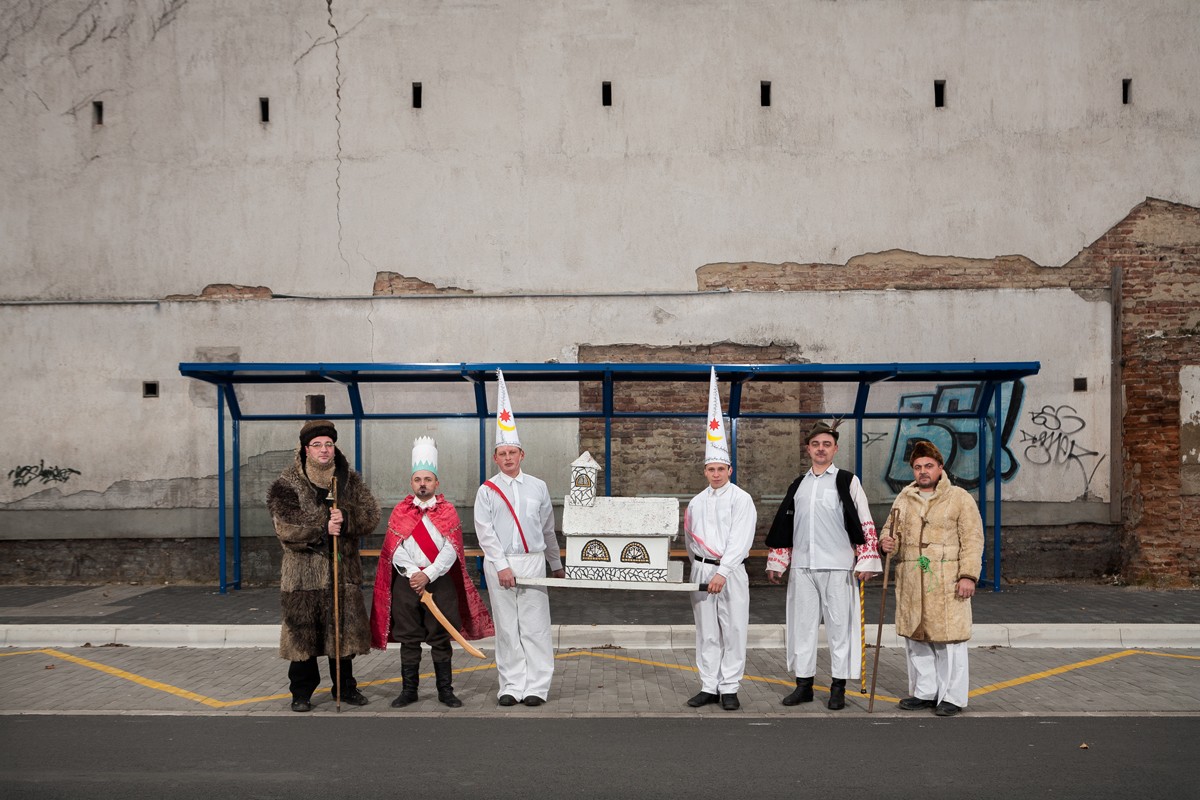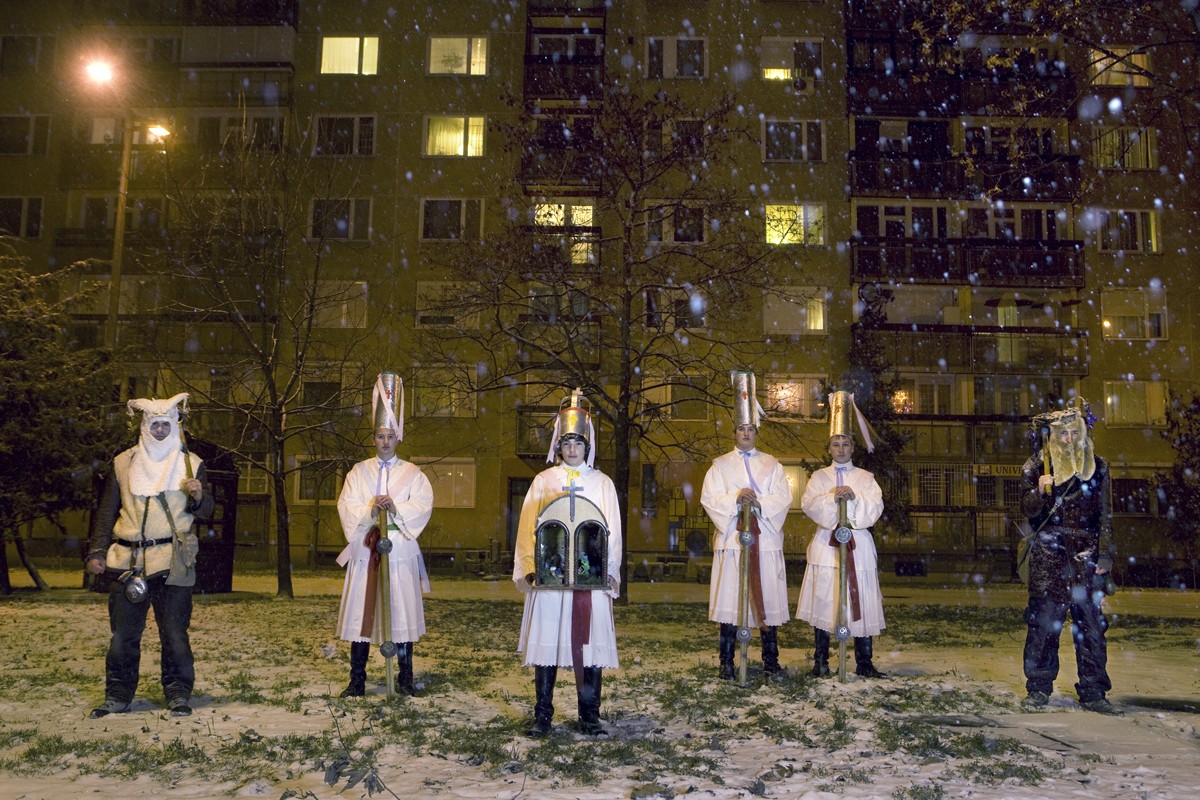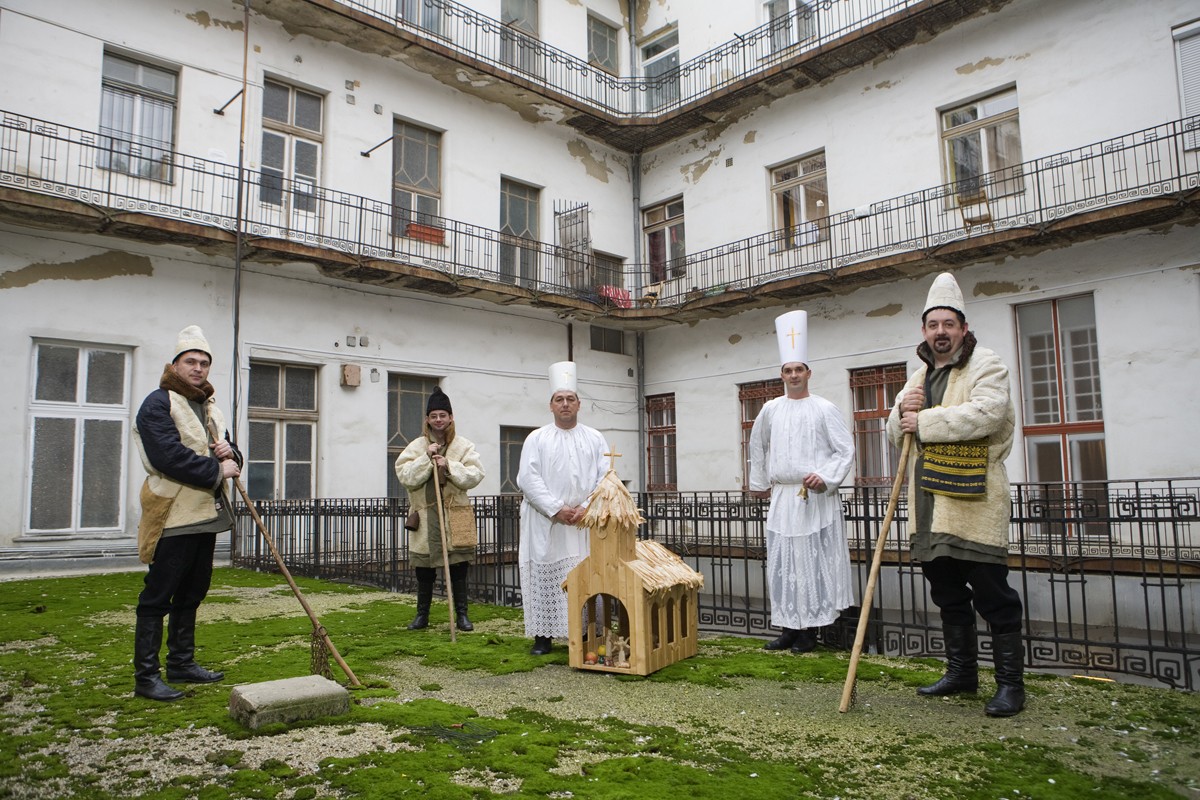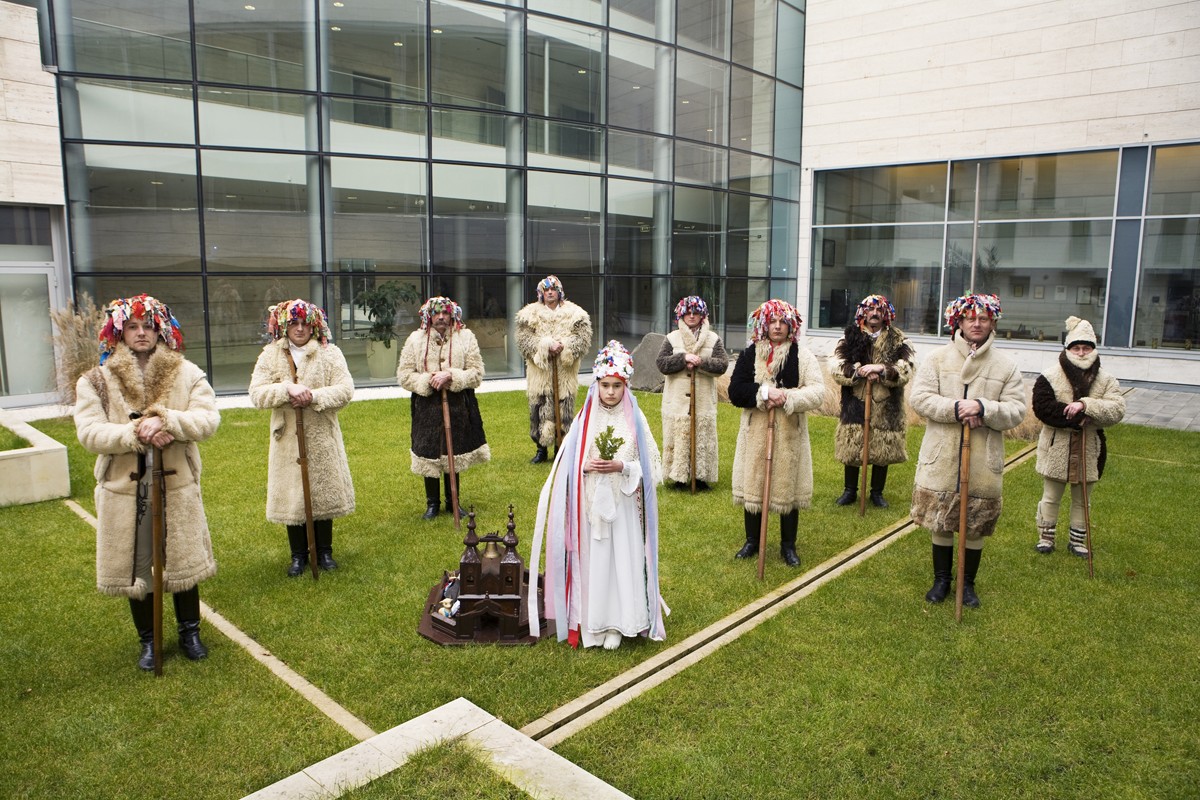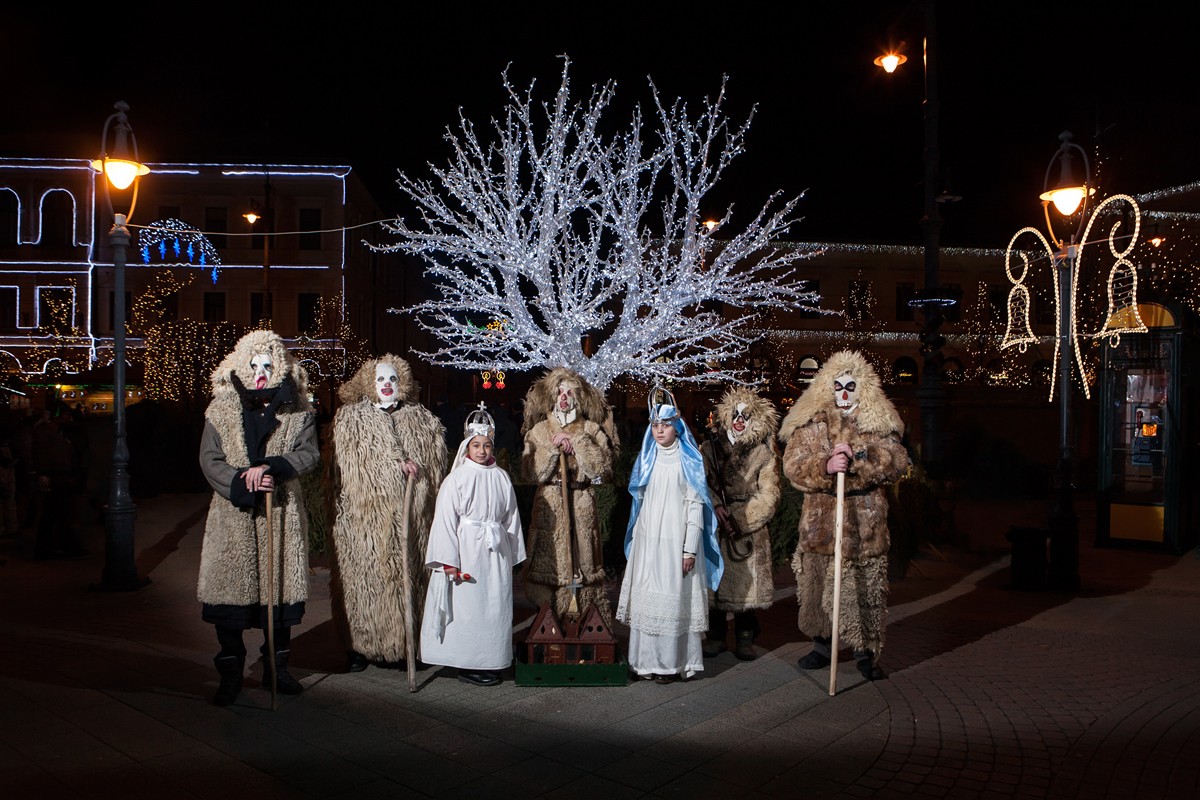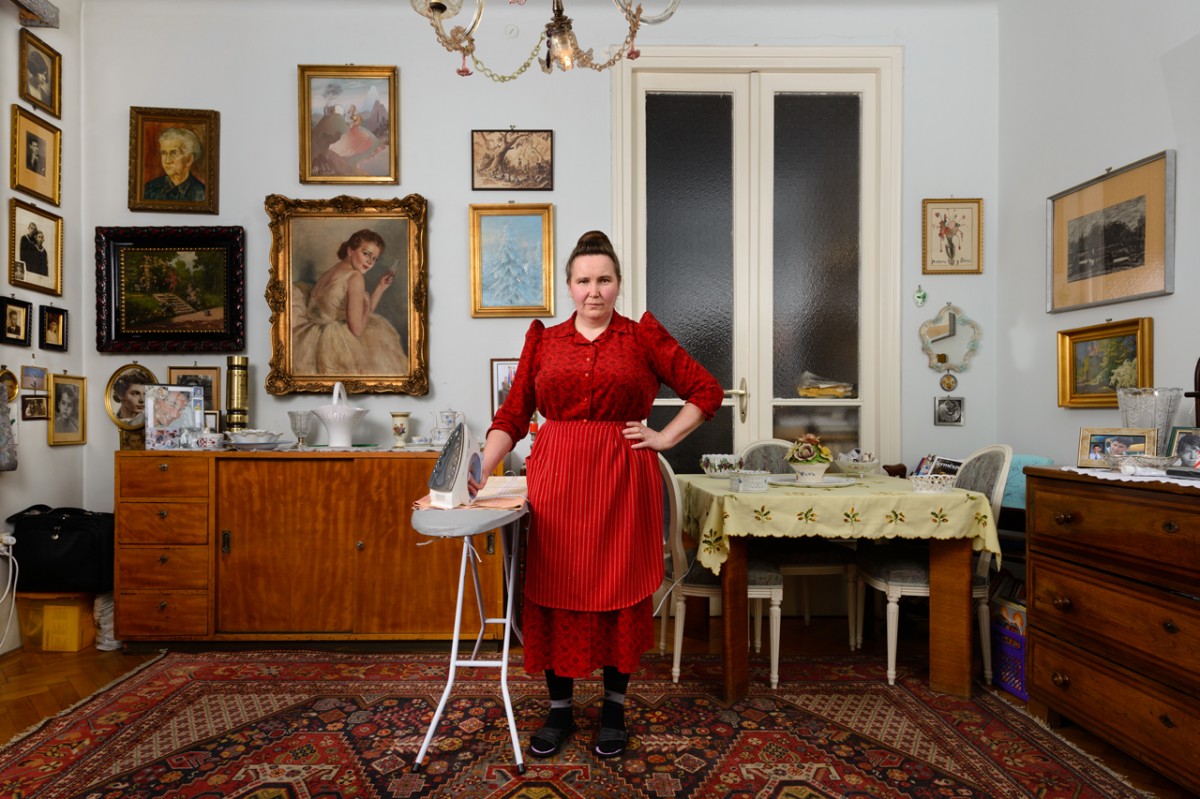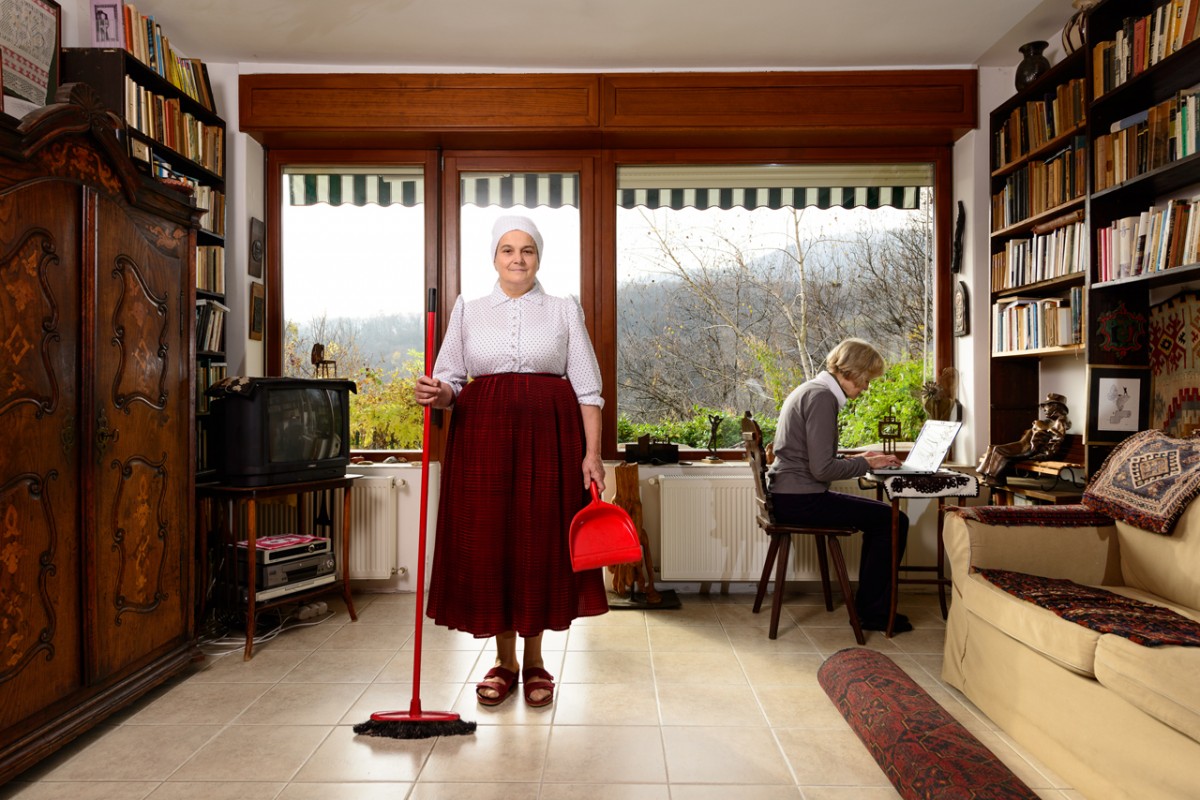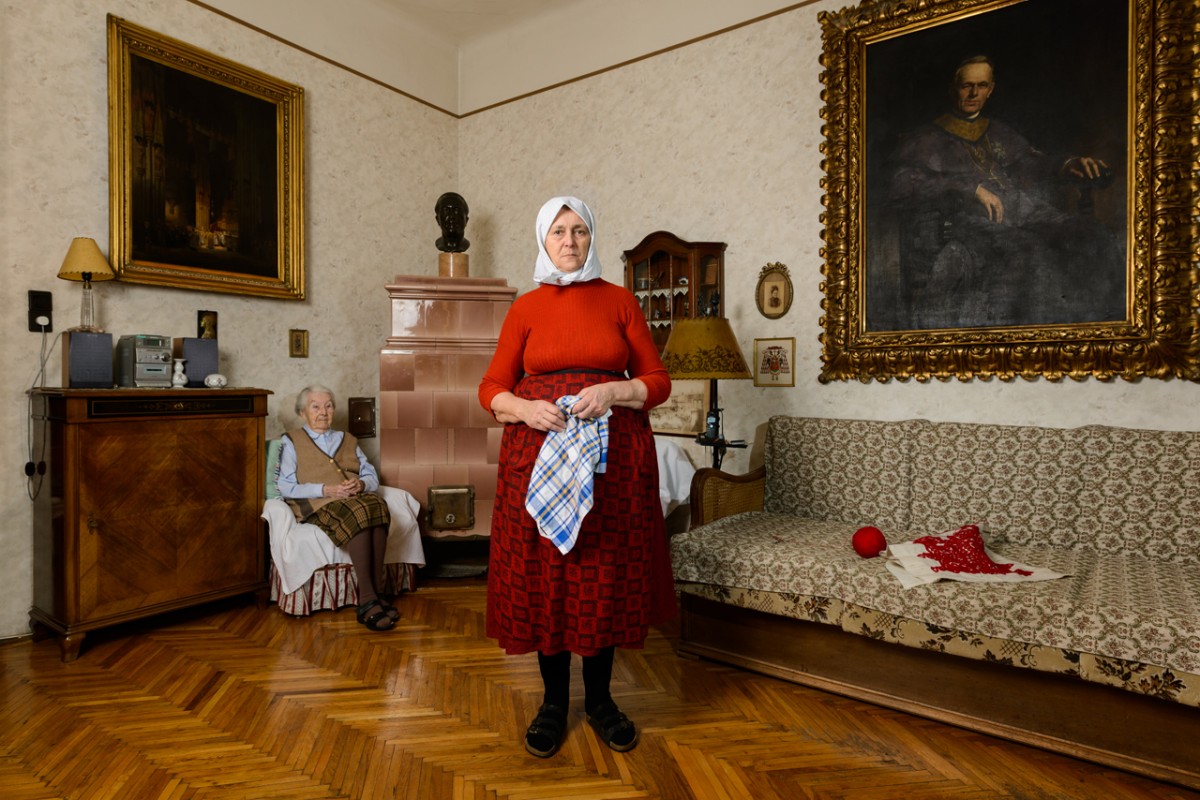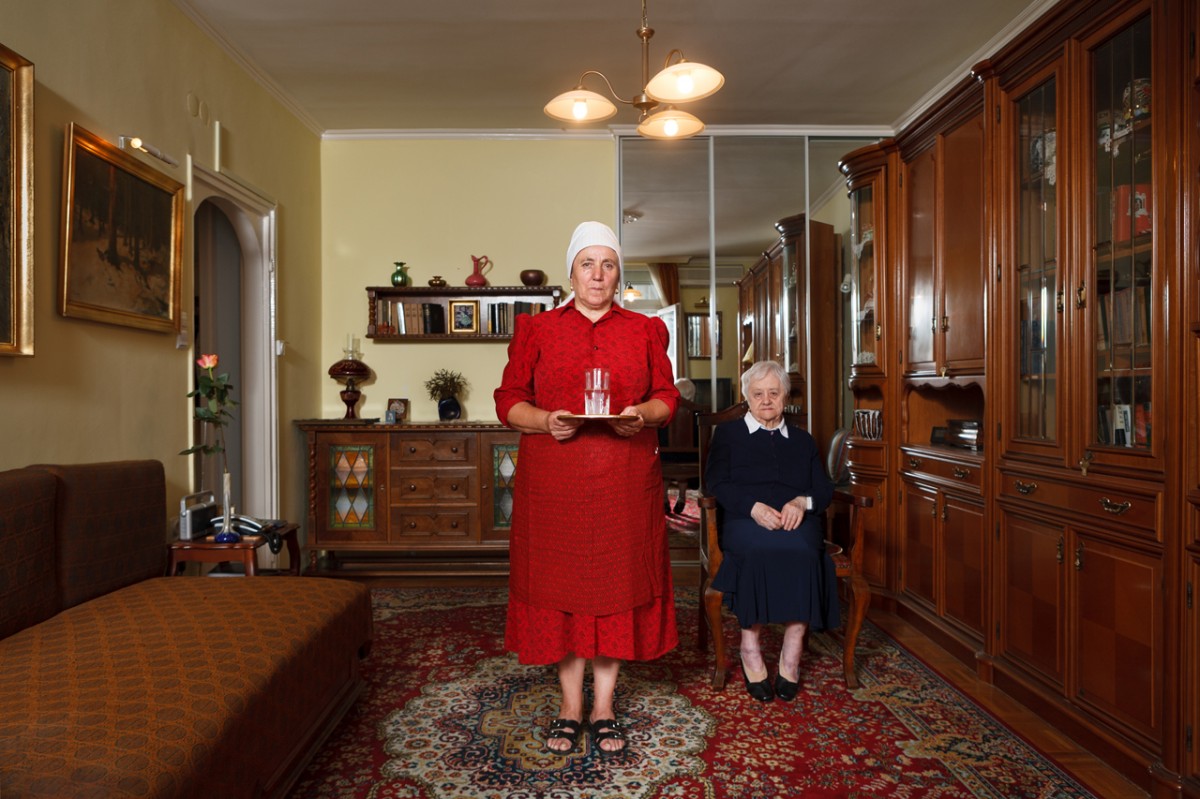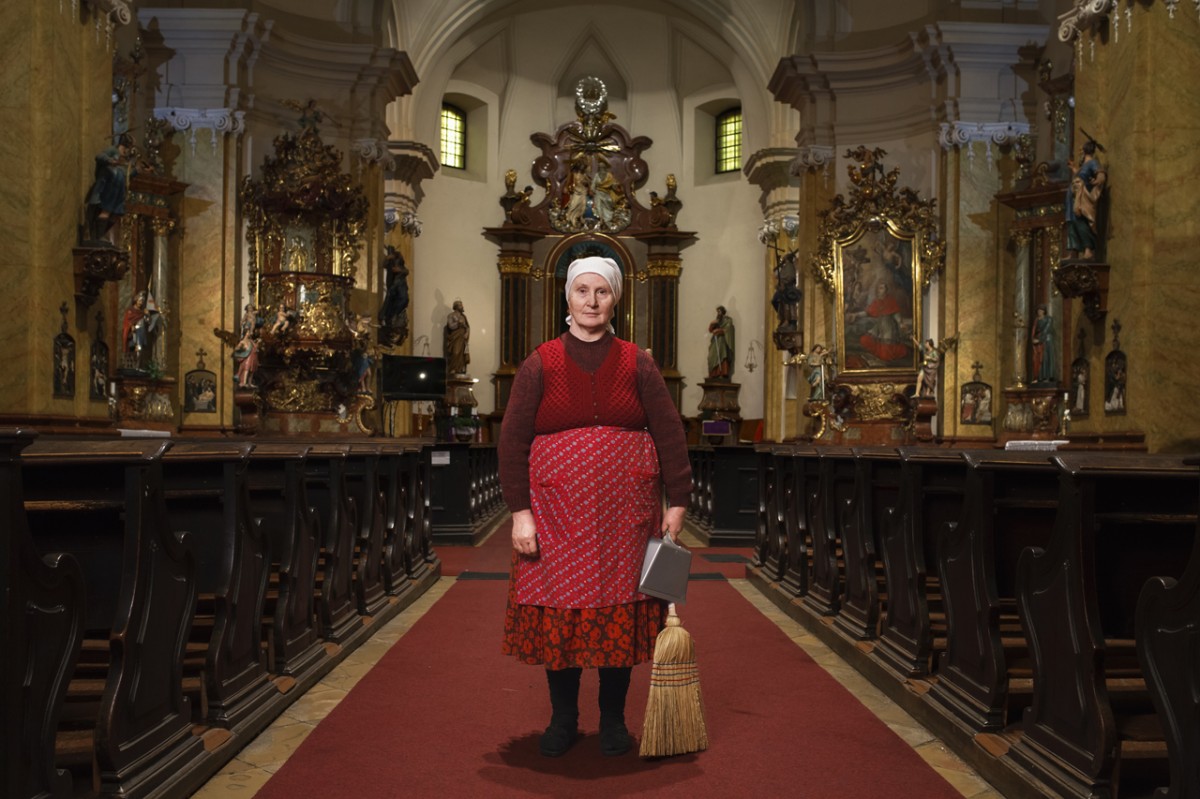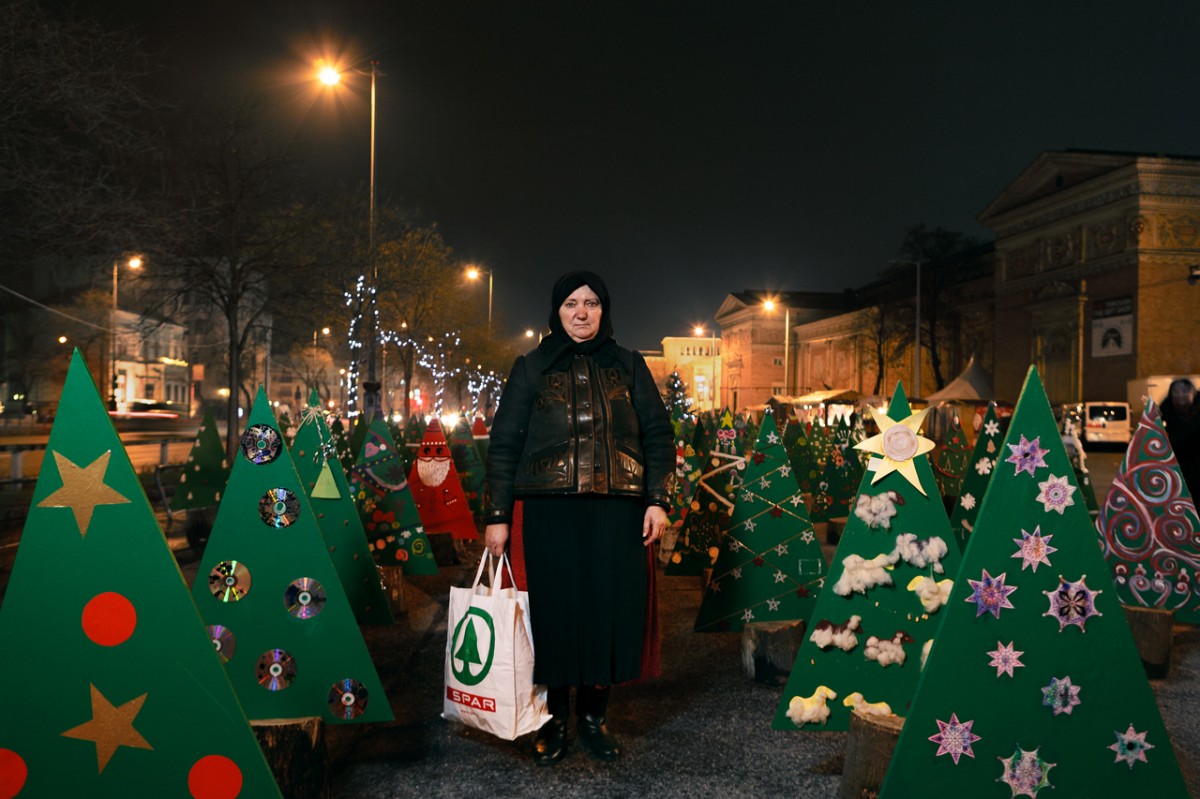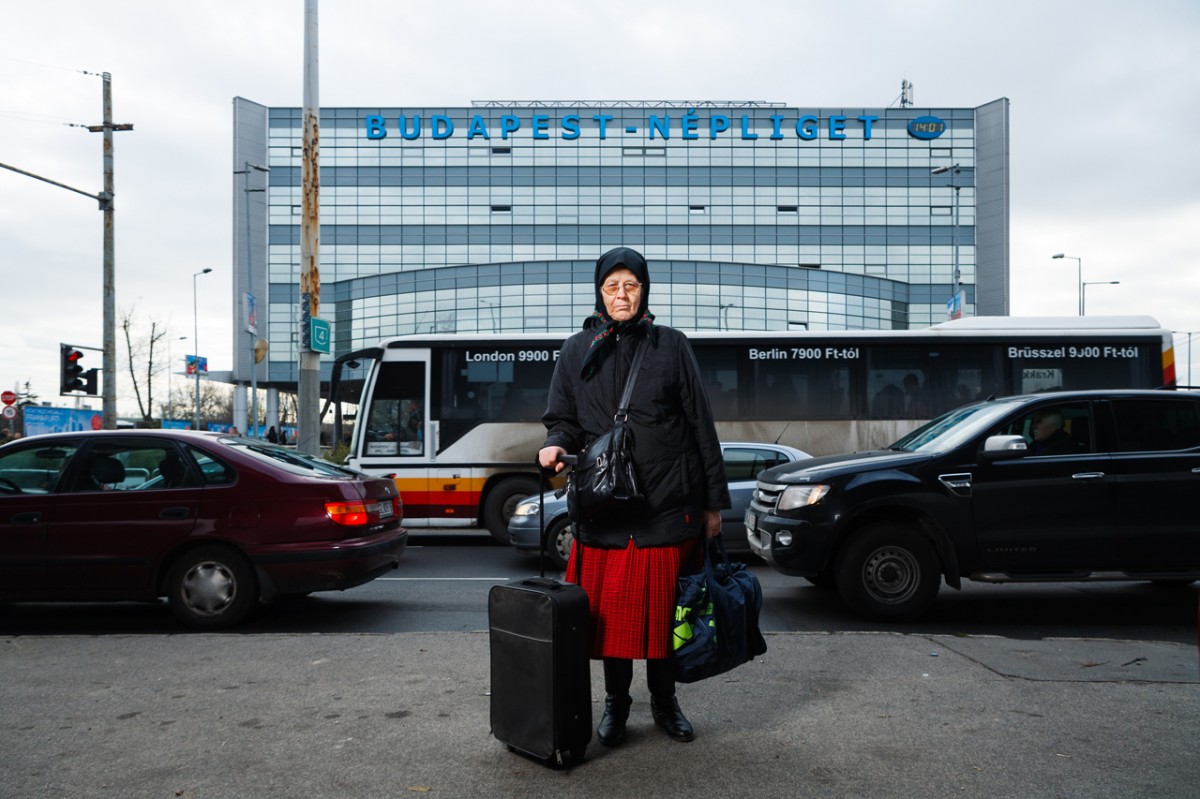PÉTER KORNISS
Péter Korniss is one of the determinative figures in contemporary Hungarian photography. When interpreting his œuvre it transpires that he thought not only in terms of photographic series but also of social processes. The components of his work complement each other, or rather, are composed of parts built on to each other.
His themes are formed by the twentieth and twenty-first centuries, and his mode of expression is the inner logic of photography. His exhibition embraces fifty years and reveals the career of a photographer open to the changes in society which he constantly analyses, later creating from this his own pictorial world.
The Past 1967-1978
Péter Korniss’ first photographs were taken in Transylvania, Hungary and the surrounding countries. During the 1960s and 1970s, despite the rigid political and economic circumstances, in certain regions of Eastern Europe several villages preserved their traditional peasant culture both in their everyday dress and their customs on festive occasions. In the 1970s a generation grew up in Hungary with no visual experience of this world, least of all of Transylvania, which at that time counted as a politically particularly sensitive region.In the period between the two world wars in Hungarian photography traditional peasant culture became the main theme in the trend known as the “Hungarianizing” style. This popular trend gave an idealized picture of the peasant world both in its approach and its compositions.
It was this traditional world that Korniss wanted to show and preserve. Characteristic of his pictures is the artist’s strong emotional bond with his subjects, to whom he returned several times over the years in order to see how their lives were turning out.
These photographs were the subject of his first solo exhibition (Hall of Arts, Budapest, 1974) and his first books (Heaven’s Bridegroom, 1975; Passing Times, 1979).
Related Objects ...
The Guest Worker 1979-1988
At the end of the 1970s Péter Korniss’ interest turned towards the weekly commuting workers. Gradually becoming redundant in agriculture, this significant layer of society found permanent work in towns, and returned home to their families in the village only for the weekend. At that time more than a quarter of a million people lived like this in Hungary.
This may seem to mark a change in Korniss’ œuvre, but in fact his sensitivity for social issues was already evident in his book Passing Times.
Korniss’s work on commuters started with photographing a brigade of unskilled workers from the village of Tiszaeszlár, which virtually offered him the basic themes: the peasant past, the urban work, the workers’ hostel, the family back home in the village and the weekly train journey. However, after a year and a half a member of the brigade, András Skarbit, commuting between Tiszaeszlár and Budapest, became the main character. As Korniss wrote in the book’s prologue, “However strange it may sound, the camera chose András Skarbit for itself”.
This decade of work was exhibited in the Hall of Arts, Budapest in 1988 and published in book form under the title The Guest Worker.
On the Train
In the 1970s more than a quarter of a million commuting labourers worked in Hungary. Breaking away from agriculture, they took on work in town, and returned home only in the weekends to see their families who remained in the village. Such was the life of András Skarbit from Tiszaeszlár, who became an unskilled labourer in Budapest.
Related Objects ...
The Family
András Skarbit worked for the Metropolitan Gas Company for 25 years, commuting between Tiszaeszlár and Budapest. He retired in 1986, and died in 1999, at the age of 74. His wife, Erzsike, died in 2013. They are both buried in the cemetery in Tiszaeszlár, and their house is standing empty ever since.
Related Objects ...
At the Workers’ Hostel
András Skarbit worked for the Metropolitan Gas Company for 25 years, commuting between Tiszaeszlár and Budapest. He retired in 1986, and died in 1999, at the age of 74. His wife, Erzsike, died in 2013. They are both buried in the cemetery in Tiszaeszlár, and their house is standing empty ever since.
Related Objects ...
At Home in the Village
András Skarbit worked for the Metropolitan Gas Company for 25 years, commuting between Tiszaeszlár and Budapest. He retired in 1986, and died in 1999, at the age of 74. His wife, Erzsike, died in 2013. They are both buried in the cemetery in Tiszaeszlár, and their house is standing empty ever since.
Related Objects ...
In the City, Budapest
András Skarbit worked for the Metropolitan Gas Company for 25 years, commuting between Tiszaeszlár and Budapest.
Related Objects ...
The Couple
In the 1970s more than a quarter of a million commuting labourers worked in Hungary. Breaking away from agriculture, they took on work in town, and returned home only in the weekends to see their families who remained in the village. Such was the life of András Skarbit from Tiszaeszlár, who became an unskilled labourer in Budapest.
The Trailer
In the 1970s more than a quarter of a million commuting labourers worked in Hungary. Breaking away from agriculture, they took on work in town, and returned home only in the weekends to see their families who remained in the village. Such was the life of András Skarbit from Tiszaeszlár, who became an unskilled labourer in Budapest.
Related Objects ...
The farmer, Tiszaeszlár
In the 1970s more than a quarter of a million commuting labourers worked in Hungary. Breaking away from agriculture, they took on work in town, and returned home only in the weekends to see their families who remained in the village. Such was the life of András Skarbit from Tiszaeszlár, who became an unskilled labourer in Budapest.
Related Objects ...
At Work, in Budapest
In the 1970s more than a quarter of a million commuting labourers worked in Hungary. Breaking away from agriculture, they took on work in town, and returned home only in the weekends to see their families who remained in the village. Such was the life of András Skarbit from Tiszaeszlár, who became an unskilled labourer in Budapest.
Related Objects ...
A Life of Hard Work
András Skarbit worked for the Metropolitan Gas Company for 25 years, commuting between Tiszaeszlár and Budapest. He retired in 1986, and died in 1999, at the age of 74. His wife, Erzsike, died in 2013. They are both buried in the cemetery in Tiszaeszlár, and their house is standing empty ever since.
The Change 1989-2016
After 1989, Péter Korniss again returned to the familiar region he had often visited in the past. It was easy for him to take up his personal bonds, the friendships and connections formed through photography, but he was confronting a transformed pictorial world.The political and economic landslide taking place in Eastern European countries had altered the life of villages, and gave new themes for photographers. In the houses, clothing and habits of the villages, a gradual change had got underway, and, along with the appearance of globalization, created new content and means of expression. At the same time the easy passage between frontiers, and the free drift of the work force increased the number of people taking up work far from their home for financial reasons: the guest workers.
In this period, Korniss began to take staged and lit photographs. The studio lights, tripod and bigger camera resulted in his subjects looking as they would have in the old days of photography, and his compositions often evoke the mood of pictures taken in studios at the beginning of the twentieth century. But whereas the former generations went to local photographers, Korniss created his own pictorial world in the homes of his subjects.
He first showed these pictures in 1998 at a solo exhibition in the Hall of Arts, Budapest. At the same time they were published in his book titled Inventory
Related Objects ...
Tradition 2004-2012
In this series Péter Korniss was interested in the survival of tradition - so he turned his attention to Nativity Players. The rich dramatic folk custom has been preserved in many regions of the Carpathian Basin. Performers of the Nativity play go round from house to house in villages at Christmas time, acting out the story of the birth of Jesus in prose and song. Since 2006, every year a get-together of Nativity Players has been organized in Debrecen, where village groups from far and wide perform the well-known folk custom at various venues in the city.
Korniss made use of the meeting of the authentic village performers and the urban environment for his staged photography. Pictures in this style can be seen in the photography of the 1980s and its influence is still felt in today’s photo art.
Korniss applies this mode of expression here for the first time. He takes staged pictures of Nativity Players in settings of modern urban life. By rearranging the elements of reality, he “confronts” tradition with the present.
Related Objects ...
In Town 2007-2012
Péter Korniss newest series - being shown for the first time at the present exhibition - concerns the generation that we saw fifty years ago in the old dance house. We can even discover some figures who features in both series.
Parallel with the gradual disappearance of the traditional peasant world, Transylvanian women seeking work in Budapest became a characteristic form of labour migration. House cleaning, caring for the elderly or the sale of articles of folk art guarantees some return which is primarily spent on the family back home. Many of the women working in the Hungarian capital as guest workers still wear their traditional costume. At the same time the sociological thought raised by the series shows that the Transylvanian women in the photographs have not been able to break out of their role in society.
In these new pictures Korniss continues the photographic approach of his Nativity Players series, but in contrast to the latter’s slightly stand-offish tone, here he focuses on the women’s personalities. The personal mood of the series reminds us of the artist’s bonds going back decades, his personal credence and empathy.
Related Objects ...
Péter Korniss
Péter Korniss was born in Kolozsvár (today Cluj-Napoca, Romania) in 1937 and his family moved to Budapest in 1949. In 1955 he began his studies at the Faculty of Law at the Eötvös Lórand University, but he was expelled on account of his involvement in the 1956 Revolution. Following that he worked as an unskilled labourer at various places, he got a job at the Budapest Photography Co-operative until 1961. After acquiring his photographer’s diploma, from 1961 to 1991 he worked for the women’s weekly called Nők Lapja (Women’s Magazine), first as a photo reporter, later as the picture editor. In 1967 he started photographing in Transylvania, returning regularly for decades to preserve the traditional peasant culture and way of life, and to document the processes of change. In 1962 he began to photograph folk dancing with the Bihar Dance Ensemble, from 1975 to 2010 he was the photographer of the Honvéd Dance Theatre, and from 1981 to 2000 of the International Dance Theatre Company in Amsterdam. From 1977 he was a member of the World Press Photo jury for three years, and from 1983 he was voted onto the international advisory board of the W. Eugene Smith Memorial Fund.
Selected Books
Heaven’s Bridegroom. Budapest: Corvina, 1975
Passing Times. Budapest: Corvina, 1979
Land of Red Cloud. Budapest: Corvina, 1982
Ősi karavánutak földjén. Budapest: Képzőművészeti Kiadó, 1985
The Guest Worker. Budapest: Mezőgazdasági Kiadó, 1988
Inventory Pictures from Transylvania. Budapest: Officina Nova-Kreatív Műhely, 1998
Nativity Players. Budapest: Helikon, 2006
Attachment. Budapest: Helikon, 2008
Selection of Solo Exhibitions
Kluuvi Gallery, Helsinki, Finland, 1972
Hall of Arts (Műcsarnok), Budapest, Hungary, 1974
Rutgers University, New Brunswick, USA, 1977
Musée Nicéphore Niépce, Chalon-sur-Saône, France, 1980
Canon Photo Gallery, Amsterdam, Holland, 1983
Casa de la Cultura, Quito, Ecuador, 1985
Hall of Arts (The Guest Worker), Budapest, Hungary, 1988
Canon Photo Gallery, Amsterdam, Holland, 1989
Aspekte Galerie, Münchner Volkshochschule, Munich, Germany, 1990
Hall of Arts, (Műcsarnok), Budapest, Hungary, 1998
Muzeul Național al Țăranului Român, Bucharest, Romania, 1999
Staromestská radnice, Prague, Czech Republic, 1999
Istituto Cultural Cabanas, Guadalajara, Mexico, 1999
Kulturien Museo, Helsinki, Finland, 2000
Hovedbibliotek, Coppenhagen, Denmark, 2000
National History Museum of Latvia, Riga, Latvia, 2000
Estonian National Museum, Tartu, Estonia, 2000
M. Žilinskas Art Gallery, Kaunas, Lithuania, 2000
Galerie le Pont Neuf, Paris, France, 2001
Art Museum of Cluj-Napoca, Romania, 2010
Skotia Gallery, Santa Fe, New Mexico, USA, 2010
Galerie LS LandskronSchneidzik, Nuremberg, Germany, 2011
Várfok Gallery, Budapest, Hungary, 2012
New Kriterion Gallery, Miecurea Cíuc, Romania, 2014
MODEM, Debrecen, Hungary, 2016
Prizes
Balázs Béla Prize, 1974
Merited Artist Distinction, 1983
Prize for Hungarian Arts, 1995
Order of Merit of the Hungarian Republic, 1996
Kossuth Prize, 1999
Joseph Pulitzer Memorial Prize, 2004
Prima Primissima Prima Prize, 2004
Hungarian Heritage Prize, 2010
Kölcsey Memorial Plaque, 2013
Artist of the Nation Award, 2014
Works in Public Collections
Déri Museum, Debrecen, Hungary
Getty Research Center, Los Angeles, USA
Laczkó Dezső Museum, Veszprém, Hungary
Hungarian Museum of Photography, Kecskemét, Hungary
Hungarian National Gallery, Budapest, Hungary
Musée Nicephore Niépce, Chalon-sur-Saône, France
National Science and Media Museum, Bradford, England
Credits
Curator: Baki PéterCo-curator: Jerger Krisztina
Exhibition organisation: Bába Veronika, Vajda Eszter
Exhibition design and Concept: Jerger Krisztina
Exhibition graphics: Gerhes Gábor
Installation: KIÁLL Kft.
Financial tasks: Cser Enikő
Legal and registration tasks: Galambos Henriett, Borbély Boglárka, D’Albini Zsuzsanna, Gippert Adrienn
Exhibition texts: Baki Péter
Translation: Szász Elizabeth
Copy-editors: Borus Judit, Kardos Eszter, Ruttkay Helga
Film editing and Interviews: Rieger Johanna
Translation of film texts: Szász Elizabeth
Museum education: Cser Judit
Installation: Bence Bálint, Berta Zsolt, Buru György, Deli Dávid, Erdmann Árom, Hargitai Ottó, Hefkó Márton, Kecskés Tamás, Kiss Ádám, Kovács Imre, Lakatos Gyula, Macska Attila, Mészáros József, Moró Zoltán, Pintér Norbert, Szabó Balázs, Vásárhelyi N. László, Weimann Tamás
Conservation: Szepesvári Ildikó, Zelenák Orsolya
Communication and marketing: Bellák Gábor, Lévay Zoltán, Miklós Léna, Schlett Anna, Szabó Dávid
New Media Group: Barcsik Tibor, Halász Rita, László Zsófia, Rieger Johanna, Szesztay Csanád
Public relations: Csuka Zsuzsanna, Gottfried Júlia, Ruzsits Ágnes, Zimányi Erika
Art object safety: Ágoston Gábor, Kállai István, Zsoldos László
Technical team: Agárdi Gyöngyi, Fazekas Gábor, Gecsei József, Györe Vince, Horváth István, Horváth János, Imre Zoltán, Kispál Sándor, Kosaras András, Nagypál Sándor, Nemcsics Csongor, Sándor Attila, Szutor László, Tokai Ibolya, Uhlarik János
Sponsors: Kégli Balázs
© Gerendai Gyűjtemény
HUNGART © 2017
© Korniss Péter
© Magyar Fotográfiai Múzeum
© MNG
© MTVA
© Szalóky Gyűjtemény
© Várfok Galéria, Budapest
Lead sponsor: Gránit Bank
Major sponsor: MOL
Cooperational partners: LG, Hilton Budapest
